Airbound: Delivering Abundance
On one-rupee delivery; moving atoms like bits; and a Bangalore startup's quest to engineer the world's most efficient aircraft
Hey folks👋
A warm welcome to the 1040 new Tigerfeathers subscribers who’ve joined since our last piece, about ‘Everyday Auras’ and the economics of India’s fragrance boom.
This week is all about Auradynamics Aerodynamics. If you have a (very) long flight on the horizon and you’re looking to learn about “India’s most audacious hardware company”, you’ve come to the right place👇
This edition of Tigerfeathers is presented in partnership with…Airbound
“This isn’t about where the industry is at, and this isn’t about what the market is demanding. This is about exploring the limits of possibility and building tech at the very edge. That’s where the future will meet us.”
Airbound is an aerospace company based in Bangalore that wants to make logistics ‘invisible, instant, and affordable’.
To achieve that, their team has been obsessed with building ‘the best aircraft physically possible’. That may sound like classic startup-speak, but in practice they’ve gone to absurd lengths to create what is today the most efficient autonomous vehicle (i.e. drone) that’s ever existed.
Their idea is to use these hilariously-lightweight-but-sturdy drones as part of an aerial delivery fleet, potentially bringing down the emissions and costs associated with last-mile delivery to (near) zero.
The company envisions this technology as something akin to the Internet for the physical world, fundamentally reimagining how we move atoms from Point A to Point B.
They see it decongesting our cities and erasing the distance penalty for people in every postcode in India, as well as reshaping our relationship with the items that make up our daily lives (RIP to our refrigerators).
Last mile delivery is their first milestone (starting with the transport of blood samples and critical medical supplies in the outskirts of Bangalore), but Airbound wants to eventually scale its technology to move a significant chunk of the world’s freight, and then its people - quickly, cheaply and safely through the sky over the coming decades.
The company’s grand ambitions bely the fact that it began as a modest side-project by its founder Naman Pushp when he was still a 15-year-old high school student in mid-2020, bored at home during the pandemic.
Naman and I met for the first time at the start of this year, and in April, we got to chatting about officially working together to tell the story of Airbound for Tigerfeathers, to coincide with the closure of their $8.65 million seed funding round, announced earlier this week.
It’s meant that for the last five months, I’ve spent several hours with the Airbound team to understand what they’re building, why it matters, and why I should have paid more attention in Physics. If you’re looking for a reason to dive into today’s piece, here are three:
Airbound is that rare Indian startup that - *if* it succeeds - will change how the world works. They are not competing for market share as much as they’re attempting to add a new layer to the infrastructure of global transport.
Everyone at the company is hyper aware that any version of a successful outcome hinges solely on whether their aircraft can do what they say it can do, which means this is at its heart a story of novel engineering - a case study on employing first-principles thinking to invent technology that doesn’t yet exist.
To increase the odds of a successful outcome, Naman doesn’t just want to create a breakthrough aircraft, he wants to create a culture that makes breakthroughs inevitable. It’s why Airbound is fixated on becoming a magnet for India’s most cracked engineers - a place to tackle the hairiest technological problems without the burden of accepted convention. (If you’re a talented engineer languishing somewhere that barely scratches the surface of your abilities, Airbound is hiring)
As always - *nervous laughter* - this is not a short piece. In fact, not only is this a very long story, but it’s also a deeply technical one, that takes plenty of scenic detours through topics like drones, aviation, aerodynamics, composites, and fat turtles.
For reasons that will become apparent, and to do justice to both the high stakes and long odds of Airbound’s success, this story is one that we felt merited the time and investment to tell properly. It will broadly cover the origin of the company; their technical breakthroughs and ambition; the use case they’re solving for; and what the world will look like if they’re successful.
We hope you enjoy reading as much as we enjoyed writing. With that, let’s get to it.
What is a loonshot?
A loonshot is something nobody has dared to do before. A goal so ambitious that you don’t even know if its possible. Landing on the moon was a loonshot, building reusable rockets was a loonshot, fusion is a loonshot. More commonly referred to as moonshots, I prefer the term loonshot because it highlights the necessary stupidity a bit better.
What’s a mini-loonshot?
Well it’s just like a loonshot, but smaller. A mini-loonshot is building something extremely out of distribution, but at nowhere near the scale of a real loonshot. They maintain the spirit of ‘something only a loon would build’.
The reason nobody has built a loonshot before is because it’s too hard. Nobody builds mini-loonshots because there’s no fucking reason to.
- via an unpublished blogpost on Naman’s Substack (circa 2022)
The current Guinness World Record for the largest origami dragon ever made was set in August 2020 by Paul Frasco and Shrikant Iyer, two professional origamists based in the United States. It was 12 feet 8.75 inches long, 6 feet 6.5 inches high, and 3 feet 11.5 inches wide. It took two days and 50 folds to construct, and was the culmination of a decade-long quest to push the boundaries of large-scale paper sculpture.
It is also currently mired in controversy (sort of).
The real, unofficial record for the world’s largest origami dragon was set by a trio of teenagers a couple of years later in Cambridge (UK) at what was essentially a summer camp for mathematically gifted high schoolers from around the world. The group included the founder of Airbound, who had by then gotten used to balancing his fledgling drone project along with his regular school commitments. Alongside his two campmates, the trio had managed to fold a piece of paper the size of a basketball court into an imposing rendition of a sleeping firedrake.
Without a roadmap to follow, the uncrowned record-holders reckoned with otherwise trivial tasks that became grizzly when dealing with the enhanced scale of their task. Like figuring out how to fold a sheet of paper that was six times their height; or how to stop the wind from crumpling paper that perpetually threatened to tear under the weight of its own mass.
All of this tinkering went apparently unrewarded. Their efforts would be left off the pages of (Guinness-branded) history because they had to vacate the premises only a few hours after their project was completed, leaving only a scant gathering of administrators as the only other living witnesses to their achievement. Naman would attempt to break the record again on his own a few weeks later, getting 80% of the way there on his second attempt.
As to why anyone would put themselves through the thankless 30-hour task of building a giant origami dragon twice - an exercise that came with no tangible outcome, no real scope for future CV embellishment, no hope for street cred from cynical high schoolers, and “no value to society” - we return to Naman’s blogpost from which the opening quotes to this piece have been extracted, appropriately titled ‘The World’s Largest Origami Dragon And Why You Should Build Cool Shit’:
“Building a giant paper dragon is not, in fact, a loonshot (shocker). But it does bear striking resemblance to one, a mini-loonshot, if you will.
The key similarity between mini-loonshots and real loonshots is that they’re both extremely out-of-distribution experiences. Just like how you can’t predict the challenges you’ll face while developing a novel aircraft, you can’t predict the challenges you’ll face while attempting a 3-part collapse of a sheet of paper 6 times as tall as you. Solving these challenges isn’t something you can find through extensive research or study, rather it is a test of your ability to find creative solutions to problems with limited resources.
This is the hardest part about any loonshot, how do you prepare for the unknowable? It’s a skill. A skill you can only develop by solving unsolved problems. Again, and again, and again. There’s no pattern, no reproducible trick, because if there was, it wouldn’t be a loonshot anymore. But after a point, you learn, and get better at dealing with unknown unknowns.
Building a true loonshot project is hard, takes years, and has a very low chance of success. But if it succeeds, the payoff is huge and you can change the world. You’re not going to change the world with a mini-loonshot, but you can change your life. Things that make a task ‘cool’, ‘crazy’, or ‘fun’, also make it significantly more meaningful. And if the cost is just a couple of weeks lost instead of a couple of years, that seems quite worthwhile to me.
You should definitely build a loonshot, if you can. But if not, go out and build cool shit because…well, why not? Maybe it’ll be the start of something really big.”
To quote so liberally from someone else’s blogpost (one the author himself describes as cringe) in the opening sections of one’s own essay might seem like the pinnacle of editorial sloth, like cobbling together a bunch of Youtube clips to serve as the opening scene for your movie. Even so, I think those paragraphs represent a pretty solid introduction to Naman Pushp. Although they’ve been written in service of the challenge of building a never-been-done-before dragon, they may as well be outlining the principles that yielded a never-been-done-before drone.
As it turned out, in the same summer of 2020, as the Guinness World Records team was unjustly crowning a team of pretenders as origami-dragon-luminaries, Naman was embarking on another mini-loonshot. This project, as he presciently wrote, was indeed the start of something really big.
1. Origins
Naman was born in Mumbai, but his early childhood followed the rhythms of his parents’ banking careers. After a brief stint in Hyderabad and a longer stopover in Malaysia (spanning his elementary years), his family returned to India where he finished his schooling at the Dhirubhai Ambani International School in Mumbai.
“Malaysia was actually a great counterbalance to India,” he recalls. “School there has this collaborative environment. You don’t get gold stars for doing well in class. They reward behaviour and effort more than raw academic performance, which is a contrast to the zero-sum, scarcity mindset of Indian education. I had classmates who would tell me to keep my correct answers to myself if the teacher asked for them, as if we needed to protect our IP in the 8th grade! It helped that I was more interested in understanding fundamentals than getting good grades, though it probably didn’t hurt to shift to a more competitive environment as I got older.”
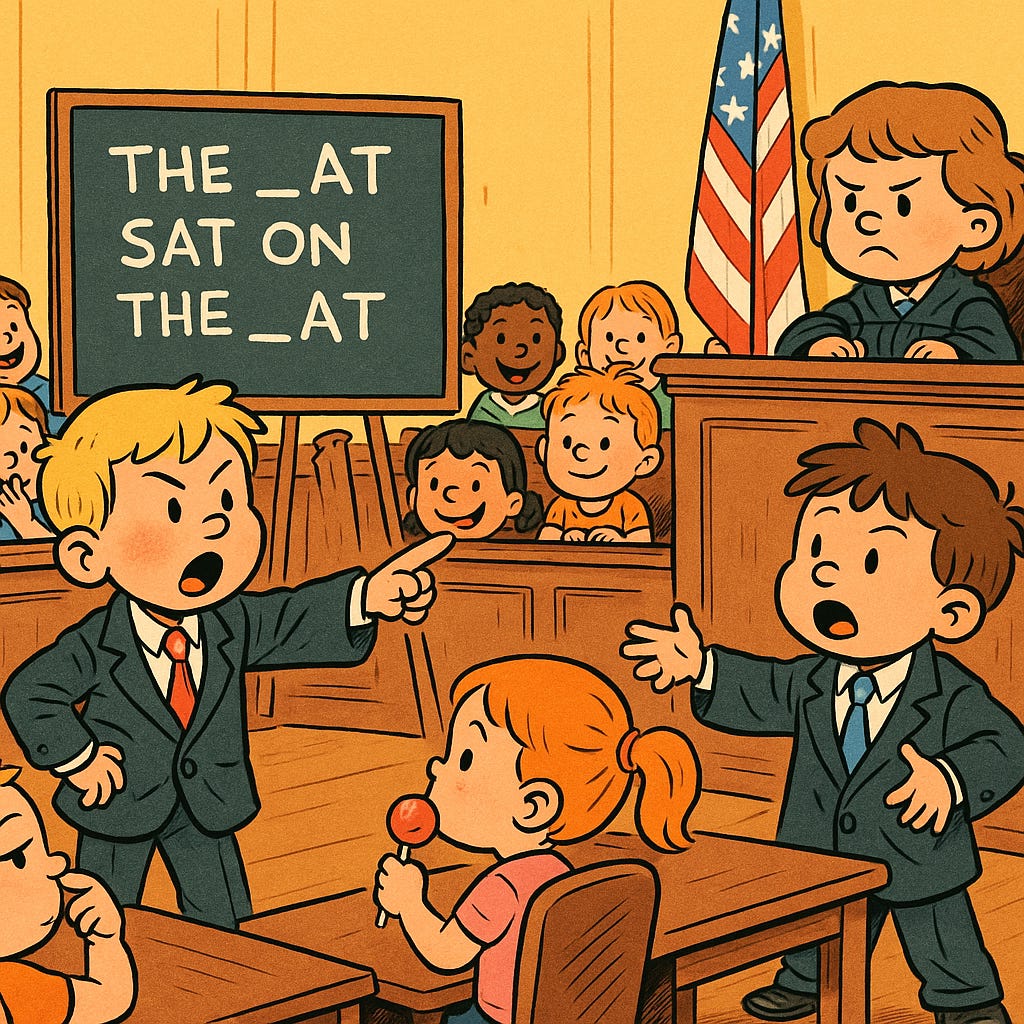
The one constant across continents was his fascination with robotics. It started in fifth grade in Malaysia, and deepened back in India when he began working with proper materials, equipment and software as part of various school competitions - chief amongst them the World Robot Olympiad (WRO) and FIRST Robotics Competition (FRC). Despite being a “hardcore computer science kid” throughout his school life, it was hardware that had captured his heart and curiosity by the 10th grade.
“To me what’s exciting about hardware is that you really can do anything,” Naman says. “You’re not limited by what can run on a laptop, you’re only limited by physics. Sure, I loved software too. I loved scratch programming. I made a bunch of computer games, zombie shooters, things like that. But software is more abstract. There’s something intuitive about working with your hands that makes it so satisfying. That grind-y aspect of spending hours just to drill a few holes in a metal box perfectly, the fact that even just doing basic alignment of components is so hard, it’s addictive. Plus robotics is a mix of so many different cool things. I knew that’s where I wanted to plant my flag.”
He had begun to work on independent robotics projects outside of school by the 9th grade. But it was the summer after his 10th grade Board exams - the summer of 2020 - that cemented his transition from curious high-schooler to zealous engineer.
2. 2020
I would imagine that for most kids that had just finished a milestone set of exams who suddenly had their summer break coincide with a pandemic-induced stay-at-home mandate, that period would represent a historic opportunity to do nothing.
“I did a lot of that too,” Naman says. “I used to be an introvert, so lockdown suited me just fine. I enjoyed the free time. But eventually the idea of rewatching Suits for the fifth time didn’t seem so appealing anymore, so I decided to do something more useful.”
Instead of baking banana bread or trading JPEGs like a normal person in 2020/21, Naman’s lockdown montage looked a little different. “I took the opportunity to level up. I started doing these online courses and certifications for things like Fusion 360 [product design and manufacturing software] and Ansys [engineering simulation software] and a few others. Eventually I got bored of that too. I didn’t want to just do some empty CV-padding. I wanted to put this knowledge to good use.”
The pandemic was fortuitously an ideal opportunity for a homebound engineer to do just that. Over the course of 2020, much of the scientific world was putting their heads together and nationalities aside to solve the most vexing problems posed by the virus. Various communities had emerged to corral funding and design-input for emergency medical solutions. One of these communities was called Helpful Engineering, which welcomed contributors of all shapes and sizes.
“I started getting involved in all these different projects, to design PAPR respirators and things like that,” says Naman. “I got to interact with amazing founders and scientists and all these experienced engineers from around the world. Everyone was super helpful and encouraging, and it kind of gave me the confidence that I could build something worthwhile too.”
In July 2020, Helpful Engineering launched a worldwide hackathon to solicit software and hardware ideas to combat the spread of the virus. Submissions included plans for intelligent masks, 3D printed ventilators, patient data processing models, home testing kits, etc. Naman threw his name in the hat, attempting to tackle the problem statement of ‘contactless delivery’. He wanted to explore how last mile logistics systems could be kept intact in a time of social distancing and a prevailing fear of interpersonal proximity. It led him down a rabbit hole to see if anyone in the world had made any headway on that front, particularly if any company had succeeded in removing humans from the delivery equation.
“That research eventually led me to Zipline. And that research eventually led me to drones.”
3. 12 Years / 60 Minutes
The next big thing will start out looking like a toy - Chris Dixon (2010)
I’ll bet that for most of you reading this, when you think of drones, the image that pops into your head is this thing:
For most people, I assume that drones sit in a scarcely visited corner of your brain somewhere on the continuum between novelty and nuisance. Your association with a drone in real life is likely either as the toy your tech-enthusiast cousin brought back from their summer holiday abroad (that’s currently gathering dust in a cupboard somewhere), or it’s the device responsible for ruining that sweet moment between the bride and groom at the wedding you went to last December (courtesy of the most unholy whirring noise that has ever been set upon human ears). I feel you.
But that’s on the consumer front.

When it comes to the industrial side of things, there’s little doubt that ‘drones’ - i.e. flying vehicles that operate either autonomously or without a human pilot on board - have begun to make a tangible impact on our world. These aerial robots feature prominently in areas like mapping, agricultural monitoring, crop spraying, warehouse automation, power line inspection, search and rescue operations, defence, border security and maritime patrol etc.
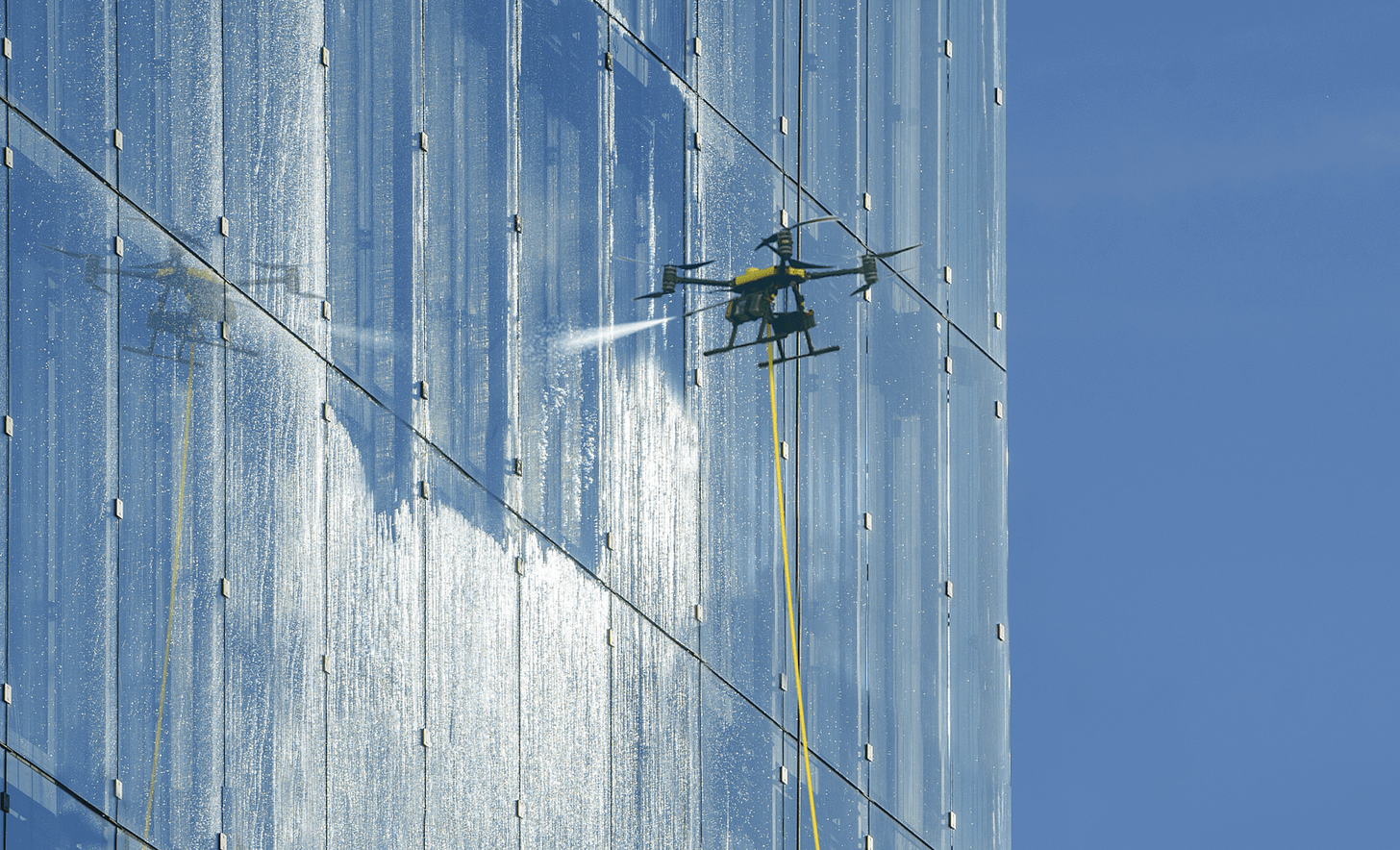
Each of those areas is undoubtedly important to the smooth functioning of our world, but mostly sit outside the rumble of our daily routines. On the consumer side, while you can argue that aerial photography is a legitimate use case (for hobbyists and filmmakers alike), it wouldn’t be controversial to suggest that drones have yet to meaningfully change how the vast majority of people go about their daily lives.
That assertion would be unremarkable, were it not for the bombastic prognostications made about the future prospects of consumer drone technology in the early the 2010s, specifically by one of the high priests (maybe the Highest Priest?) of consumer tech.
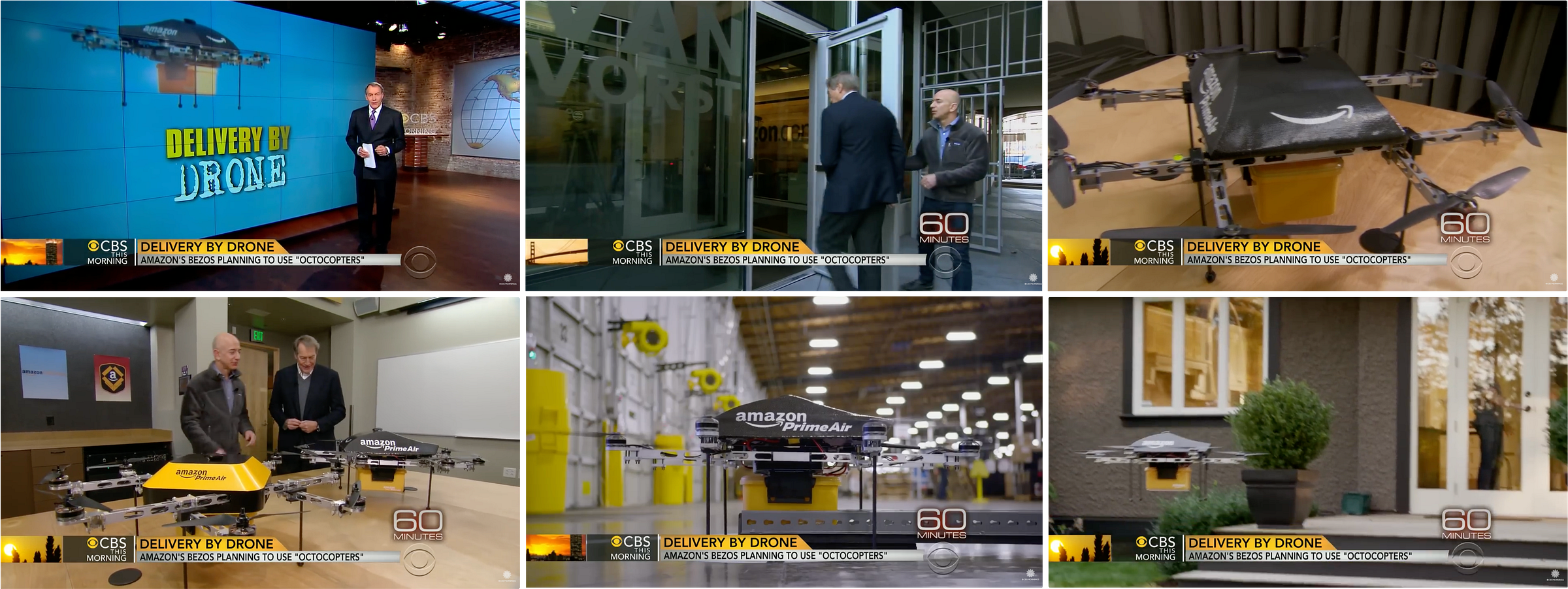
On 1st December 2013, Amazon founder and then-CEO Jeff Bezos had a surprise in store for correspondent Charlie Rose during the recording of their 60 Minutes interview. After the formal sit-down, Bezos walked Rose into a mystery room at the Amazon campus in Seattle and revealed a secret R&D project: ‘Octocopter’ drones that would fly packages directly to your doorstep in 30 minutes. “I know this looks like science fiction - it’s not,” Bezos proclaimed.
The drones he revealed were of a similar species to the camera drones we touched on in the paragraphs above. Amazon’s bespoke versions were designed to carry five pounds of weight (covering 80% of the packages they deliver), and capable of flying upto a 10 mile radius from Amazon’s fulfilment centres. They were electric-powered (and thus emission free), and would autonomously deliver packages to customers based on GPS-guided coordinates.
Assuming the company could surmount the formidable obstacles of safety, reliability and regulation, Bezos estimated that ‘Prime Air’ would be fully live within the following 4-5 years. With that, he had unwittingly fired the starting gun for the era of drone delivery - set to be the killer use case for consumer drone technology in the decades to come.
But 12 years later, if you peek outside your window today, chances are you won’t see fleets of flying robots in the sky, dutifully delivering people’s packages. Despite spending billions of dollars on the programme, Bezos’ vision never quite panned out. Due to a combination of technical challenges, financial constraints, glaring safety issues (and multiple crashes), regulatory backlash and public outcry, Prime Air has been a stop-start (but mostly stop-ish) effort at best. Despite an upgraded drone model released just last year, it’s still operating only on a trial basis in a handful of locations in Texas and Arizona in the United States.
To be fair to Amazon, they’re not alone in their struggles. The past decade has seen a parade of drone delivery hopefuls crash into the same wall: regulators choosing to play safe, technology that wasn’t quite ready for prime time, and math that simply refused to work.
So, returning to our original timeline. If, like Naman, you were looking for a model of a successful drone delivery operation in 2020, to use as inspiration for a ‘contactless delivery’ use case, Amazon would represent a dead end. And if Amazon - i.e. the Beyoncé of last mile innovation - couldn’t figure out how to transport stuff using drones, you might reasonably assume that no one else could either.
Enter Zipline.
4. Bundle In The Jungle
It would be disingenuous for us to embark on a piece about drone delivery without first spending some time talking about Zipline.
Zipline is to drone delivery what Iron Man is to the Marvel Cinematic Universe. It’s the thing that proved this thing could work - at scale. It was the first entity to crack the code, as the (American) company that legitimised the domain of autonomous aerial logistics.
So why haven’t you heard of it? Why isn’t it as ubiquitous a name outside (and even inside) of America as other emerging tech heavyweights, the same way Waymo is for self-driving cars or Neuralink is for brain-computer interfaces? Well, the simple answer is that despite being born in the Western world, the company’s most profound impact has been thus far felt in Africa.
Zipline emerged from a cauldron of Silicon Valley ambition and global health necessity. It was founded in 2014 by Keller Rinaudo-Cliffton, Keenan Wyrobek, and William Hetzler - a trio whose backgrounds spanned robotics, automation, and aviation. The company’s foray into drone delivery was sparked by a sobering discovery during field research in Tanzania, where they encountered tale after tale of unfortunate deaths that could have been prevented by timely access to blood, antivenom, and other medical supplies.
Spurned by regulatory sluggishness in the US, Zipline’s breakthrough came in 2016 when the Rwandan government signed a deal with the company to facilitate emergency blood deliveries to regional hospitals outisde the nation’s capital. The aerial route allowed them to bypass Rwanda’s sordid road infrastructure, which was largely unpaved and often treacherous. Today, more than 75% of blood deliveries in Rwanda outside of Kigali are done by Zipline drones, and academic studies have shown a >50% reduction in infant and maternal mortality where its service operates, and a >60% reduction in both blood wastage and vaccine stockouts.

The company today has expanded its medical drone delivery service to other countries in Africa including Ghana, Nigeria, Kenya and Côte d’Ivoire. Since commencing operations in the continent, they’ve now flown over 120 million autonomous miles across 1.5 million+ individual flights around the world. Today their network serves 5,000 hospitals and health facilities across eight countries, delivering everything from blood to antivenom to vaccines and cancer medications, embodying its self-professed status as “the largest commercial autonomous system on Earth”.
After proving its technology in geographies and use cases with the most pressing requirements for faster alternative transport (with zero human-related safety incidents recorded in over ten years), Zipline has made headlines in 2025 with its moves closer to home.
After years of regulatory hurdles, a newly progressive US Federal Aviation Administration (FAA) has been forthcoming in its blessing of Zipline (and other companies) to begin drone deliveries in suburban areas of the United States. That’s meant partnerships with the likes of Walmart, Panera Bread, Sweetgreen, Cleveland Clinic, Chipotle and others to deliver everything from retail items to medical essentials to hot coffee to fresh burritos directly to people’s homes.
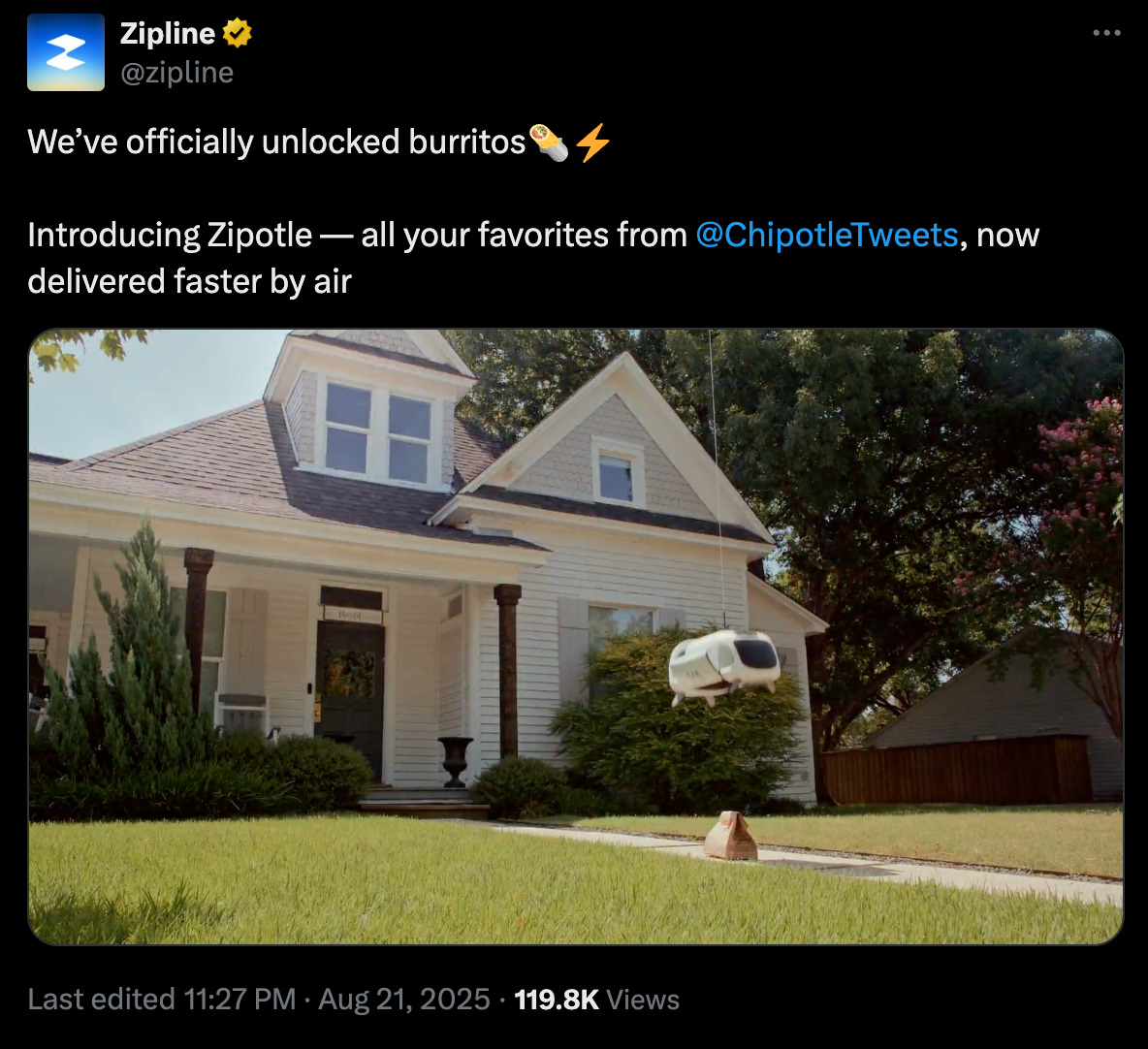
As it burrows deeper into the world of on-demand convenience in America after first solving for critical services in Africa, perhaps Zipline’s greatest achievement is in simply normalising the idea of drone delivery for its customers. What once seemed like science fiction has been quietly and painstakingly transformed into operational reality through millions of successful deliveries across multiple continents, proving that autonomous aircrafts can reliably move goods at scale.
In April 2023, the company raised a $330 million Series F at a $4.2 billion valuation, positioning it as the most valuable drone delivery company globally, and indicative of the size of the pie on offer for whoever can solve the fiendish puzzle of autonomous aerial logistics. “It’s very obvious that whoever succeeds will be one of the largest companies on Earth — bigger than United Parcel Service and FedEx combined,” says Zipline CEO Cliffton.
Unsurprisingly Zipline has been joined in this race by other global players like Wing (owned by Alphabet), Matternet, DroneUp, Manna, Flytrex and others (including Amazon) - each with its own unique model, configuration, specs and use cases - in a race to capture a slice of a market that is set to be worth $30.4 billion by 2029, with PwC projecting that the total value of goods delivered by drones could reach $65 billion by 2034…
…but we’ll put a pin in all that stuff for the moment. Now that you have some context, let’s return to where we left off.
5. So You Think You Can Drone?
My favourite sources of research for this piece were Naman’s blogposts from 2020 documenting his zero-to-one journey of starting Airbound in real time. They’re hilarious, partly because they were written for himself (vs any external audience), and partly because his tone alternates between prodigious engineer and regular self-deprecating 15-year-old kid reckoning with the task that lay ahead of him.
Exhibit A:
“…Whatever in the world made you think designing a novel drone would be a good idea when you have ABSOLUTELY NO EXPERIENCE in the domain. What do you mean you’ll just ‘figure it out’? This isn’t your cute little high school robotics competition.
…People have cobbled together flying doors before so just keep that as a benchmark and I’m sure you can make it marginally more aerodynamic than a porta-potty.
…Hey if it makes your ego feel any better, you can build the drone yourself. Call it a ‘novel innovation’, and you can continue telling yourself that you really did make a difference with what you built…Who knows, if you dedicate enough time to it, you could maybe even make something that’s not entirely useless…
…Fucking Amazon couldn’t do it and they think a child can
…As far as I’m aware, there isn’t exactly a YouTube tutorial on how to design your own drone from scratch.”
That last point turned out to be mostly untrue. If you’re curious enough and persistent enough, the Internet will eventually lead you to whatever it is you’re trying to find.

Internet resourcefulness was a more pronounced requirement in 2020, when there was no scope to access teachers (or teaching) offline.
“I basically immersed myself in this stuff,” Naman says. “I tried to learn everything I could about drones, about aviation, about aerodynamics, about composites etc. It turns out you can get a pretty good education on Youtube - like Real Engineering is an amazing resource. And whenever I reached a dead end, I would just hit up people that were actively working in these fields and ask them for advice. The physics of flight is pretty straightforward. At the end of the day it comes down to pretty basic physics, which isn’t hard to understand. What makes a difference though is how driven you are to ask the right questions.”
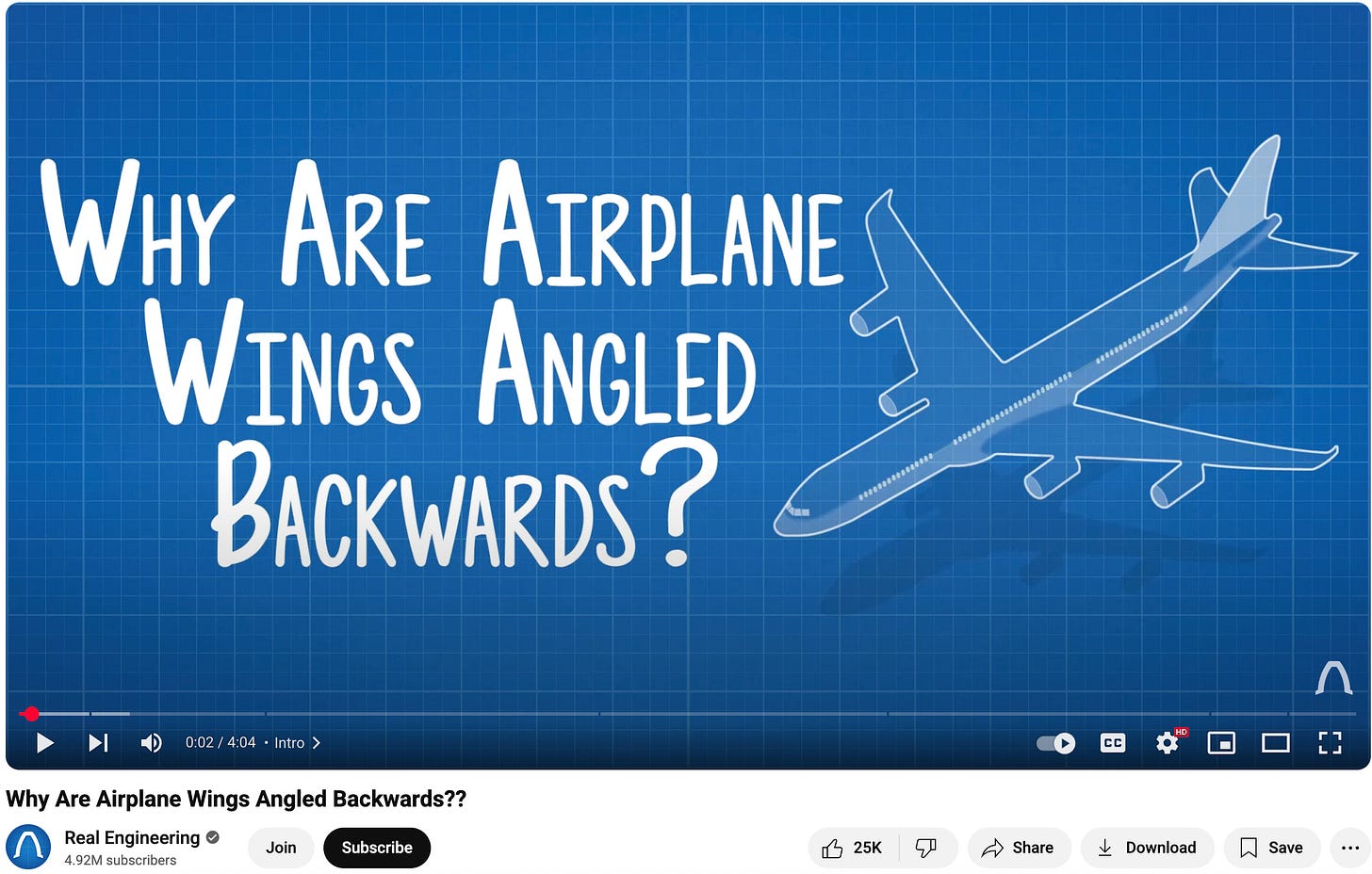
As he picked up the basics of making flight machines, Naman’s objective for the Helpful Engineering hackathon was to figure out the ideal configuration for a drone design that could fulfil the task of contactless delivery. For this he looked for inspiration across the global drone landscape, becoming acquainted with basic aerial photography drones as well as the heavier-duty machines being employed by Zipline in Africa. This introduced him to a broad taxonomy of drones, each saddled with a different set of trade-offs.
“Drones are actually a pretty diverse category,” he explains. “Clubbing all the different types of configurations under the umbrella of ‘drones’ is like describing both a bicycle and a Harley Davidson as a ‘two wheeler’. It doesn’t tell the full story. First you need to know where you’re trying to get to - then you pick the vehicle that’s best equipped to get you there.”
So when it comes to drones, what would you typically find in the garage?
6. Drones 101
At the most basic level, as we covered above, a drone is any flying vehicle that operates without a human pilot on board.
It includes everything from tiny palm-sized toys used for backyard photography to massive military aircrafts designed for long-range warfare. Broadly speaking, drones are classified by their different design and flight capabilities, of which - for the sake of simplicity - there are three main types:
1. Multi-rotor drones are what most people picture when they hear ‘drone’. These are powered by multiple spinning rotors (i.e. propellers) on top. The most common arrangement features four rotors, hence the colloquial name of ‘quadcopter’. They can hover stably in one spot and move in any direction, making them great for taking pictures or inspecting things up close. The downside is they drain their batteries quickly (because their rotors have to constantly keep spinning to keep them hovering in the air) and thus can’t fly very far.
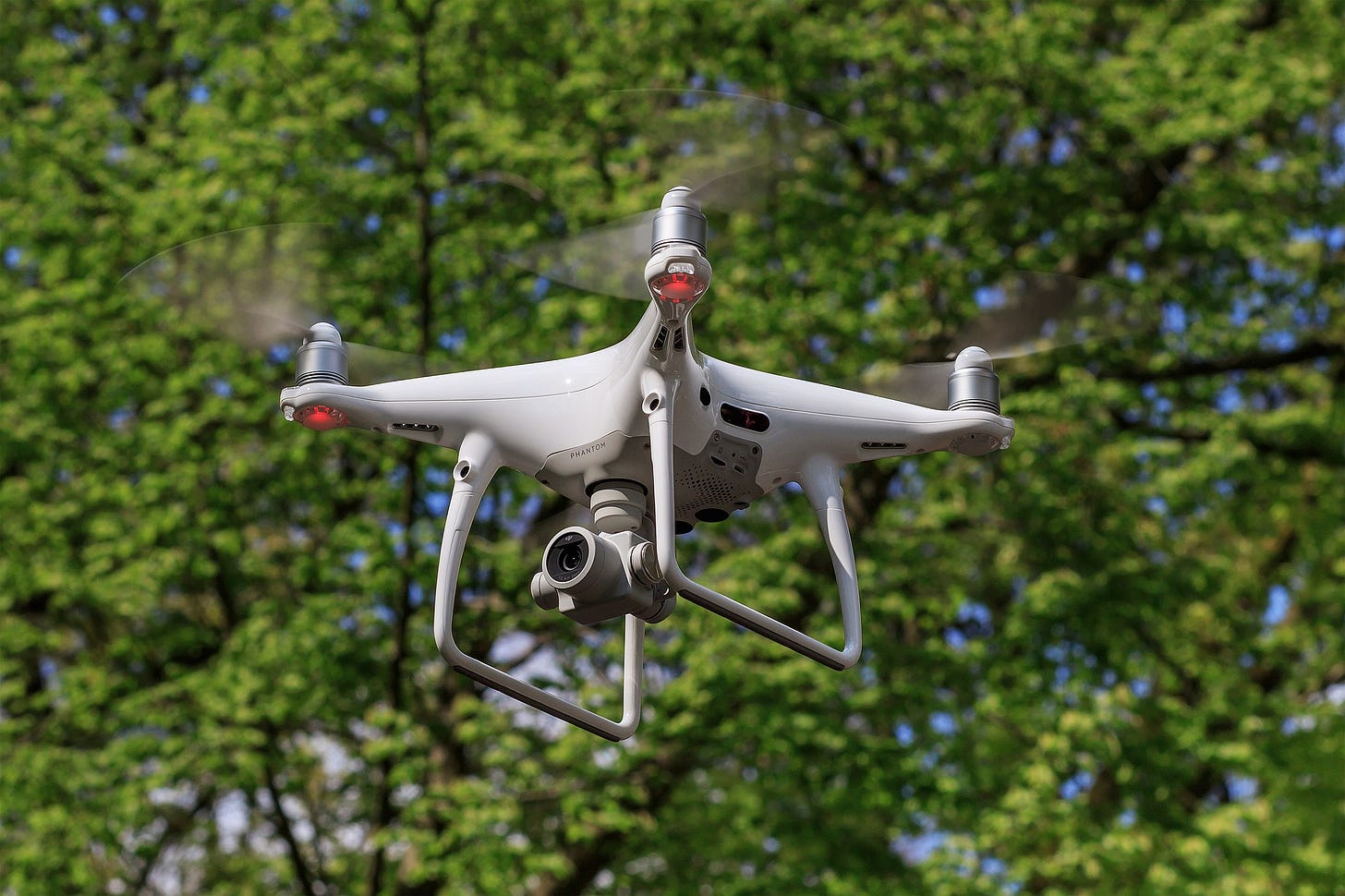
2. Fixed-wing drones look like small airplanes. They typically use an electric motor-powered propeller to push forward in the air. They require forward motion to lift off the ground, and need to keep moving forward to stay in the air, just like regular planes - their wings are shaped to keep them in the air during forward flight. They’re much more energy efficient than quadcopters and can fly long distances, but they need space to take off and land (like a runway or a catapult launch system), which makes them less flexible for everyday use.
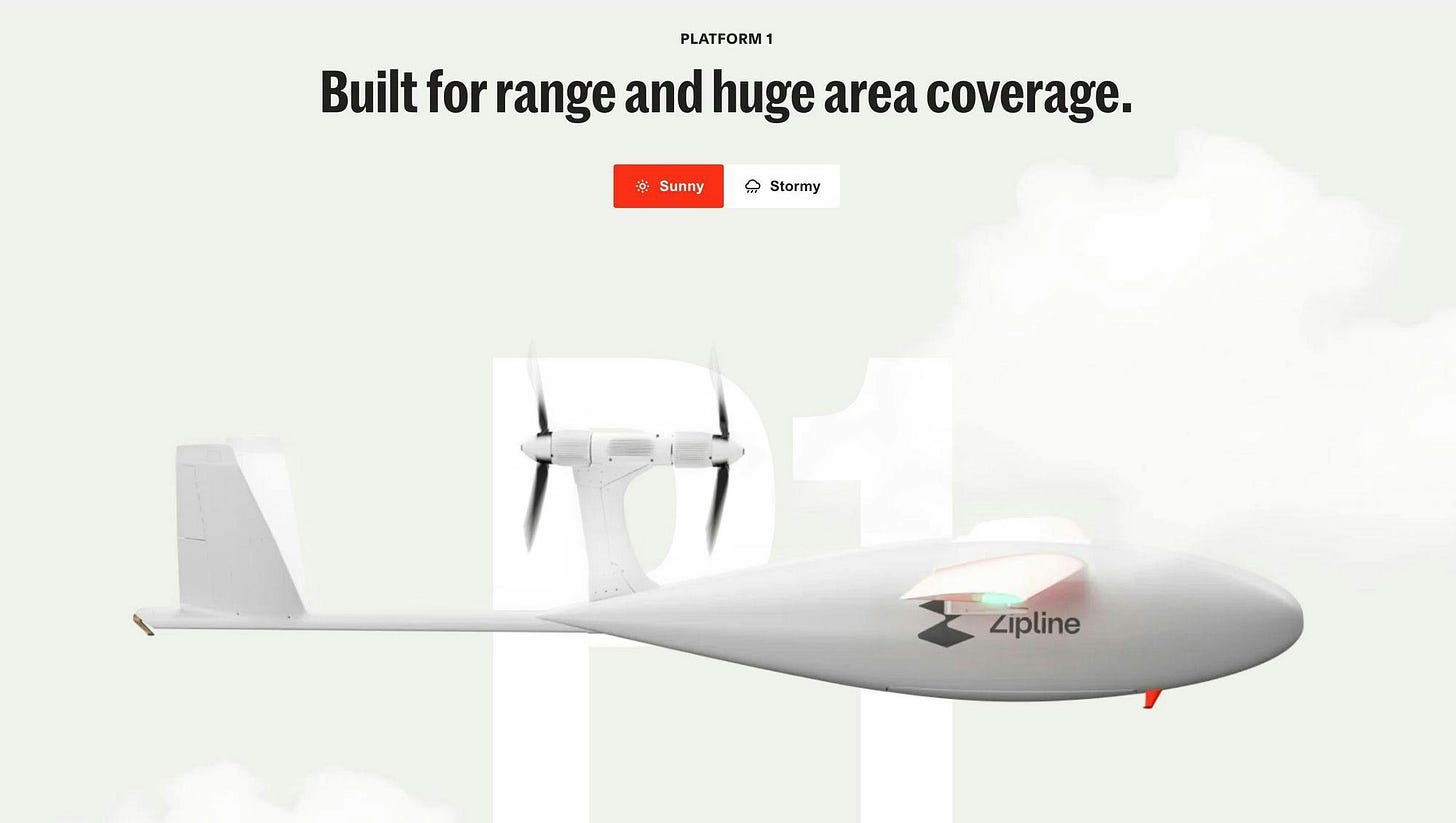
3. Hybrid VTOL (Vertical Take-off and Landing) drones aim to get the best of both - they can take off straight up like a helicopter but then fly efficiently like a plane. Some designs literally just mash the two together - taking a fixed-wing drone and sticking rotors on top (called a quadplane), while others use more creative approaches (like tilting the rotors or rotating the entire aircraft) to solving the problem of taking off vertically and then flying forward like a plane. VTOL remains one of the most challenging problems in aviation engineering because no single design has emerged as the clear winner.
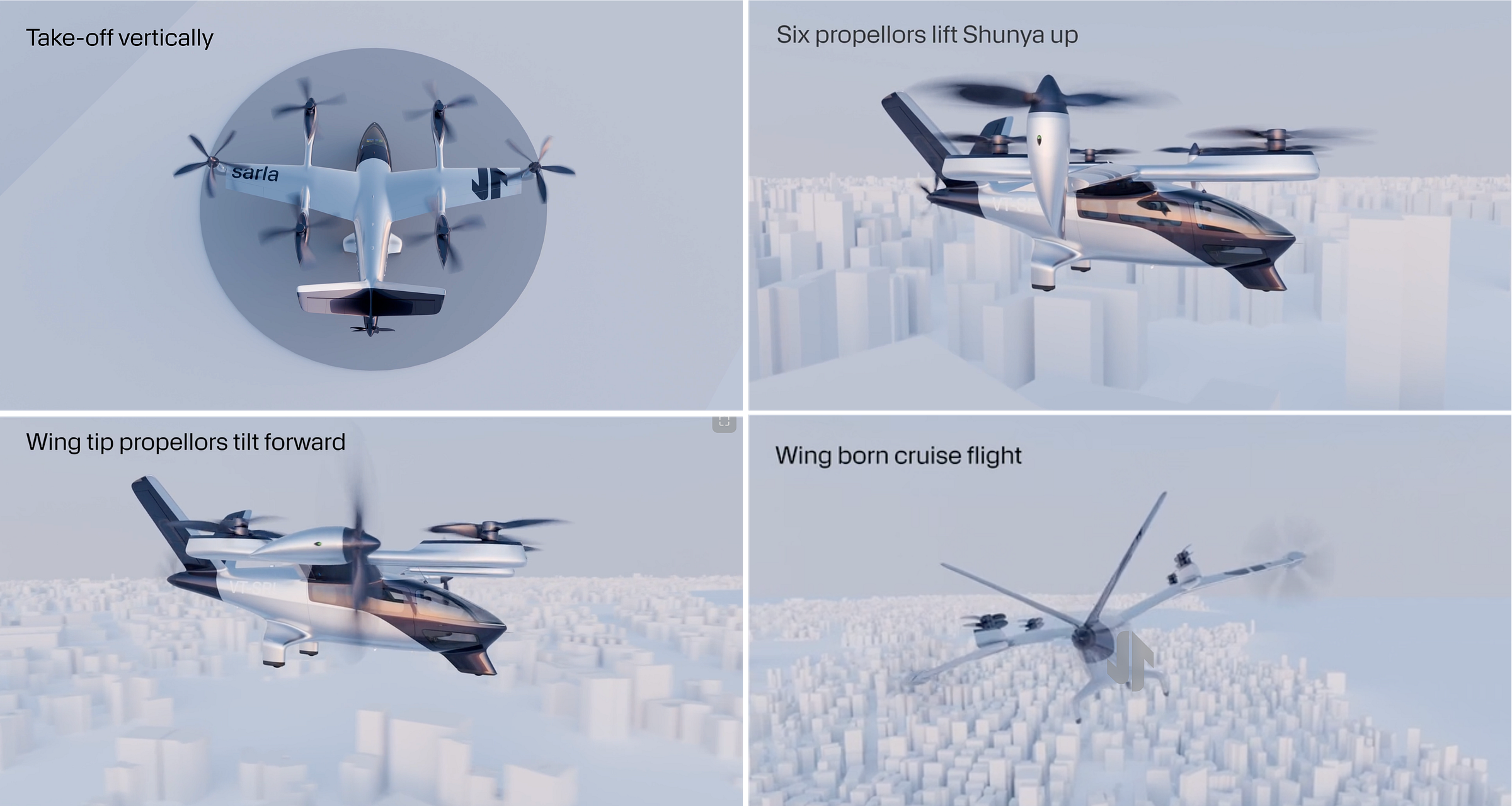
Each of these designs represents different engineering solutions to the same fundamental challenge: how to lift an object into the air and keep it there as efficiently as possible, or how to generate enough upward force to overcome gravity while minimising energy consumption.
To appreciate the design of Airbound’s eventual solution (and understand various terminology that will soon be slathered all over this piece) - it probably helps to know the basic physics of flight. If you’re an engineer or an aviation nerd, you can probably skip ahead to section 8. But for those of you who slept through Physics class, here’s a brief explainer on how things fly courtesy of our friends at…
7. The ‘How Things Fly’ Explanation Station
So…how do things fly?
We’ll start slow.
To keep things simple, we’ll explain this stuff using an aircraft for reference. (btw the plural of aircraft is also ‘aircraft’, not ‘aircrafts’, which is totally messed up, I know, but I didn’t make the rules).
Anyway, aircraft (and all things in general) fly by balancing four forces: lift, weight, thrust, and drag.
Lift is the upward force that keeps aircraft airborne.
Weight is gravity pulling the aircraft down. For flight to work, lift must equal or exceed weight.
Thrust pushes the aircraft forward. Engines or propellers create thrust by accelerating air backward, which shoves the aircraft forward.
Drag is air resistance fighting against forward motion. Everything from the aircraft’s shape, to how its parts are attached, to the texture of its surfaces, creates drag that engines must overcome.
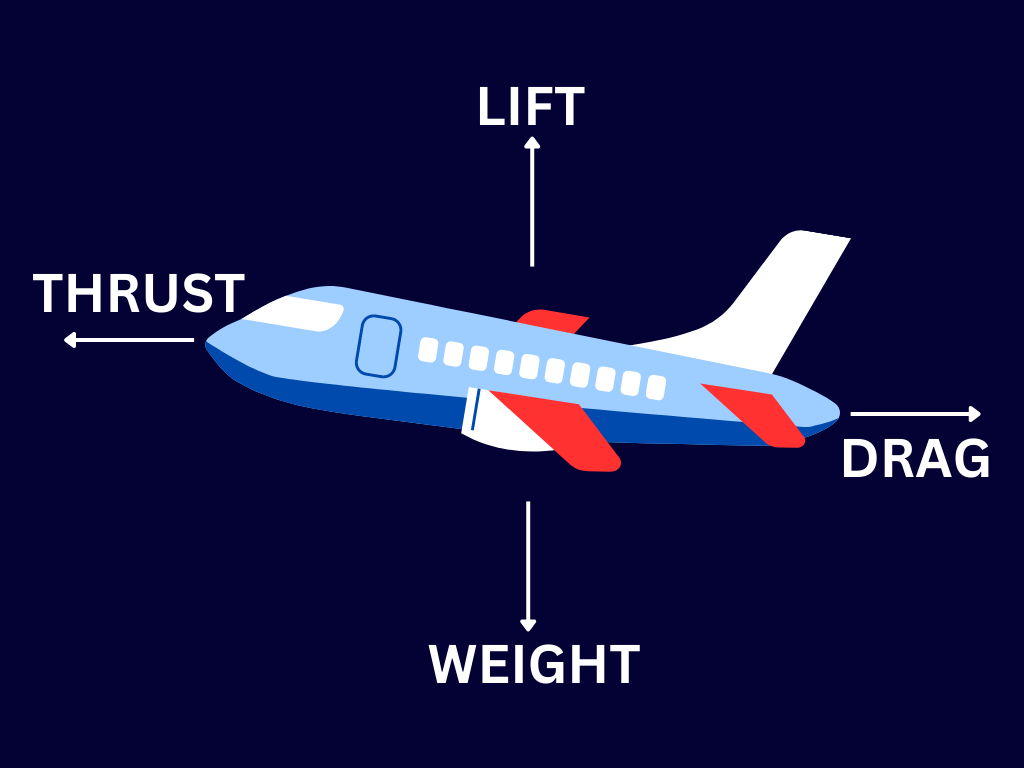
The key insight is that these forces balance each other out. When a plane speeds up, it gets more lift (more air flowing over the wings) but also more drag (more air pushing back against it). Pilots control this by using the throttle to go faster or slower, and by tilting parts of the wings to change how much lift they generate (via those little flaps you see from the window seat of your airplane).
The engineering challenge is designing aircraft that maximise lift and thrust while minimising weight and drag—a delicate calculus— which is why aviation engineers obsess over every gram and surface detail.
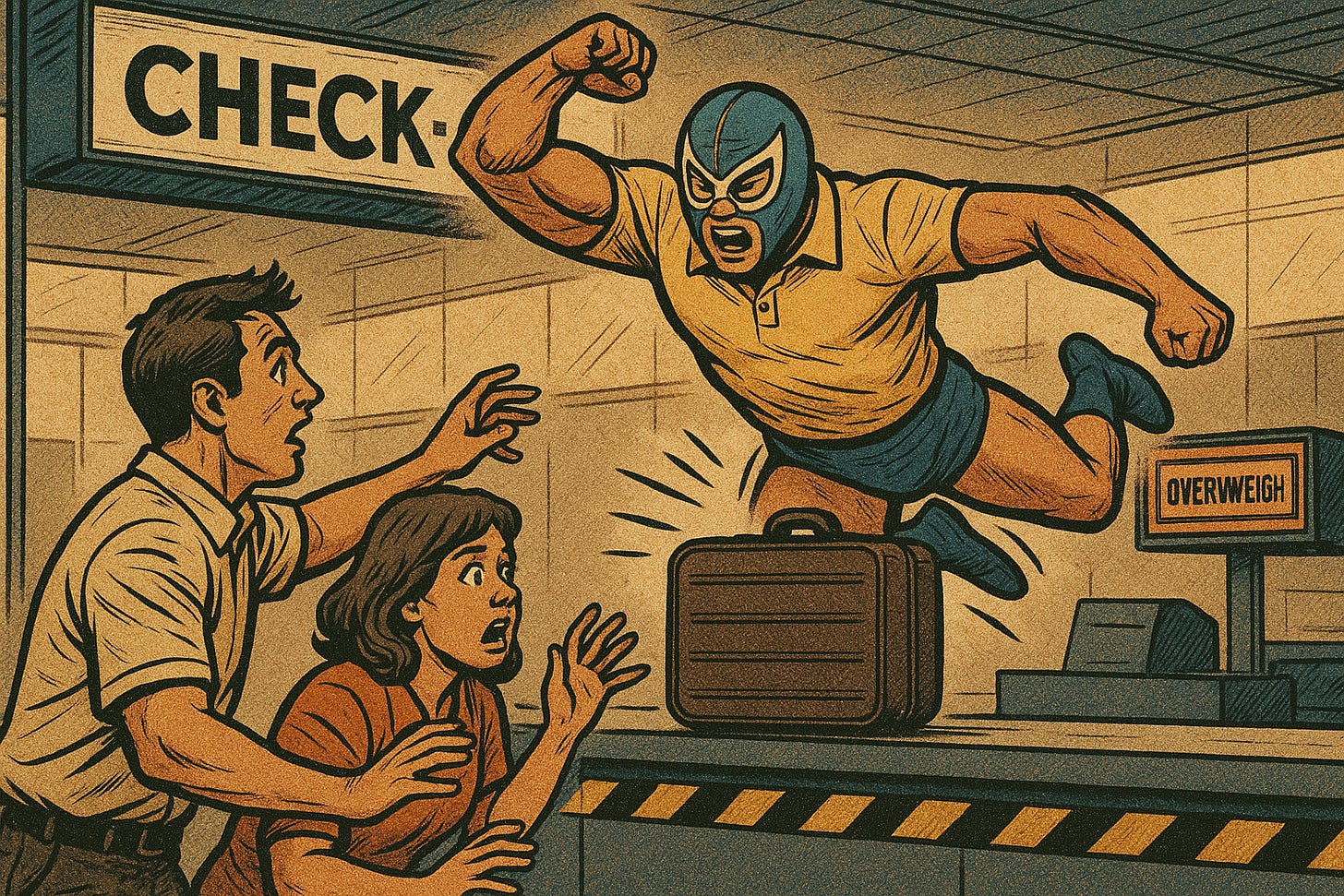
Let’s get practical. How does this work for a commercial airplane (and therefore, also for a fixed-wing drone)?
For a commercial airplane (and fixed-wing drones), here’s how the physics works in practice. Don’t worry about the technical jargon, it’ll all make sense soon.
So, on one team, you have Thrust and Lift.
Thrust comes from jet engines or propellers that accelerate air backward at high speed. This creates an equal and opposite reaction that pushes the aircraft forward—the faster you push air back, the more thrust you generate. (This is also why Zipline uses an electric catapult to launch its P1 drones—it gives the aircraft enough initial velocity for the wings to generate lift)
Lift is where it gets interesting. Aircraft wings have a curved shape.
Another view with some science-y labels.
This curved shape forces air to travel at different speeds over the top and bottom surfaces. According to Bernoulli’s principle (which I didn’t know about till just now), faster-moving air creates lower pressure, so the higher-speed airflow over the curved top creates a pressure difference that literally sucks the wing upward.
But wait, there’s more.
Wings also deflect incoming air downward. Per Newton’s third law, pushing air down creates an upward reaction force that also produces lift. So it’s a one-two punch that forces the airplane into the air. However, it’s the pressure difference (highlighted in the paragraph above) that does most of the heavy lifting. (Don’t worry about remembering any of that - all you need to know is that curved wings create an upward force when air flows over them fast enough).
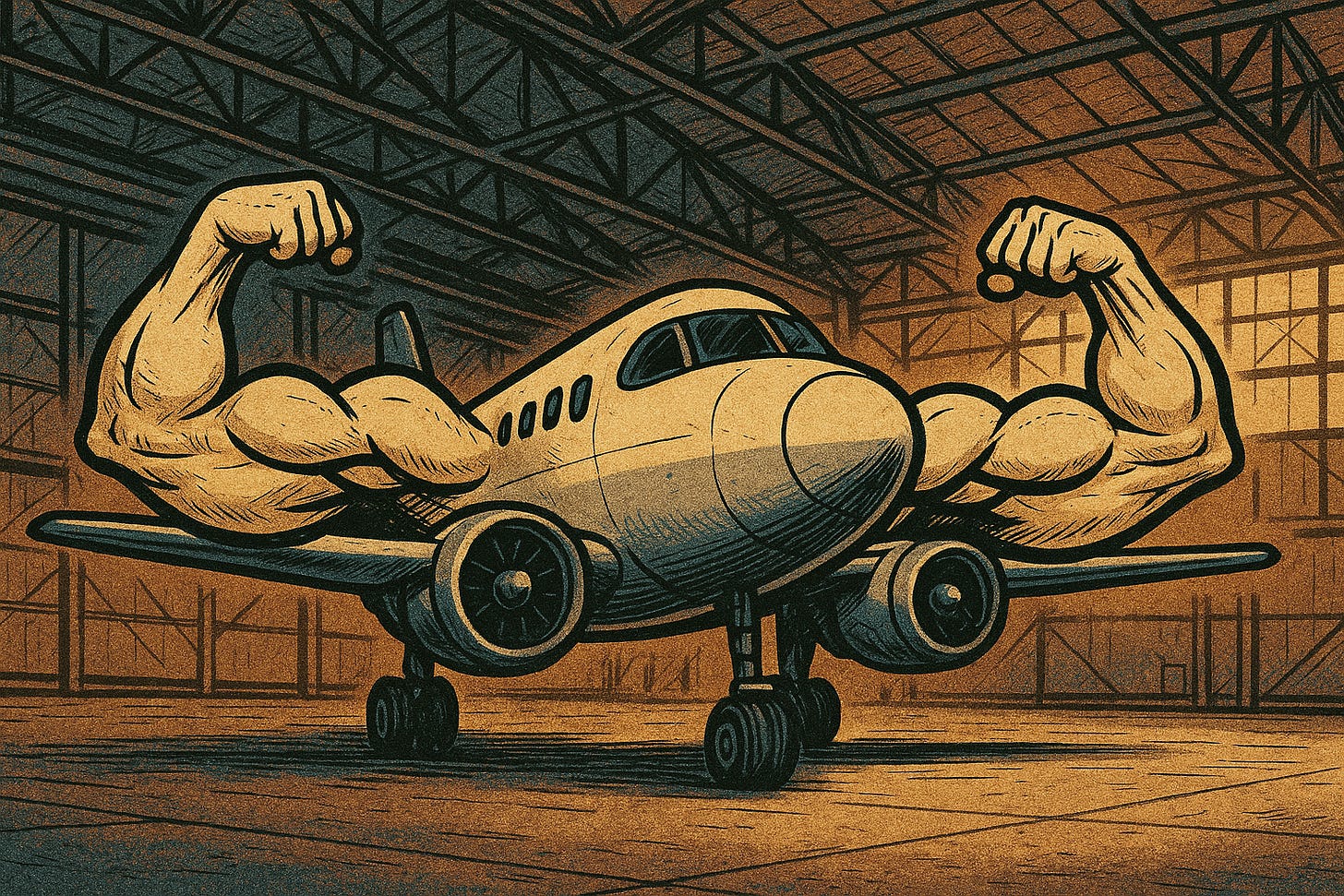
Weight and Drag are the opposition forces. Weight is straightforward—gravity pulling everything down. Drag comes from air resistance against the aircraft’s shape, surface friction, and turbulence created as the plane pushes through air.
The elegant part is that once an airplane is moving fast enough, the wings generate lift automatically—it doesn’t need to constantly burn fuel to stay airborne like a helicopter does. The engine’s primary role at that point is to produce just enough thrust to overcome drag and maintain forward speed. This is why fixed-wing aircraft (including drones like Zipline’s P1) are so much more efficient for long-distance flight. The engine only needs to maintain forward speed; the air flowing over the wings takes care of the rest.
The headline metric here is the ‘Lift-to-Drag’ ratio (L/D ratio)—basically how much upward force you get for every unit of resistance you face. A good commercial airplane might have a ratio of 20:1, meaning it gets 20 units of lift for every 1 unit of drag. So if it’s gliding at a constant airspeed with no power, it’ll move forward 20 metres for every one metre it descends. This also means it only needs 1/20th of its weight in thrust to maintain level flight—i.e. a 100kg aircraft needs just 5kg of thrust to stay airborne.
And for a quadcopter? The L/D ratio is around 1:1, meaning a 100kg quadcopter needs 100kg+ of thrust just to hover. That’s why fixed-wings dominate long-distance flight.
Say more about the curved wings. Also why do the shape of the wings matter at all?
To recap, yes, aircraft wings have a curved shape - and that curve counts for everything. The technical term for this kind of specially curved shape is an ‘airfoil’. It’s what you’d see if you cut a wing in half and looked at its side profile - curved on top, flatter underneath. This shape is designed to produce lift when air flows over it. This isn’t some arbitrary design choice; it’s science, bro.
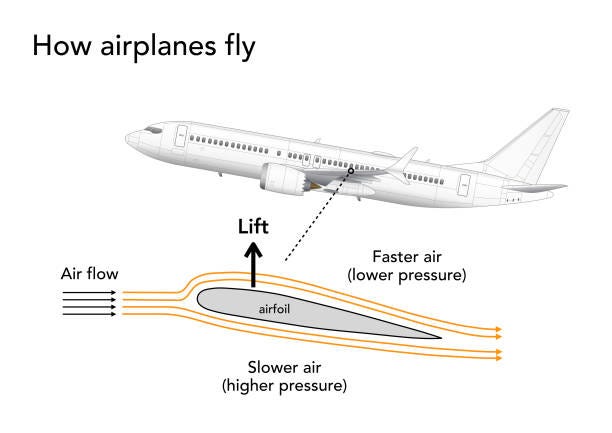
Wing shape determines how efficiently an aircraft flies. A flat wing does a poorer job of generating lift because there’s no differential airspeeds or pressures - all it does is deflect air downwards thereby generating a little bit of upward reaction force. A flat wing could technically generate lift, but it would be like trying to slice through water with your hand held flat and rigid - it pushes water aside but creates a huge wake of churning water behind it. Curve your hand slightly, and you can slice through much more smoothly with less resistance.
Nature figured this out first. Bird wings aren’t flat boards but carefully curved surfaces that slice through air cleanly i.e. they’re airfoils.
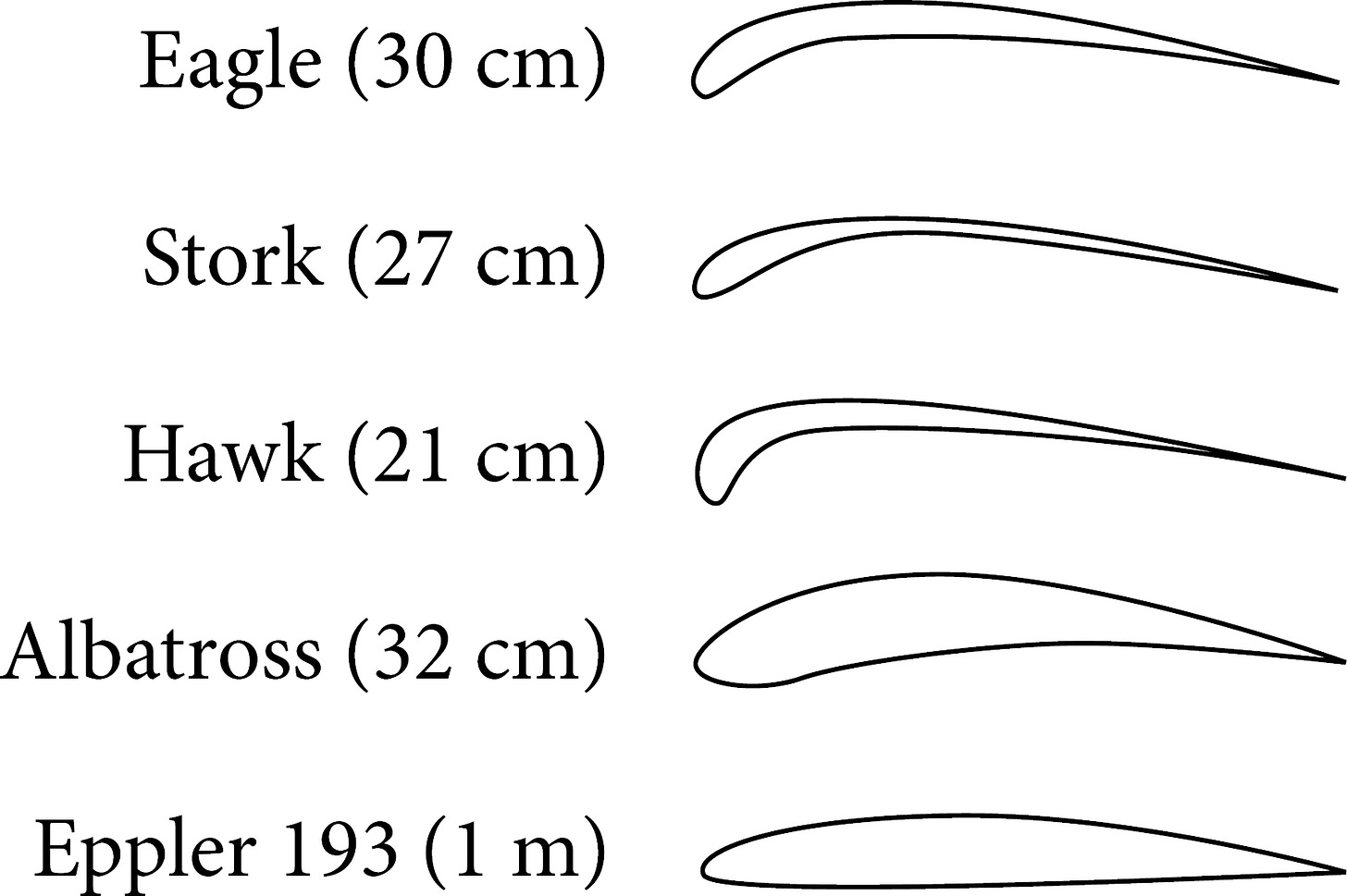
It’s no coincidence that the Wright brothers made some of their biggest breakthroughs by obsessively studying the flight of birds, despite intense ridicule from their friends who called them Birdheads (I made that last part up).
Genuinely though, the Wright brothers respected birds as nature’s master aerodynamicists. They observed how birds twisted their wingtips to maintain balance in gusty winds—one tip angled up, the other down—which directly inspired their revolutionary control system that allowed pilots to steer by flexing the aircraft’s wings. They also noticed that bird wings weren’t just curved, but had different curves along their length—thicker near the body, tapering toward the tips (just like a modern airplane), creating an efficient airfoil shape that generated maximum lift with minimal drag.

And crucially, they observed that birds could glide for extended periods without flapping by using rising air currents and maintaining the perfect angle relative to the wind—proving that sustained flight wasn’t about raw power but about working intelligently with aerodynamic forces. This biological research directly informed their aircraft design, proving that nature had already solved the aerodynamics puzzle millions of years before humans attempted powered flight.
Respect to Nature.
Word.
If you want to get really cute here, the shape of an airfoil - which kind of looks like an elongated teardrop - is nature’s default aerodynamic shape. Think of how raindrops form as they fall, or the streamlined bodies of fish and dolphins. This shape minimises turbulence by allowing air to flow smoothly around it, dramatically reducing drag—nature’s solution for efficient movement through fluids.
So show some appreciation for the teardrop - it’s the shape that evolution and engineering keep rediscovering because physics don’t lie.
Anyway, back to business.
Modern aircraft wings are essentially stretched teardrops: curved enough to generate lift, but streamlined enough to slice through air efficiently.
In fact, modern engineering has adopted this teardrop principle everywhere that matters. Propeller blades use airfoil shapes to grab air efficiently and convert engine power into thrust. Even seemingly minor components like wing struts and antenna housings are shaped to minimise drag. For aviation (and drone) engineers, this becomes critical: every surface that meets airflow either helps or hurts lift. Every little detail can be a boost or bust for aerodynamic efficiency.
So this is all for fixed-wing flight right? How does this work for something like a helicopter? (I assume a quadcopter drone would have a similar vibe?)
Yes. By the way, helicopters and quadcopters are generally classified as ‘rotorcraft’ because they use rotating blades for lift. The terminology is messy though, because many VTOLs also classify as rotorcraft despite having fixed wings (because they have propellors aiding vertical take off and landing).
For our purposes, let’s focus on the key distinction: pure rotorcraft like quadcopters and helicopters rely entirely on spinning rotors for lift.
“Why not ‘propellercraft’?”, I hear you say.
The main difference lies in their function and design: a propeller primarily creates thrust to move an object forward (like in a commercial airplane), while a rotor generates both lift and thrust simultaneously by spinning horizontally (like in a helicopter)—though both are essentially spinning airfoils generating force by accelerating air.
In fact, if you look at a helicopter, each rotor blade is actually a small rotating wing if you examine it closely.
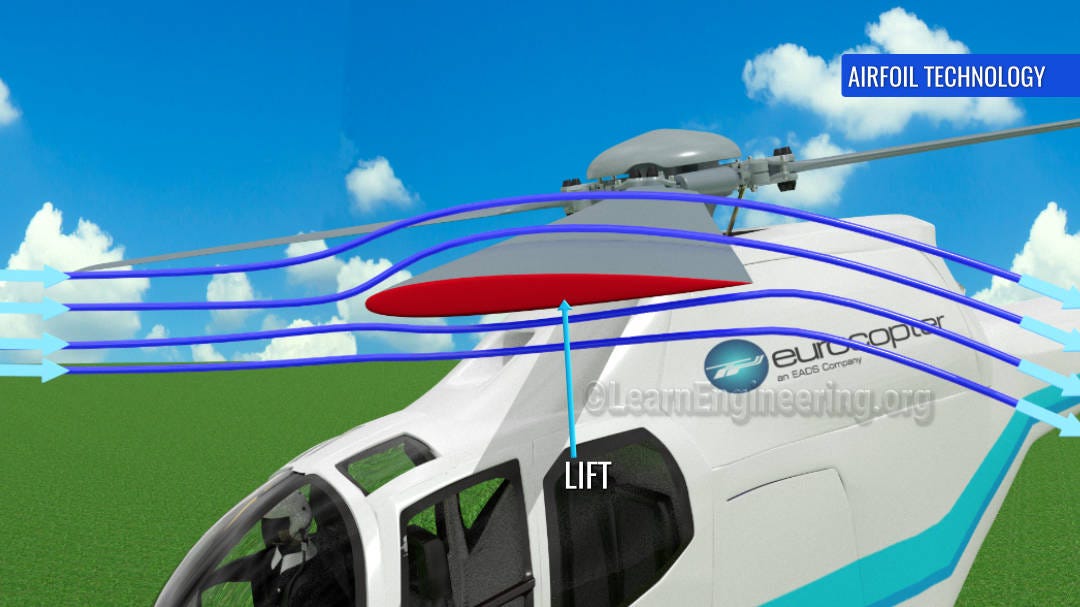
As the blades spin, they slice through air at an angle, deflecting air downward. Newton’s third law kicks in: push air down, and you get pushed up. The faster the rotors spin, the more air gets deflected downward, and the more upward force (lift) is generated.
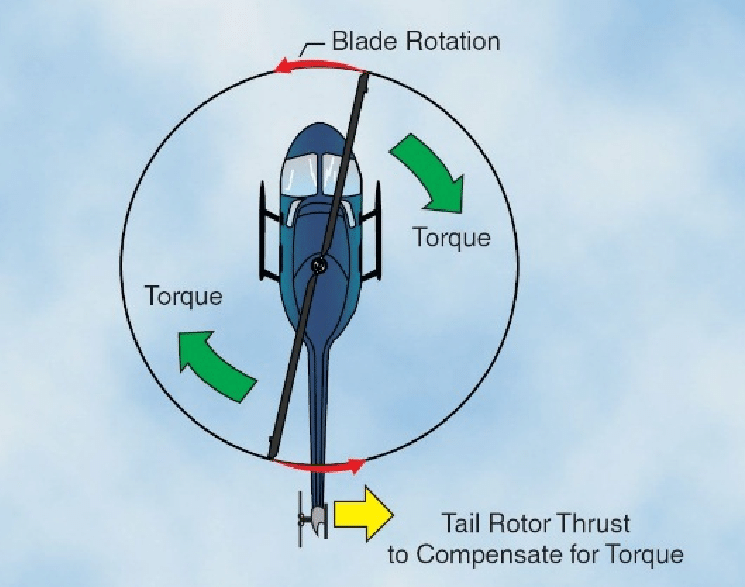
This gives rotorcraft incredible advantages—they can hover, move in any direction, or even fly backwards. But it comes with a major cost: energy efficiency. Every moment of flight requires the rotors to spin fast enough to support the aircraft’s full weight against gravity. It’s like how a hummingbird has to furiously hover to stay in the air vs how an albatross can gracefully glide across the sky. There’s no ‘free lunch’ from forward motion (like fixed-wing aircraft enjoy).
Think of it this way: rotorcraft-flight is like flailing to stay afloat in one spot if you were swimming in the sea — you must constantly expend energy to stay in one place. Airplane flight is like floating on your back—once you’re moving, staying afloat becomes much easier. This is why delivery drones designed for long distances, like Zipline’s P1, use fixed-wing designs rather than quadcopter configurations. The physics simply favour efficiency over manoeuvrability for extended flight.
Ultimately all of this is an energy game?
Yes. In aviation, the crown goes to the most energy efficient system.
Remember how we teed up this section? We were talking about how different drone configurations are basically different routes on how to ‘generate enough upward force to overcome gravity while minimising energy consumption’.
Flying anything requires constant energy to stay airborne. Unlike a car that can coast downhill or a boat that can drift with the current, aircraft must continuously burn fuel to generate the forces needed for flight—thrust to move forward, and lift to stay up. This makes commercial aviation fundamentally an energy efficiency game. The more efficiently you can generate lift and thrust, the less fuel you burn, the further you can fly, and the cheaper your operations become.
This energy reality shapes everything about aircraft design, turning it into a relentless optimisation exercise. Airlines spend billions developing lighter materials (like carbon fibre) for their structures because every kilogram of weight requires more fuel to lift. It’s the reason why they use lighter catering trolleys and ultra-thin paint, and even remove thick magazines from the backs of seats. It’s why aviation engineers obsess over wing shapes that reduce drag even by 1% because smoother airflow means engines work less hard (meaning millions in cumulative annual cost savings on fuel).
For cargo companies, this translates directly to cost per kilogram—how much does it cost to move one kilogram of stuff from point A to point B? The most efficient aircraft wins because it can offer the cheapest cargo rates (because fuel represents 25-30% of total airline operating costs, meaning every ounce of efficiency gain will directly impact profitability).
This is why airline companies are interested in parameters like the aircraft’s strength-to-weight ratio (more strength for less weight is ideal); and payload-to-weight ratio (which is the relationship between useful cargo - called ‘payload’- and the aircraft’s own structural weight) because the higher this ratio, the more revenue-generating cargo you can carry relative to the dead weight of the aircraft itself. (FYI a payload can refer to passengers, packages, freight etc).
This is also why the history of aviation reads like a century-long war against weight and drag - every breakthrough, from the Wright brothers’ wing warping to modern composite fuselages - has been about doing more with less (energy).
And voila, now you know how things fly. Here’s a cookie for making it through all that.
…Oh, sorry, one last thing. Although the determinants of energy costs are slightly different for delivery drones - which use electric batteries rather than fuel - the objective is the same: find a way to carry the maximum payload as efficiently as possible, which is a function of both the raw weight of the aircraft and the ingenuity of its design…
8. Drones 102
“I didn’t know anything about aerodynamics. I didn’t have an engineering degree. I wasn’t brought up in an environment where I knew the industry standard. I had never heard of a payload-to-weight ratio or a lift-to-drag ratio or any of that. I was just trying to figure out how to make the best delivery drone, and as a kid in the 11th grade, I needed to figure out how to make this as cheaply as possible.”
The term ‘first principles’ tends to be bandied about quite flippantly in startup circles these days. But Naman had no alternative but to begin with a clean slate, which imposed both the burden of building from zero and the luxury of being unencumbered by conventional wisdom - a twin furnace within which his drone design was ultimately forged.
This exploration began by studying the tradeoffs between the two dominant drone configurations.
Naman explains that “quadcopters are focused more on software and what kind of services you can integrate with them - aerial photography, crop spraying, firefighting etc. There’s very little you can do to differentiate on the hardware. Sure, you can have a slightly lighter frame or slightly better propellers, but aerodynamics don’t really matter with a quadcopter — it’s more about integrating electronics and software. You’re not so concerned about your lift-to-drag ratio when you need to spray a small parcel of land with fertiliser. But when you’re looking at fixed-wing drones — think about the engineering that goes into a Boeing 737 — you’re now dealing with questions like how do I make the structure more lightweight, how do I make it more fuel efficient, how do I improve the aerodynamic efficiency. Because if you’re in the business of moving things from point A to point B, this is what matters.”
Naman’s research naturally led him to Zipline, which was then (and still is now) the most established global drone delivery company by scale and operational experience.
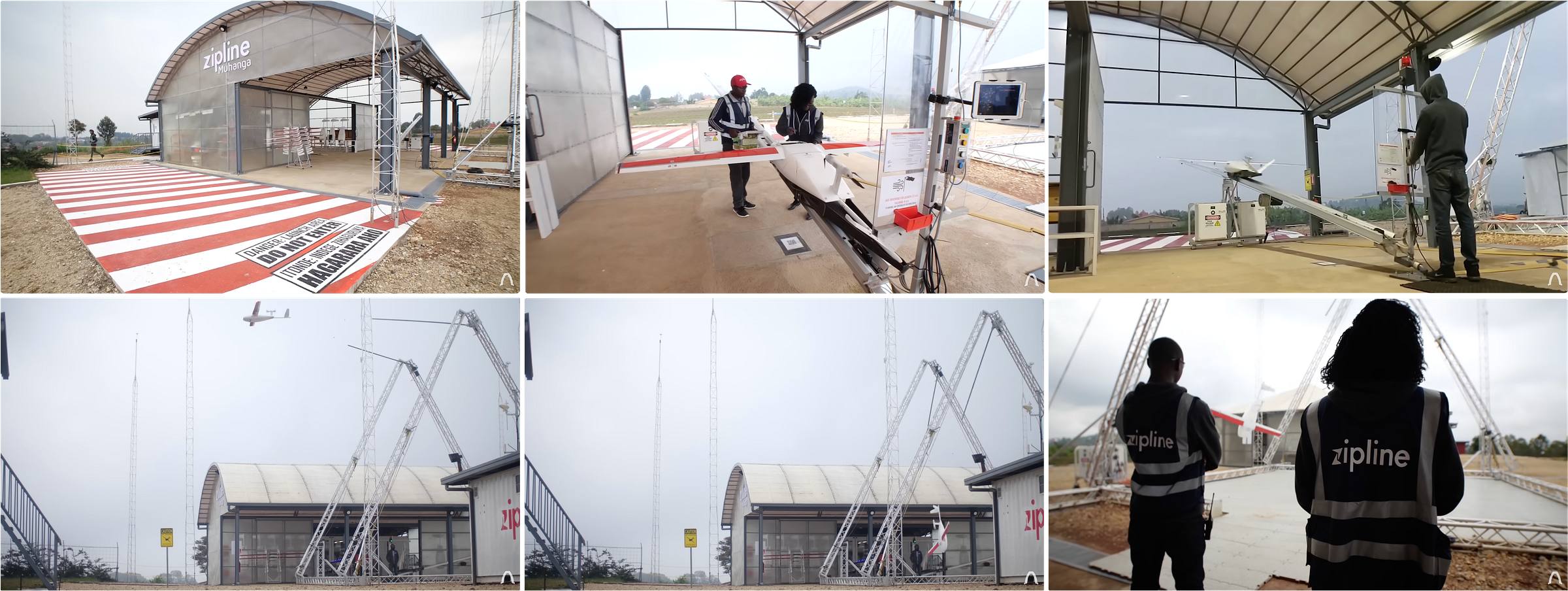
“What they had achieved was amazing,” he says. “But it just needed so much infrastructure. It needed so much space for takeoff and landing. In my head I was like ‘it’s a drone, why can’t it just take off and land vertically?’”
Initially just looking for something that could get off the ground without much trouble, the first design that Naman conjured up for the hackathon was something akin to “an aerodynamic quadcopter”. It had six rotors instead of four - i.e. a hexacopter. “It was really ugly. My friends said it looked like a fat turtle. It was also just too bulky for long distance delivery.”
The aerodynamic shortfalls of rotorcraft convinced him to abandon that course. Realising that neither quadcopters or fixed wing drones could truly meet his requirements, he began looking for middle ground. “Someone I had reached out to pointed me in the direction of Hybrid VTOLs,” Naman recalls.
To recap, Hybrid VTOLs (also just called VTOLs - Vertical Takeoff and Landing drones) - are drones that can take off vertically like a quadcopter and then fly forward like a fixed-wing drone. (The name is confusing because a quadcopter technically also takes off and lands vertically, but I guess aviation people aren’t that good with naming stuff). Anyway, with VTOL the idea is to combine the low infrastructure requirements and precise positioning of a rotorcraft with the energy efficiency of a fixed wing aircraft. The most common incarnation of a delivery drone VTOL is a ‘quadplane’ - which basically looks like a fixed-wing drone with a bunch of rotors stuck on top.
How does a VTOL achieve the necessary speed for fixed wing flight without a runway or a slingshot-y thing? During takeoff and landing, the four rotors spin to provide vertical lift. Once airborne, the quadplane transitions to forward flight by firing up a separate propeller (usually mounted at the front or back) while gradually reducing power to the vertical rotors. As speed increases, the fixed wings begin generating lift through normal aerodynamic principles (which you and I are now experts in yeah?), and the vertical rotors can be shut down entirely, turning the aircraft into a conventional plane for efficient long-distance flight. The transition back to vertical flight reverses this process—slowing down until the wings can no longer support the aircraft, then spinning up the rotors again for a controlled vertical landing.
“Quadplanes are just so inelegant,” says Naman, with genuine pain in his voice. “Sure, they’re stable and yes, they’re relatively easy to build, but it stinks of engineering laziness. When you stick propellers right in the middle of fast-flowing air over the wings, you’re directly interfering with lift generation and creating massive drag. This is the design you make when you don’t care about aerodynamic efficiency.”
Even outside of interfering with lift, quadplanes have an inherent wastefulness embedded in the design. During vertical flight, the fixed wings and forward propeller become dead weight that must be lifted without contributing to thrust. During forward flight, the four vertical rotors become parasitic drag—essentially expensive paperweights bolted to the aircraft that create air resistance while serving no function. And worse, as Naman lamented, the rotors sit directly in the airstream flowing over the wings, disrupting the smooth airflow needed for efficient lift generation.

“There are other VTOL configurations that are interesting too, some better than others,” says Naman, “but nothing really met my requirements for aerodynamic efficiency…until I found the tailsitter.”
9. Tailsitter
“If you’re curious enough and persistent enough, the Internet will eventually lead you to whatever it is you’re trying to find.”
- Me quoting myself from earlier in this piece (what? you gonna call the police?)
Much like it does for many teenage boys, the Internet would cough up two pieces of media that would bring Naman much excitement.
“First I found this Youtube video from the Aeromodelling Club at IIT Kanpur showing this drone concept called a tailsitter. I was like ‘Ok this is what I’ve been looking for, this is what I need to build’.”
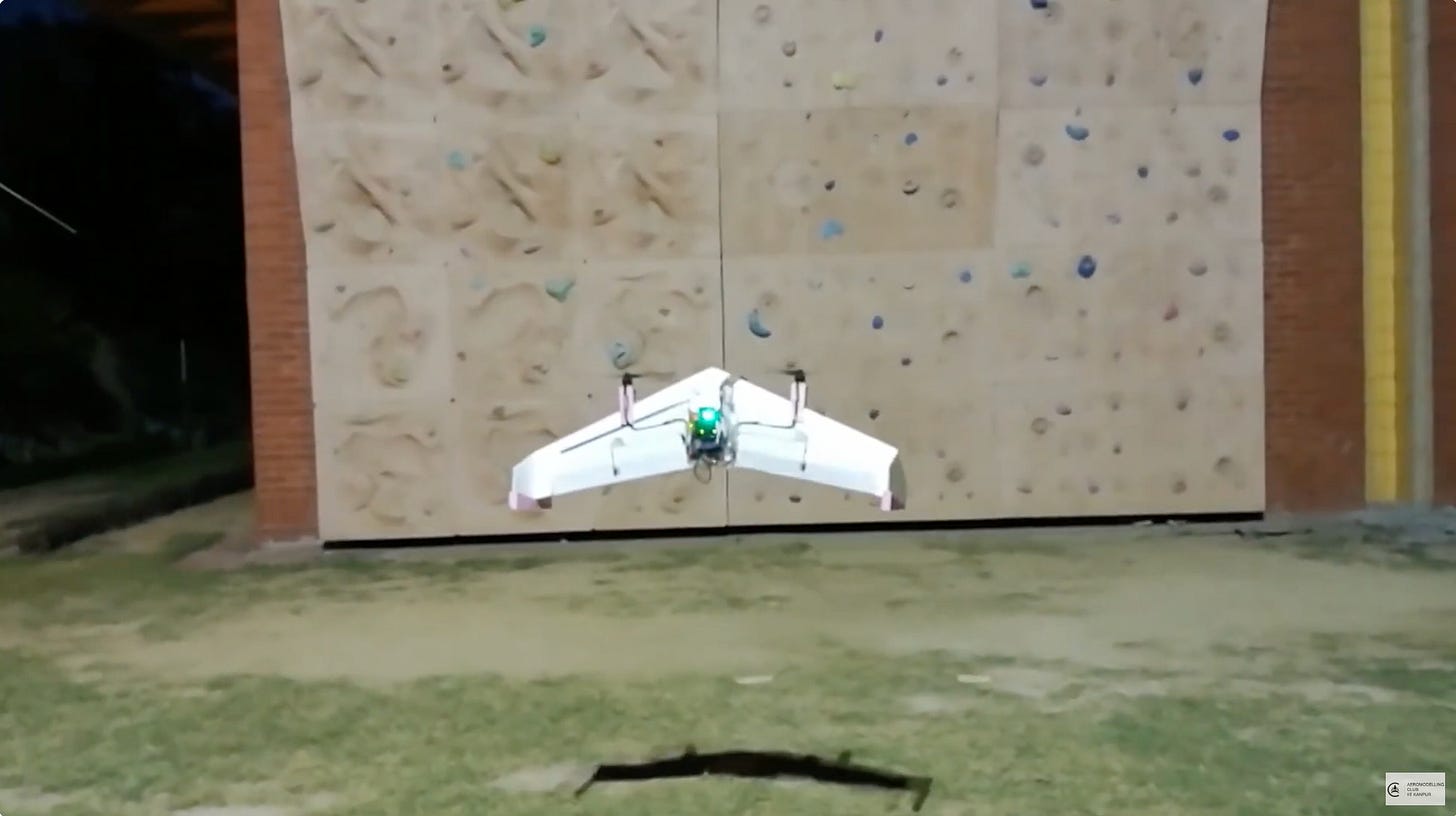
The tailsitter is one of aviation’s most conceptually elegant yet practically challenging designs, first developed during World War II as engineers sought aircraft that could take off from small spaces without runways. The aircraft takes off vertically like a rocket—sitting on its tail with the nose pointing straight up—then rotates 90 degrees in mid-air to fly horizontally like a conventional airplane.

The appeal lies in its mechanical simplicity: tailsitters use the same propellers and ‘control surfaces’ (the moveable parts like rudders and flaps that control direction and stability) for both vertical and horizontal flight, eliminating redundant systems and reducing weight.
However, the transition phase - when the aircraft pivots from vertical to horizontal flight - is especially tricky. It requires sophisticated flight control software to manage the spatial reorientation—essentially programming the aircraft to smoothly flip from rocket-like vertical flight to airplane-like horizontal flight while maintaining stability.
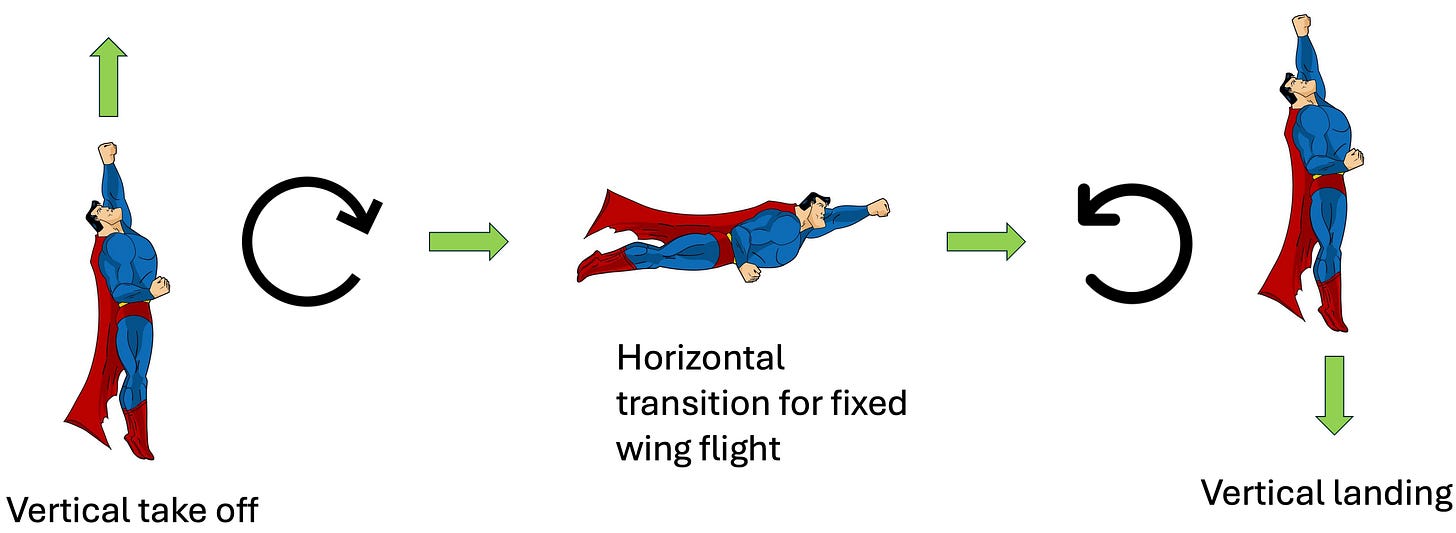
Despite decades of development, tailsitters remained largely experimental curiosities until modern flight computers and autonomous systems made the complex control algorithms manageable, leading to renewed interest from companies building small autonomous aircraft where the design’s efficiency advantages outweigh its control complexity.
“One of the advantages of being a young engineer is that you get to be naive and idealistic,” Naman admits. “The difficulty of building a tailsitter wasn’t top of mind for me. I was just drawn to the fact that you could use the same controls, the same propeller, the same motor for vertical and horizontal flight. You’re reducing parts. You’re reducing points of failure. The same mechanism is used for multiple things. To me that is engineering elegance. I was a fan.”
The tailsitter became the template for his dream drone design.
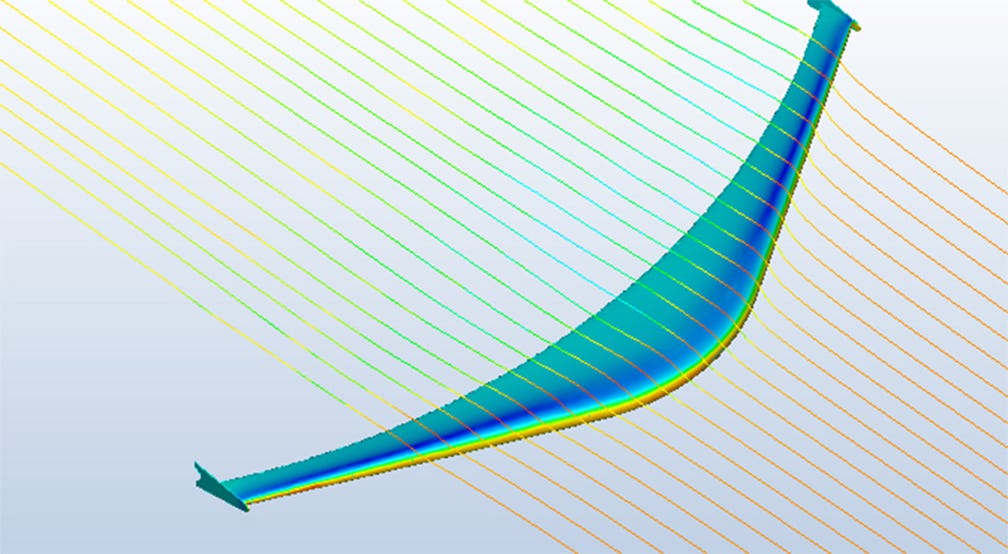
He created a digital rendering of a tailsitter drone that could theoretically (and perhaps quixotically) perform the task of home delivery. He dubbed this initiative the ‘OpenDrone’ project. It was the end point of his efforts during the week-long Helpful Engineering hackathon in August 2020, which he ended up winning. It entitled him to $500 of prize money.
That princely sum would represent his initial seed funding. “It was six months before I could actually access these funds though, because of banking issues with transferring the money,” Naman says. “Finally by the end they just ended up paying for a bunch of supplies and materials directly. The delay was pretty annoying, because it meant I couldn’t actually build anything for six months.”
Those six months proved pivotal to his journey, however. It gave him an extended window to tinker with his design, which was eventually supercharged by the discovery of the aforementioned second piece of media.
10. Blend It Like Boeing
At an aerospace conference in 2004, Boeing engineers presented a wild new concept for an aircraft that looked like it came straight out of a sci-fi movie.
Instead of the familiar tube-with-wings-stuck-on design we’re used to seeing in commercial airplanes, their vision featured an aircraft with no clear line between the wings and the body. This “blended-wing-body” aircraft looked as if somebody had taken the model of a regular plane and sat on it by mistake.
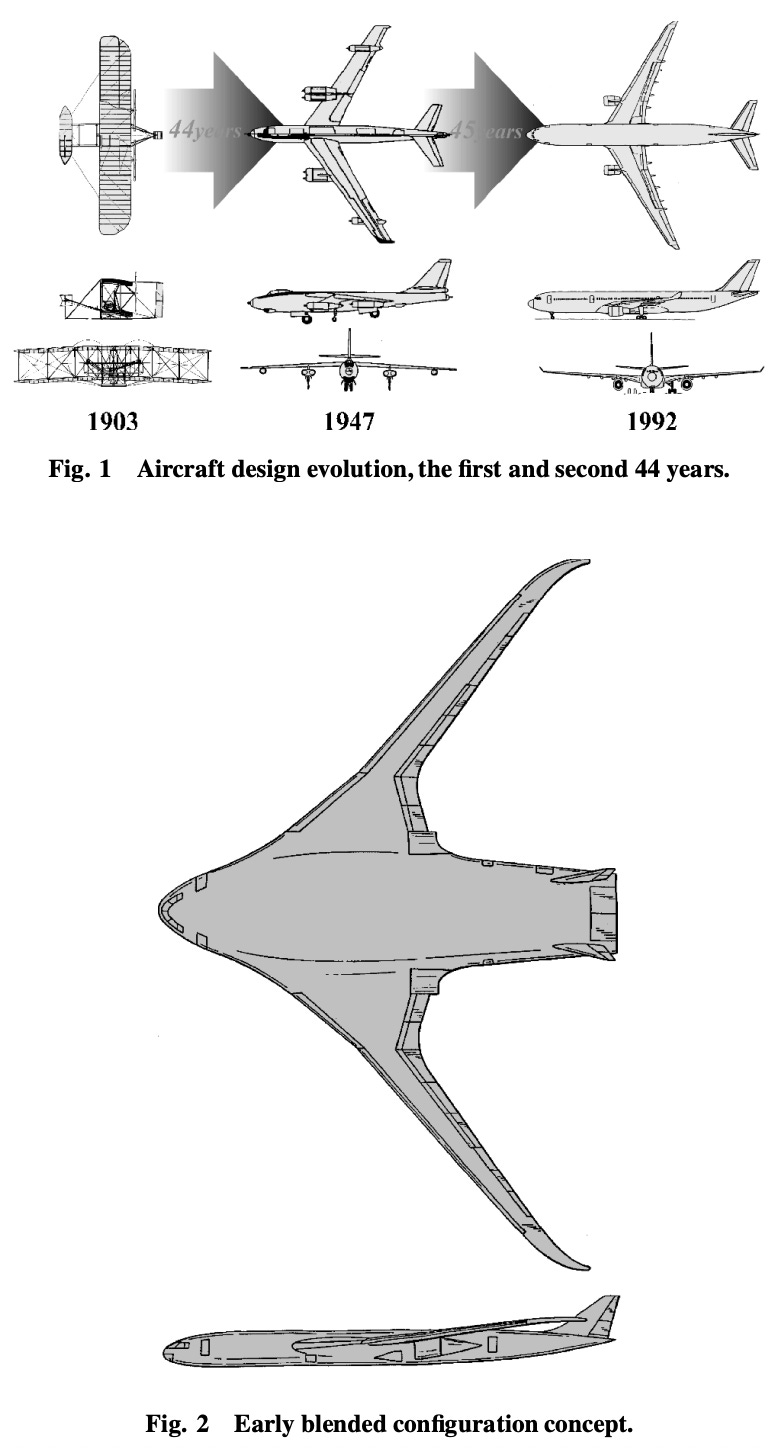
The concept wasn’t entirely new. Engineers at (former defence and aerospace giant) McDonnell Douglas had been tinkering with the idea since the late 1990s. However, Boeing’s presentation marked the first time anyone had seriously proposed building these weird-looking planes for real-world use.
The genesis of the idea was that Boeing felt traditional aircraft design was fundamentally inefficient: you’ve got this big cylindrical fuselage (i.e. the main body of the plane which houses the cockpit, passengers, cargo etc) that just creates drag, while only the wings actually generate lift. What if, they wondered, the entire aircraft could generate lift? What if there was no dividing line between wing and body—just one smooth, aerodynamic shape?
What they envisioned was an aircraft that worked like a single airfoil. As you can see below, the result looked nothing like any plane that had ever flown previously, but the math was compelling: this strange design could potentially be 20-30% more fuel efficient than conventional aircraft and it could result in a 15-23% higher lift-to-drag ratio than a traditional tube-and-wing airplanes, amongst several other optimisation benefits.

Despite two decades of promising research and successful test flights with Boeing’s X-48 program, the blended wing body concept remained largely confined to experimental prototypes and niche military applications due to practical challenges like passenger evacuation concerns, airport infrastructure compatibility, and the massive costs of certifying such a radically different aircraft design. Though that didn’t deter a certain high-schooler from Mumbai from thinking that he could crack the code.
While Naman was waiting for the hackathon organisers to figure out how to transfer him his prize money, he stumbled upon Boeing’s original 2004 paper on the Blended Wing Body architecture. To his amateur aviation sensibilities - and because he literally didn’t know that it was too impractical to implement - it appeared to be the final piece of his design puzzle.
“The big problem with hobby-drone type tailsitters is that they’re not built to carry anything,” Naman explains. “They’re effectively just flying wings with a chunky redundant fuselage in the middle. A blended wing body essentially turns this fuselage into an airfoil - there’s no point where the wing ends and the fuselage (body) begins, so the entire thing is generating lift. So for instance, while your typical quadplanes have a lift-to-drag ratio of 3 to 3.5 at most, and airliners are at 17 to 20, a blended wing body offers 24 and up. The design is roughly 20% more aerodynamically efficient than existing tube-and-wing planes. That type of performance compounds in an incredibly positive way. A better lift-to-drag ratio means I use less energy to fly the same distance, which means I need a smaller battery. A smaller battery means less weight to carry, which means I can use smaller motors, which means less weight and even better efficiency - i.e. a positive feedback loop.”
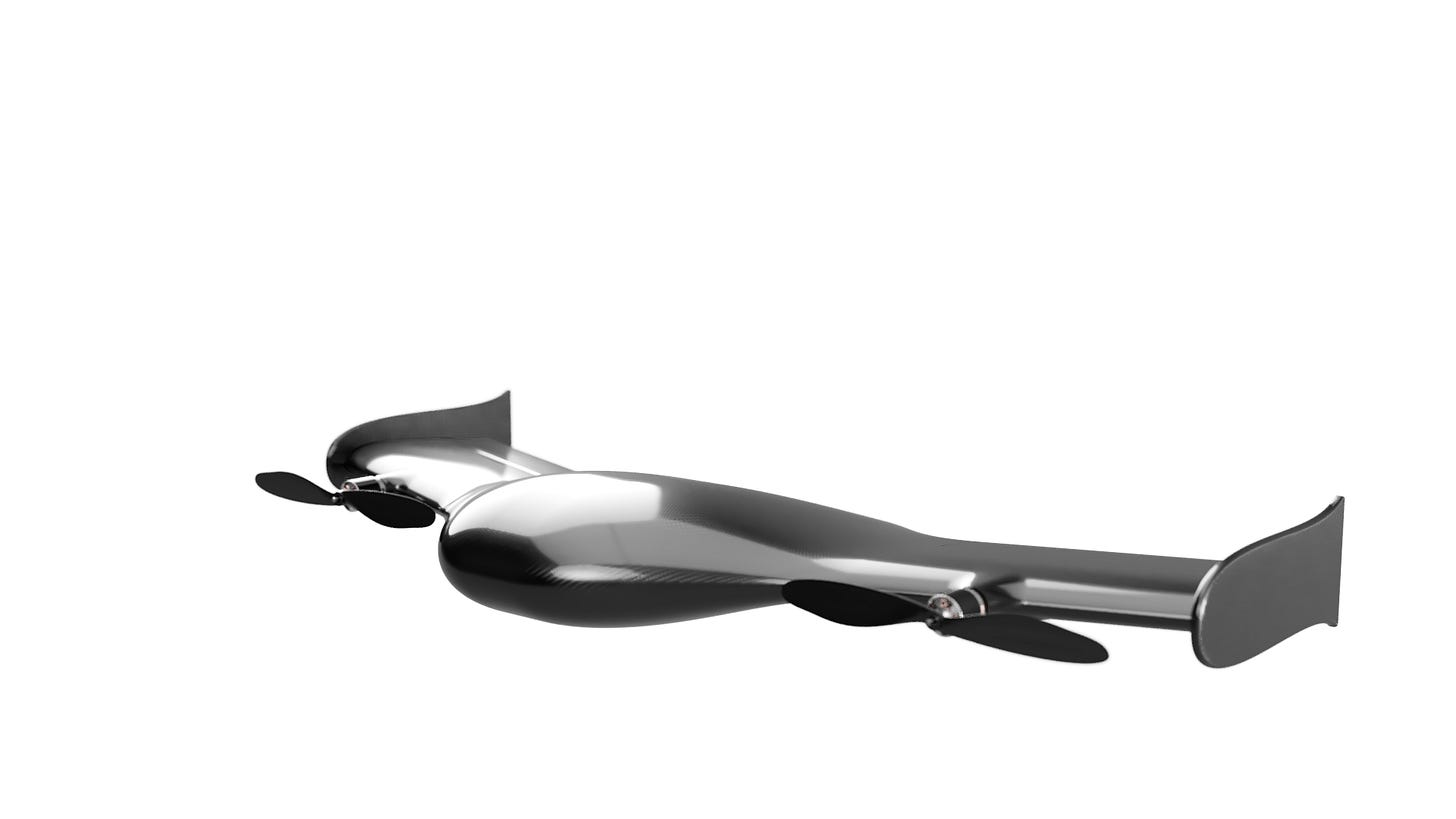
“Equally important [seen in the image above], the fuselage can be designed to be thicker, to also store cargo. So it’s an airfoil that doubles as a storage compartment for a payload. This sort of overturns the disadvantages of a tailsitter, which, isn’t really aerodynamically efficient or equipped to carry things. When you combine a Blended Wing design with a tailsitter’s VTOL capabilities, suddenly you’re 5-6Xing your range and payload-carrying capability compared with any other drone ever. Why wouldn’t you try to do that?”
So, to summarise, Naman took what was an unproven, sketchy solution to the ‘VTOL Problem’ (re: combining vertical take off and landing ability with the efficiency of fixed wing flight), and paired it with an unproven, impractical aircraft configuration, smooshing them together to design what was (and is) the world’s only Blended Wing Body Tailsitter. Simple.
The only thing left to do was to build it.
11. What are you made of?
After six months of tweaking the renderings of his design, Naman spent the following six months learning what it took to build a drone that worked (…with dubious end results, but we’re getting ahead of ourselves). This was especially important to get right because $500 isn’t a lot when you need to account for the structure of a drone, the wiring, the motors, the propellers, the batteries etc.
“I had to be insanely scrappy,” he recalls. “I didn’t know anything about aerodynamic principles then. I was just playing around with a bunch of random airfoil designs and seeing what came together. It was more of a 3D modelling exercise than an aerodynamic challenge. Things became trickier because I couldn’t afford an actual 3D printer. So I printed out the stencils of each part using a regular A4 paper printer, and then used a hot-wire cutter to carve the actual parts out of industrial foam. Then I basically stuck them together with toothpicks and tape and some adhesive. I added some polyester putty to fill in any gaps, and then sanded down till I got a smooth shape.”

Now to clear up any misconception, the foam model you’re looking at in the images above isn’t the actual drone. That’s just the mould that Naman used to make the real frame of the drone. Naman’s actual drone prototype was made out of fibreglass, a type of composite material.
The process of making a fibreglass drone starts with making a mould of the entire drone out of foam as per the images you see. The idea is to then lay sheets of fibreglass (which are literally pieces of cloth) over different individual sections of this mould (i.e. different parts of the drone), then applying to these some type of liquid resin that reacts with the material, turning that soft cloth into a hard shell.
Then you would remove (i.e. peel off) those dried parts from the mould later on, before constructing the real drone out of your finished (hardened) fibreglass parts.
If you read through those last few sentences and said ‘WTF does that mean??’ in your head multiple times, don’t worry. I’ve been through the same process over the past four months. It’s probably worthwhile here to spend a couple of paragraphs talking about composite-making because it’s a big reason why Airbound is Airbound (and it’s also the last bit of technical exposition you need to make it through the rest of this piece, I promise). We’ll do this quick and dirty so we can return to our story.
For starters, what are drones made of?
Drones, like cars, make use of different materials based on what each component needs to accomplish. Consumer drones use plastic bodies (cheap and easy to mould) with carbon fibre wings (strong enough to handle propeller stress), while commercial drones increasingly use composite materials like carbon fibre, kevlar and fibreglass for maximum weight savings. The fundamental challenge is building something strong enough to not fall apart mid-flight, but light enough that you’re not wasting energy carrying the aircraft’s own weight. Carbon fibre offers the best strength-to-weight ratio, which directly translates to longer flight times and bigger payloads.
Wait but what the hell are composites?
Composites are materials made by combining two different substances to get properties that neither has alone. Think reinforced concrete: concrete is strong under compression but cracks easily under tension, so engineers add steel bars to handle the tension forces; fibreglass boats work the same way - glass fibres provide strength while plastic resin holds everything together and makes it waterproof; or kevlar where synthetic polymer fibres combine with resin to absorb impact that would shatter either material alone. Each of these combinations work better than the constituent materials by themselves.
Cool cool cool. You said commercial drones tend to use fibreglass, carbon fibre and kevlar, right? What’s great about them (aside from being terms everyone pretends to understand)?
All three are essentially high-tech fabrics (literally cloth) that become incredibly strong when you add a liquid plastic resin (like epoxy) to them.
Fibreglass starts as molten glass stretched into threads finer than hair, then woven into cloth. Soak that glass cloth in resin, let it harden, and you get the material used for boat hulls and car parts.
Carbon fibre works the same way but uses carbon atoms arranged into ultra-thin strands instead of glass. The result is lighter than aluminium but stronger than steel—which is why it’s the go-to material for Formula 1 cars and spacecraft.
Kevlar uses synthetic polymer fibres that are designed to stretch and absorb impact without breaking, making it perfect for bulletproof vests and protective gear.
The key insight is directional control: you can orient these fibres in specific patterns to handle the exact forces your part will face - lengthwise for pulling forces, at angles for twisting, and so on.

This is why carbon fibre is the holy grail for aircraft builders (airplanes, drones etc) — you can engineer strength exactly where you need it without adding unnecessary weight elsewhere.
And how do you make things out of carbon fibre?
The basic process is surprisingly hands-on. You start by making a mould of whatever shape you want—this could be carved foam like Naman used, or made out of fibreglass itself, or some more sophisticated tool for mass production.
Then you ‘lay’ the dry carbon fibre fabric (this works even for fibreglass cloth) over the mould, making sure it follows all the curves and contours. Next comes the resin application: you either brush liquid epoxy directly onto the fabric or use a vacuum to suck the resin through the fibres. The idea is to get the resin to fully saturate the fabric without air bubbles, which would create weak spots.

Once the resin cures (hardens), you remove the finished part from the mould. The result is an incredibly strong but lightweight shell. For complex parts like aircraft fuselages, you might need to join multiple pieces together with more resin and fibre reinforcement at the seams, or with mechanical fasteners for larger applications. For additional stability, it’s common to sandwich a lightweight foam core between two layers of carbon fibre—this provides the structural stiffness of much thicker solid material without the weight penalty, creating what’s literally called a sandwich panel.
Carbon fibre work requires some skill—too little resin and the part will be weak, too much and you’re adding unnecessary weight. The curing time depends on temperature and humidity, and professional operations use ovens or autoclaves to control these conditions precisely.
Professional grade operations rely on a ton of sophistication to balance quality and scale, but the basic technique is accessible enough that an enthusiastic high schooler could learn it in his bedroom with relatively simple tools.
12. Flight Time
“…So how are you going to do this? Instead of doing the logical thing and going for composites, your genius brain decided, you know what the best material for this insanely complex 3D curvature that’s incredibly sensitive to any changes in shape? Aluminum. Jesus christ, that was a month that could have been better spent doing literally anything else. Well now that you’ve finally knocked some sense into yourself and decided to build it out of fiberglass – and look at that, you’re making the mold out of foam too! I mean you made that little error where you bought 20 human sized sheets of PVC foam instead of XPS foam (I’m honestly impressed that you managed to fuck that up) but hey I’ll be nice and ignore that.”
- via Naman’s Substack (~early 2021)
Beyond tackling the art and craft of foam-cutting and fibreglass-moulding, Naman had to wrangle with the electronics, wiring and software that transforms a drone-shaped sculpture into something that actually flies. He relied on trusted mentors AKA Messrs Youtube, Google and Github, along with reaching out to college kids doing drone competitions and pestering them for advice.
“I did everything wrong basically,” Naman admits. “Like I hadn’t left any space in my frame to actually mount the motors. I had to refit the frame to get my angles right. Even the surface of the drone looked kind of…pixelated. Then I couldn’t get any of the open source drone softwares to work. I didn’t know anything about stability or controls or any of that stuff. I realised all my dimensions were wrong. By the end I think I developed a pathological fear of propellers because of how many times I messed up the sizing.”
If the first six months of Naman’s quest represented an exercise in imagination, the next six were a dogged return to reality. Slowly, addressing each of the practical challenges of drone making, his initial prototype came together, taking shape over the first half of 2021.
Considering that this was the handiwork of a 15-year-old in his bedroom with no experience in aerodynamics or aviation or composites, the resultant drone was reasonably handsome. But when it finally came down to showtime, the performance of the aircraft fell short of Naman’s own expectations.
“I had underestimated the amount of thrust I needed to get it off the ground to actually fly. Plus I couldn’t get the software to behave properly. So when I finally tried to launch it, it lasted only 0.2 seconds of flight time, which was really disappointing.”
The benefit of getting everything wrong the first time around is that you get a lot of mistakes out of the way early. The other benefit is that you generate evidence of your intent.
Naman’s unsuccessful flight video (filmed by his mom) might not have depicted a satisfying climax…
…but it proved invaluable as an accomplice to various applications for grants and other sources of funding. He managed to win $1,000 as a grant from 1517 Fund (backed by Peter Thiel), which allowed him to finally buy a 3D printer to quicken the process of making foam moulds, and the subsequent carbon fibre parts. This was followed up by a larger grant from Emergent Ventures ($12,000), and pivotally, his first round of venture funding while he was still in the 11th grade, from a fund that was cut from the same cloth as he was.
13. Good Company
Abhishek Sethi and Prateek Behera founded gradCapital in 2021 while the former was still a postgrad college student at IIM Ahmedabad. The two had initially become friends as part of the 2018 graduating class at BITS Pilani. Their thesis for gradCapital was to focus on investing in startups founded by students, with a strong emphasis on ambitious technical and science projects in their early stages.

The duo have earned a reputation as some of the finest talent spotters in the country, having now invested early in companies like Stimuler, Armatrix, Arctus Aerospace, Pluto Mobility, and others. They kickstarted their first fund in 2021 via a programme that invited applications from student founders across the country, offering a standard $25,000 cheque in exchange for 4% equity in companies that made it through. One of the student founders that applied was Naman Pushp.
“At that time it was still a side-project, not a company,” Abhishek recounted over a call with me. “We were happy to fund side-projects though. For Naman it was initially just a technology play, but what became apparent to us over subsequent conversations was his belief that he’d effectively engineered a new cost structure for the movement of goods, that his aircraft would make drone delivery economically viable because a lighter, more aerodynamic frame meant a dramatic lowering of energy consumption costs. It’s almost like, if you can make last mile delivery effectively free - which is what he’s now estimating at scale - the movement of goods increases in all sorts of interesting and unpredictable ways. It’s like what the Internet did for data, or UPI did for money, they want to do for the physical world — for the world of atoms. Drones just happen to be the form factor.”
Abhishek also added that “What sealed it for us was that every time we would meet over a call, he would be sanding his drone for the entirety of the conversation, because he couldn’t find any other time to do so along with his schoolwork. His parents couldn’t believe it when we told them we wanted to fund him. They hadn’t realised there was something real here. In their heads he was eventually going to leave this hobby project aside when he went to college.”
Not only did the gradCapital guys give Naman $25K, but they also wrote his college recommendation letter. As to why a new venture fund that had just committed $25K to a founder would want to boost his chances of abandoning his nascent venture in favour of beer pong and bong hits (and a classroom education, I guess), the reasoning was simple “His parents were keen that he apply to college, so we wanted to help give them some comfort,” says Abhishek. “But to us, we saw a kid that was so obsessed with this idea that he wouldn’t even take a break from sanding his drone during an interview to raise funding. That kind of obsession will always pull you back to your mission.”

And so it did for Naman, who knew by the end of his 11th grade that he wasn’t going to go to university. It was a decision that gave his parents much stress, and not one they were immediately on board with. “They were worried about me and wanted me to have a safety net,” says Naman. “My dad comes from a humble background where, in his family, being an entrepreneur just meant you couldn’t get a good job somewhere else. He had seen the business owners around him struggle when markets turned for the worse. He never wanted me to go through that. But I knew I wanted to see what this could become. I don’t think you can build a meaningful company if you’re also trying to get through college.”
What helped his cause was raising his first round of funding from gradCapital (which along with the other grant money gave him $40K to play with as he transitioned from the 11th to the 12th grade), and then raising another ‘extender’ round of ~$150K from Draper Startup House and other angels while in his last year of high school. To meet his parents halfway, he applied for college anyway. “I got into Carnegie Mellon,” he says. “The good part of university in America is that you can defer your admission, which I did for two years, so my parents could be satisfied that I had a back up. Though as of last year I think I’ve had to give up my seat.”
Over his final year of school, the project formerly known as OpenDrone came of age, emerging from puberty as a plucky venture-funded company with grand ambitions to move the world.
14. Airbound
Naman freely admits that his commitment to academia took a dive in the last year of high school. Apart from the requirements of running a real company - now called Airbound - in his after school hours, his faith in the efficacy of classroom education had been fundamentally shaken.
“I had always grown up wanting to do something big, something bold,” he reflects, “and I knew that technology was what allowed you to scale good ideas to make the biggest impact. But before COVID I had always assumed that academics was the only path to get there. I was the kid that wanted to get a pHd. But after exploring this world of drones and aviation and robotics on my own, and finding people that were willing to bet on me on the back of that work, that broke all my earlier assumptions. Like, I used to think that an engineer was someone with an engineering degree, but I realised over that period that an engineer is just someone who does engineering.”
For Naman, that ethos became especially pronounced while breaking new ground. “If you’re building something that’s never been built before, you’re probably not going to find your answers in some lecture or college textbook. Conversely, if you’re obsessed, and if you eat, breathe, and sleep thinking about the problem, that’s when answers tend to reveal themselves.”
After the gradCapital round, Naman moved into his own apartment, which became the unofficial Airbound lab. He tried to convince his parents to let him move to Bangalore since school was online for the foreseeable future. “But they weren’t having it,” he recalls.
The priority for his new company was simply to build a drone that worked. That meant several months going deep into each element - hardware, software and electronics. It meant reworking the design for his prototype from scratch, understanding the complex dance of control surfaces and sensors that help to keep an aircraft stable in the air and direct its movements. He also upgraded to using carbon fibre and kevlar sheets instead of fibreglass, for better strength-to-weight optimisation and greater impact absorption, respectively.
This time, he allowed his efforts to be directed by a primary use case - i.e. the delivery of medicines, in keeping with the theme of his original mission to find a solution for contactless delivery.
It meant researching the weight of a typical medical delivery (of which a majority fall under 1 kg), and following that throughline to design a fuselage that could accommodate such a payload → then visualising the shape of an airfoil that could surround it → estimating the kind of thrust needed to lift such an aircraft → and how many batteries of a certain type that would require → and how much weight those batteries would add → and how much weight his frame would need to be to make it all work, and so on.
“At first this was all just about CapEx,” Naman says. “All I was initially trying to do was figure out zero-infrastructure drone delivery, because that’s the only way I thought this could scale. But gradually over the next 12-18 months it turned into an optimisation game, and suddenly I was looking at all these figures for payload-to-weight, strength-to-weight, cost-per-kilometre etc. I wasn’t really chasing any benchmarks. I just started with the basic physics of designing the most efficient delivery drone I thought could exist, and let that be my guide.” Naman’s exploration of different rabbit holes unearthed a number of questions that would form the basis for his eventual aircraft design - basic questions that only someone ignorant of convention would ask - like:
Why was it that when you looked at existing drones in the market, it was always a big object carrying a little object, and not the other way around? Why did all the existing delivery drones weigh between 4-8x more than the maximum payload they could carry?
Why is it that airplanes can carry so much more payload as a percentage of their weight than quadcopters or VTOL aircraft?
Why was drone delivery seen as a ‘compromise’ option today - high cost per kilometre in exchange for higher speed and more access? Why couldn’t it be all three? Why had drone companies begun dealing in tradeoffs before they’d found optimum performance on range, weight, cost, and performance? What was it that made them so inefficient today? What was holding them back?
How light could your frame be if you just used the lightest material available in the market, instead of the lightest material that everyone else was using?
If your goal was to make the lightest and most aerodynamic structure physically possible, how would that affect your energy requirement? What would that mean for the performance and life of your battery? What would that do for your cost per kilometre? And how would that compare with other modes of delivery transport?
As it is for most questions at Airbound, the proof is in the physics.
15. Lightspeed
Over the course of 2021 and 2022, Airbound’s V1 aircraft took shape, designed to carry a 1kg payload that covered most medical deliveries. It featured an ultra-lightweight carbon fibre frame that employed first-principles engineering to distribute strength and weight across the body of the drone. That meant looking at structures at a molecular level, and borrowing techniques from earthquake-resistant building architecture.
Because it’s very difficult to change the basic structure of an aircraft once it’s finalised - each tiny change has a cascading effect on everything else - this is largely the version that the company is still working off of today.
Along with better materials and components, Naman now had the funds to expand the Airbound team too. Chief amongst the early additions was Ganesh Yadav, the first official team member at Airbound who became (and still is) a key cog in the Airbound machine.
“Naman and I first met in 2019 when I was in junior college and he was in the 10th standard,” says Ganesh. “We met at a maker-space in Mumbai called Maker’s Asylum, where I was interning and which Naman was using to work on his own independent robotics and woodwork projects outside of school. We jammed together on a project to build a low cost computer out of second hand parts for schools in Dharavi. During the pandemic the owner of Maker’s Asylum was calling on his network to see if people wanted to help on Covid-related projects, like building new face-shields for doctors. I called Naman to ask if he wanted to contribute but he said he was busy working on some new drone project. By the second wave of lockdown we connected again, and he asked if I wanted to join. I had been tinkering with some quadcopters on my own but what he had built was beyond anything I had seen. I was extremely interesting, so I said yes.”
Once Naman and his team were reasonably happy with their new prototype, it was time to put it to the test. The problem - no airspace.
The way drone regulations work in India is that there are three types of airspace zones when it comes to flight permissibility. Green zones are unrestricted areas where you can fly drones freely after basic registration. Yellow zones require permission from local authorities before flying - these cover areas near smaller airports, government buildings, and sensitive installations. Red zones are completely off-limits for civilian drones and include major airports, military bases, international borders, and critical infrastructure. Most of urban Mumbai, Delhi and Bangalore falls into red or yellow zones.
In Mumbai the only viable green zone within the city is Mahalaxmi Race Course, which is open to drone hobbyists on the weekend for a few designated hours. For the Airbound team, that didn’t move the needle. “In reality they only let you fly for like one hour on Sunday,” Naman says, “and even that they usually cancel if some big-shot’s helicopter needs to land on the site, or if there’s some event or concert happening at that weekend, and of course, anytime there’s a horse race.”
The lack of viable flying space was only the beginning of their troubles. “Early flight testing sucked,” admits Naman. “Every week we would get excited to go there, only to get repeatedly punched in the gut. It’s not like the drone was flying and crashing - that would have been great because we would have actually learned something. But for so many weeks it just didn’t even start. It refused to fly and we had no idea why. I wasn’t even qualified to justify my engineering decisions either - so it just felt like we were doing everything wrong. Then finally you move onto the next phase, where for months and months all you see is crashes on crashes. We had to get used to just having our hopes and dreams crushed, as a matter of routine. That was the closest I’ve come to having an existential crisis during this journey.”
The lack of airspace for flight testing was a major reason why the team ultimately uprooted to Bangalore once Naman had graduated from high school. Along with the change of scenery, by the start of 2023, they had crossed a few other important milestones. For one, they had managed to get the drone to fly.
It wasn’t reliable. It wasn’t terribly stable. It didn’t last long in the air. Their performance varied wildly from flight to flight, day to day, and week to week. Sometimes they’d have four successful flights in a day and then none for months. It couldn’t be trusted to carry an actual payload. It couldn’t take off without assistance and typically crash landed into a tree or a pile of mud. But it could fly, and that was no small feat considering what it was and where it had started.
“It took us insanely long for us to not crash more often than we crashed,” reflects Naman. “And each crash set us back weeks, because we had to repair the damage. To me that’s the core difference between software and hardware. With software, if you fail, you can never get to a worse position than where you started out. With hardware, you absolutely can, because you lose an aircraft and now you have to rebuild.” Along the way the group also suffered other bumps and bruises, like getting rejected from Y-Combinator, and a short-lived attempt to onboard a more seasoned co-founder.
Ultimately on the back of their progress (and gradually improving flight demos), the company was able to raise $1.7 million in seed funding led by Lightspeed Venture Partners in early 2023, a round that was only announced in November of last year (2024). The deal took some time to complete, only because Lightspeed needed Naman to turn 18 before he could legally sign on the dotted line.
“It’s almost like gradCapital funded our learning curve, and Lightspeed funded our company. We wouldn’t be here if not for both of them,” says Naman.
The Lightspeed round was what propelled Airbound’s transition from garage band to the main stage, bringing us closer to present day.
16. Then and Now
They say a picture is worth a 1,000 words. But we’re about 15,000 words in already, so this piece may be beyond saving. That being said, I think the image below does a good job of summing up the journey of Airbound, its aircraft, its team, and its tech from the start of 2023 till today.
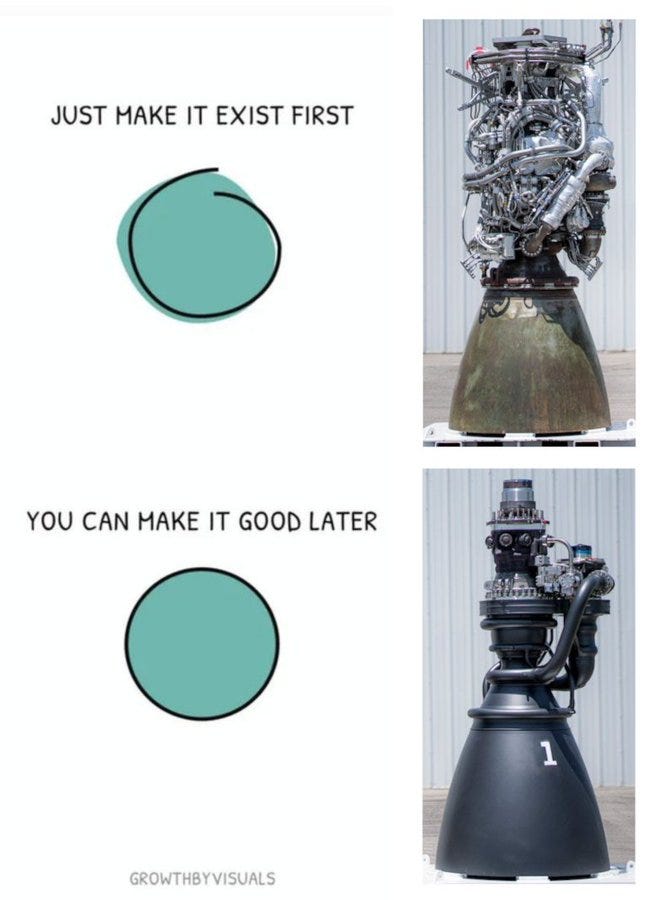
For an assortment of reasons, Naman likes to describe 2023 as Year 1 for Airbound. For starters, that’s because they literally created a new legal entity to welcome the Lightspeed round.
It’s also partly because, at the end of that year, they brought on board their first ‘real’ external hire - Stefard D’Souza, who currently leads Autonomous Systems at Airbound.
“Stefard joined us from another drone company - Asteria Aerospace - and is a big reason why we were finally able to get our drone to fly reliably,” says Naman. “Till then it was just me and Ganesh basically trying to move fast and breaking a lot of things. Stefard made us slow down and get more methodical. Instead of this moronic cycle of flying-breaking-fixing-flying, we started to take time to learn from our mistakes. The slowing down was very frustrating at first, but I realised over the next 12 months that - sometimes it can feel like on a day to day, week to week basis, you’re moving at snail’s pace. But then you zoom out and realise that, actually, when you measure your progress in months, you’ve actually sped up, taking meaningful steps forward.”
The team took their time to become more familiar with their aircraft, understanding the nuances of each component and sub-system, and fine-tuning these till they were happy with its performance. They made important technical adjustments that the aviation nerds reading this might appreciate, like moving from four cells to six cells batteries for propulsion; finetuning a “bazillion parameters” in their drone firmware (Ardupilot) ; and crucially implementing a thrust vectoring system (i.e. rotating the entire motors of the aircraft rather than just the control surfaces) which allowed them to ace the transition between vertical and horizontal flight - the final piece to taming the tailsitter.
With their aircraft design in place and the parts behaving as intended, they even gave their drone a name - the TRT. Maybe you assume that this is some slick abbreviation for ‘Tailsitter’, but that would be far from the truth. Instead, the team wanted to bless their (hopefully) fast and furious aircraft with a fitting moniker, which is why, as Ganesh explained to me “Dude, TRT stands for Dominic Toretto.”
Naman has a neat analogy to describe the difference in their understanding of the TRT and the integration of its parts both pre and post 2023:
“Let’s say you’re in a game that requires you to roll a hundred dice, and multiply the numbers that turn up. And your objective is to get the biggest number. Earlier what we were doing is just rolling them all at once and hoping we got a good outcome. But imagine if you could strategically just arrange each die to ‘six’, you would get a number bigger than anything anyone else has ever gotten. That’s what we’re trying to do now - understanding how to move each die. And the tricky part is it’s an interconnected system - you make one die six, the other one will roll over back to one. But if you can actually map all of that out, understand that complexity at a granular level, at the level of physics, you’ve got a great chance at getting your desired outcome.”
This technical excavation has unearthed more than just a reliably functioning aircraft. It’s yielded the kinds of unit economics that make for a pretty compelling business case.
17. Victory Charge
By now you probably have a pretty good idea of ‘what’ Airbound has been building since 2020. What we haven’t touched on properly is the ‘so what?’
To recap, one last time for the people in the back, Airbound today has built the world’s first and only Blended Wing Body Tailsitter drone. That means:
no need for expensive infrastructure like runways, slingshots or bungee cords for take off and landing. It means the same motors and propellers handle both vertical takeoff and forward flight. So no redundant systems, no dead weight during different flight phases, and thus fewer parts to buy, maintain, and replace, meaning all the motors and propellers of the TRT come out to 8% of its total weight compared to 16% for other drones.
its blended-wing-body reduces drag during flight and generates lift from the entire frame (instead of just the wings), ramping up its aerodynamic efficiency. That gives it an L/D ratio closer to commercial airlines (20:1) instead of quadplanes (~3.5:1) or quadcopters (~1:1), yielding a dramatically better range and efficiency compared to other drones.
their use of the lightest possible carbon fibre sheets (42 GSM) combined with innovative composite engineering techniques, means that the weight of their TRT frame will finally come in at just 4% of the total weight of their aircraft (6% if you include the emergency parachute), compared to the industry standard of 35%, making Airbound’s Blended Wing Body Tailsitter comfortably the world’s lightest, most efficient delivery drone.
Here’s the rub. The cumulative effect of all those design choices and engineering victories boil down to one objective - reducing the cost per kilometre of moving things from Point A to Point B.
What’s the main driver of that cost? Batteries. Specifically, battery replacement.
Remember earlier when we talked about how in aviation ‘the crown goes to the most energy efficient system.’ Well, the energy that powers autonomous drones like Airbound’s comes from electric batteries (instead of petrol or jet fuel). And finding a way to balance that energy with performance is the key to making a viable and successful drone delivery operation.
Naman explains that “in any drone delivery system, your battery replacement cost is what drives unit economics, not the cost of materials. This is true for a lot of other autonomously operating electronic systems like electric vehicles or portable electronics too. Batteries have limited charge cycles, so in use cases (like deliveries) where there’s frequent discharge (i.e usage), they wear out pretty fast and have to be discarded and replaced. So if you can find a way to increase the life of your battery, you win.”

So how does Airbound win? In one word - math. Here’s how its engineering breakthroughs translate directly into better economics:
Let’s revisit our intro to aerodynamic efficiency: The L/D ratio of an aircraft measures aerodynamic efficiency - how much upward force an aircraft gets compared to how much air resistance holds it back. Like we covered earlier, if an aircraft weighs 100kg and has an L/D ratio of 20:1, it means this particular aircraft gets 20 units of upward force for every 1 unit of air resistance fighting against it. This aircraft also needs only 5kg of thrust to stay airborne. If a quadcopter, which has an L/D ratio of ~1, has to carry the same weight, it would need at least 100 kg of thrust to lift off the ground, and likely closer to 150kg of thrust just to fly forward. That’s a 30x difference in energy consumption.
This energy difference directly determines battery drain. Less efficiency (lower L/D ratio) means more thrust required, more thrust means motors work harder, which means batteries discharge faster, which means they wear out faster, which drives up the single biggest cost in drone operations: battery replacement.
The Battery Economics: Most delivery drones use lithium-polymer batteries because these batteries can deliver massive amounts of power very quickly (i.e. they have a higher discharge rate) - exactly what heavier VTOLs and aerodynamically inefficient quadcopters need to generate the enormous thrust to just take off and stay airborne, respectively. Lithium-polymer batteries are built to handle these intense power demands without overheating or failing mid-flight.
But conversely, lithium-polymer batteries wear out fast under such heavy use, burning out after just 100-200 flights. Airbound’s drone is so structurally light and so aerodynamically efficient that it only needs to sip power instead of guzzling it, allowing the company to use lithium-ion batteries (like in your smartphone) that last 500-800 cycles. Even better, that same efficiency is why the team estimates that it’ll only use 15% of each battery’s capacity for an average delivery flight, keeping the battery at 85% charge (instead of draining it), which dramatically extends the battery life to something closer to 5,000-5,500 flights.

As Naman puts it: “Our battery replacement cost is almost a 1000X lower than the delivery drone standard today. Of course, that doesn’t equate to a 1000X reduction in total costs. But when you take into account the 7X improvement in structural efficiency and 6X improvement in aerodynamics it works out to be about a 137X reduction in costs compared to other drone delivery companies.”
Airbound is in position to reap the benefits of several compounding waves crashing into the shore of its unit economics at the same time. The ultra-lightweight frame gives them the luxury of needing relatively less power in general, meaning they can get away with smaller batteries, which means less weight to carry, and more percentage of the total weight to use on payload. They’ve essentially “compressed the strength of a 12kg drone into a 1.5 kg drone”. This contrast becomes clearer when you look at the comparison between the capabilities of its TRT compared with delivery drones from Zipline and Wing.
“The norm is not a 1.5 kg drone carrying a 1 kg payload. It’s almost always a 4-5 kg drone carrying a 1 kg payload. It’s weird but that’s just become the industry standard. We’ve flipped the script already. And our TRT V2 is going to be a 1.2 kg drone carrying a 3 kg payload. That’s the kind of performance we’re aiming for. We are obsessed with figuring out how to get more strength for less weight, how to increase efficiency, how to increase payload etc. That means vertically integrating so we’re making more of our components like motors and servos in house, and pushing the envelope on experimental carbon fibre manufacturing methods.”
Btw, if you’re still struggling to wrap your head around the insane strength-weight game they’re playing with carbon fibre, maybe it’ll help to see that they’re making their drone using parts that are simultaneously this light:
…and this strong:
…So, taking into account the insanely lightweight structure, the industry-lapping aerodynamic efficiency, and the resulting advantages on overall battery life and power required per flight - the trillion dollar question is what does that mean for the cost per kilometre of delivering something using an Airbound drone? Per Naman -
“At scale, we think our cost of delivery will be something around 10 paise per kilometre. That figure takes into account our assumptions around battery use per flight, cost of replacing frames, replacing motors, and the fact that over time all other costs (of labour and infrastructure) trend towards zero with automation. Five years from now this will hopefully be a mostly autonomous operation, and we’ll hopefully be making all our components in house. When we take into account the estimated life and cost of these components, and how many deliveries we’ll likely get from them, the number we get is 10 paise. So we hope to charge our partners one rupee per delivery to use the Airbound delivery service. It might take a few years for us to get to that mark, but we plan to be at worst 3-4 rupees per km out of the gate, which means we’re already orders of magnitude better than what any other drone delivery company globally has managed.”
Naman makes it clear that this ‘one rupee delivery’ mark wasn’t anything they were planning for. It wasn’t some North Star number his was pushing towards. Instead it was just the product of following his engineering intuition. “It’s like, first we built this thing, and then we discovered all these metrics later on based on the tech we had created. It was never about unit economics - payload-to-weight, strength-to-weight etc. We just understood the aircraft better so we knew what metrics to push on. We kept asking ‘how efficient can this thing be?’, and now we think that answer is 10 paise per kilometre.”
At one rupee per delivery, where the price of moving something from Point A to Point B becomes “effectively free”, what does that mean for the world? What does that mean for consumers and businesses? And more pertinent for this piece, what does that mean for Airbound?
18. Leapfrogging
“Our goal was always just to make the best aircraft physically possible. What that now represents is the world’s most efficient delivery drone. What comes next is to build the world’s most effective delivery service, or, in other words, the most effective way of transporting atoms from Point A to Point B. If all goes to plan over the next 5-10-20 years, we will have helped architect the new rails of global transport.”
What Naman and the Airbound team want to do is to create a method of delivery that is fundamentally better than anything else that’s ever existed. Their intention is not to sell drones, but to offer drone delivery as a service to public and private enterprise partners.
That means transporting cargo - whether that’s food, groceries, packages or passengers - in a way that’s faster, autonomous, emission-free, and orders of magnitude cheaper on a per kilometre basis than not just any other delivery drone out there, but any other form of motorised transport - period. Those grand ambitions have been plotted out over three phases that the company hopes will play out over the next 10-15 years.
With the current V1 of the TRT (capable of carrying a 1 kg payload) their first milestone is to tackle last mile delivery in India. Think food delivery, quick commerce, medical supplies, groceries - slotting in for orders that typically weigh <1 kg that currently reach you via a 60-100 kg delivery person riding a 100 kg scooter or a fuel-guzzling 150-250 kg motorcycle.
“If you think about how last mile delivery is done today,” says Naman, “it’s still a person likely on a gas combustion vehicle delivering everything, whether that’s a strip of paracetamol or a printout. It’s pollutive, it’s loud, it’s inefficient, it clogs up our roads and cities. It’s the equivalent of using a landline phone or dial up internet. We see these forms of technology as archaic, and can’t imagine using them today. We’ve gotten used to a world that’s automated the movement of messages and money. But that still hasn’t happened to the movement of goods. When it comes to logistics, we’ve somehow gotten accustomed to using a form of technology that is thousands of years old.”
Assuming they can crack last mile, Step 2 for Airbound (commencing sometime in the next 5-7 years) is to take on the trucking and air freight industry, with a V2 of the TRT that can carry a 3 kg payload, and eventually an aircraft that can carry a 100 kg payload.
“The thing about our current specs is they scale beautifully with a larger drone size,” claims Naman. “For example, we’re currently working on a 3 kg payload drone that has a 2 metre wingspan, meaning it would be bigger than a person but weigh less than your phone. We’re still making major improvements on the manufacturing and design end to bring down weight and improve aerodynamic efficiency. We actually estimate that our 3 kg and 100 kg payload drones would be at par or cheaper than a fully loaded Boeing 737 on a per-kg-per-km basis. We wouldn’t be cheaper than a truck, but at that point the speed of aerial transport comes into play. There’s no reason why an intercity shipment in India takes weeks to be delivered today. We want to be able to do this in one day via drone delivery. And we think a 100 kg payload drone puts us in position to take meaningful chunks out of the global air freight and trucking industries.”
And finally, Step 3, once they can prove the reliability, safety, and unit economics of their aircraft, is to graduate to ferrying people within and between cities, in a world where autonomous aircraft are a ubiquitous feature in urban life. “By that time, it shouldn’t even be a second thought about choosing to fly for shorter durations using an electric VTOL flying taxi vs choosing any other form of personal mobility transport - on price, speed, convenience, emissions, or anything else.”
Achieving even one of those goals would be a tall order. Achieving all three requires incredible conviction and imagination.

“The only reason we’re starting with a 1 kg drone is because a smaller aircraft allows us to iterate quickly,” says Naman. “Once we know this works at scale, we have a clear roadmap for the next 15-20 years.”
In present day, however, in order to start proving the efficacy of their tech, there are two immediate use cases that the company is currently designing pilots around, starting with:
1. Working with Narayana Health, one of India’s leading private hospital chains, to transport blood and urine samples from a regional clinic to one of its flagship hospitals for expedited testing. How this will work is:
- there will be a fixed number of TRT’s stationed at the regional clinic(s)
- these TRT’s will already have both the pick up and delivery locations pre-programmed into their flight controller module as GPS coordinates (this type of delivery is relatively easy because here pick up and delivery are both fixed or ‘known’ locations)
- once a patient drops off their sample for testing, the drones will be loaded with a secure, temperature-controlled package containing the sample by a trained health worker
- they will then fly autonomously to the hospital, where the package will be lowered to the ground - as seen in the video above - within a designated landing area to be received by trained hospital staff (taking 1/5th the time this same trip would take by road)
- once completed, the drones will fly back to the regional clinic to await the next trip
- this entire process will take place autonomously, aside from the supervision by designated members of Airbound’s team (called ‘pilots’), monitoring the flight of the TRTs via laptop, ready to take action in case of any unforeseen errors or accidents.
2. Designing experiments with various quick commerce and food delivery players in Bangalore to expand their ‘range of delivery’. How this will work is:
- Airbound will assign a certain number of drones as part of their partner’s delivery fleet
- on receiving a customer order (say, from a restaurant), a delivery agent will pick up the order from the restaurant (the same way they do now) and drop it off at a designated drone hub (located in a green/yellow fly zone to be compliant with drone regulations)
- a company employee will then load the order into an Airbound drone
- the drone will then deliver the order to another drone hub (likely in a different locality that is difficult or time-consuming to reach by road) that is also in a yellow/green fly zone
- a different, local delivery agent will pick the order from that drone hub and deliver it to the customer’s doorstep (the same way they do now)
- in this example, same as earlier, the GPS coordinates of each designated drone hub will already be programmed into the TRT, making it relatively easier to plan for; and this entire process will take place autonomously, aside from the supervision by ‘pilots’ in Airbound’s team
- the purpose is to expand the delivery range of these companies, and materially reduce the time spent by delivery agents travelling between two far-flung locations
These initial proofs-of-concept offer a taste of what Airbound hopes to provide when its drones are in full flight - Access.

“Drone delivery is not about you sitting in Mumbai getting your Amazon package a little faster,” says Naman. “It’s about bringing the convenience of delivery that city dwellers currently enjoy to the rest of India. This whole phenomenon of quick commerce only works in Tier 1 India because of low labour costs and high density of people. But you move further into the outskirts and it gets too costly and complex to reach people. That’s doubly troubling because the further out of cities you go, the need for everyday goods and emergency products goes up, but the ability to pay goes down. Convenience should not be a luxury. Your location should not determine the quality of your life. When you bring in the natural advantages of drone delivery, at a negligible cost, and a speed that should ideally feel akin to teleportation, you open up so many avenues not just to improve people’s lives but to stimulate growth in the outskirts of India. The fact is that one rupee delivery is a fundamental paradigm shift. It’s like the internet for goods. We will see crazy use cases that even we can’t predict right now.”
Airbound is clear that it wants to focus on creating the future infrastructure for transport, leaving others to focus on what happens next. That being said, in various conversations with members of their team, colourful predictions about the second and third order effects of ultra-fast, ultra-low-cost delivery, included:
“Removing the need for refrigerators because ordering daily or hourly groceries would be instant, and potentially cheaper than the monthly electricity cost of maintaining a fridge and the amortised cost of buying a fridge over the course of its life. 60% of India doesn’t have access to a fridge. Now people can just consume as they go, ordering whatever they need when they need it. The entire supermarket or dark store becomes your fridge.”
“Removing the need for giant intercity warehouses and distribution networks, because producers can sell directly to consumers when logistics costs approach zero. Every middleman whose business model is “I buy in bulk, warehouse, and sell retail” has to rethink their business. Every distributor whose value is “I have relationships and logistics” now has competition everywhere. The entire architecture of B2B commerce - which exists primarily to solve distribution problems - has to be reimagined. And we can improve our cities by finding more creative uses for that warehouse space.”
“Enabling ‘real’ consumption in Tier 2, Tier 3, Tier 4 India with low cost physical infrastructure the same way we enabled content consumption in rural India with low cost digital infrastructure. For example, an elderly woman in a village can get custom prescription glasses delivered within 24 hours after a video call eye exam with a city optometrist, instead of making the trip herself. People’s relationship with time and money starts to change”
“Hospitals can operate with minimal inventory and equipment on-site, because specialised surgical instruments, perishable medications, and diagnostic equipment can be delivered within minutes of being needed. A rural hospital could perform complex procedures without the capital investment of owning expensive equipment that sits idle most of the time. Instead of every hospital buying a 50-lakh arthroscopy kit that’s used twice a month, one kit could serve ten hospitals across a district, arriving within 20 minutes of being requested.”
“Reverse supply chains become viable. Right now, recycling and returns are economically painful because reverse logistics cost more than forward logistics. When delivery costs approach zero, companies can economically collect used products for refurbishment. A phone company delivers your new phone and collects your old one in the same trip. The circular economy becomes as cheap as the linear economy.”
“Enabling rural entrepreneurs and skilled workers to serve urban markets without relocating, because geography stops being destiny when distribution costs vanish. A tailor in Bhuj can take custom orders from customers in Mumbai and deliver within 48 hours at a cost lower than local tailors. An accountant in Indore charges 500 rupees for services that cost 5,000 in Bangalore, suddenly accessible to metro customers when physical documents move instantly. Specialised craftspeople, repair technicians, and service providers in low-cost regions can capture urban market prices while maintaining rural cost structures - a massive arbitrage that redistributes economic opportunity from metros to tier-2 and tier-3 cities.”
Right, if you’ve made it this far, the ‘bull case’ for Airbound should be evident by now. But before sailing off into the sunset on a TRT-propelled magic carpet, there are some very real challenges - both big and small - that the company must address before it can reach those lofty heights (both literally and metaphorically). Like me, I’m sure there are a bunch of questions related to these challenges that popped into your head while going through the story of Airbound. So to temper any accusations of rose-tinted prognostication, we’ll address a bunch of these before signing off, courtesy of a section I’m calling…
19. Welcome To
We’ll take this one step at a time, keeping a good pace, starting with a spicy one…
19.1 What about regulations?
Or, is any of this, like, legal?
Well, it depends.
India’s drone regulatory landscape is, to put it diplomatically, a work in progress. It’s regulated by the Directorate General of Civil Aviation (DGCA), which also looks after commercial aviation in the country. If you speak to investors and operators actively in the weeds of this stuff, the general sense you’ll get is that the letter of the law and the reality on the ground tend to exist in different universes.
At a basic level, the industry is working off a piece of legislation passed a few years ago called the The Drone Rules (2021), which theoretically represented a broad-sweeping liberalisation of the sector. The consequences included:
Deregulation and streamlining: The rules slashed bureaucracy, reducing required paperwork from 25 forms to 5, cutting fee categories from 72 to 4, and designating roughly 90% of Indian airspace as green zones where basic drone operations wouldn’t require prior permissions. The Digital Sky platform was established as a single-window system for registration and clearances.
Weight classifications and requirements: Drones are classified by weight from Nano (≤250g) to Large (>150kg), with nano drones exempt from registration for non-commercial use. All other drones must register on Digital Sky, and commercial operations require a Remote Pilot Certificate except for nano and micro drones used for hobby purposes.
Airspace zoning: Green zones covering most of India allow flights up to 400 feet without permission (reducing to 200 feet within 8-12km of airports). Yellow zones immediately surrounding airports require Air Traffic Control permission. Red zones - airports, military bases, international borders - are off-limits except with central government clearance.
The VLOS/BVLOS divide: Current rules permit Visual Line of Sight (VLOS) operations where operators maintain direct visual contact with their drones. Beyond Visual Line of Sight (BVLOS) operations - flying drones beyond the operator’s visual range - are essential for scaled delivery but exist in regulatory limbo, requiring special permissions with no clear commercial framework in place.
The last point is where this gets sticky. The letter of the law would suggest that commercial drone delivery in India cannot currently take place (given the restrictions on flying a drone beyond your line of sight). Because of the additional risks and complications involved, the rules stipulate that BVLOS flying requires specific approvals and exceptions, along with advanced safety and operational protocols and technical capabilities. Regulators insist that they are working on a framework for BVLOS certification but as of this moment, none exists.
To be fair, even globally, no country has a comprehensive regulatory framework for scaled drone delivery. Everyone’s operating on case-by-case exemptions - even the heavyweights. The US Federal Aviation Administration (FAA) has been notoriously cautious with allowing drone delivery for over a decade, which is why American companies like Zipline and Wing had to first prove their technology in places like Rwanda and Australia before they could commence operations in leafy American suburbs. Only in June of this year, did President Trump sign an executive order signalling that the US would finally enable routine BVLOS operations for commercial missions and fast-track approval processes.
It’s a similar story in other markets that have seen green shoots in drone delivery. “It’s why the global scale of drone deliveries is so small today,” says Naman. “Take the total number of deliveries done by every drone company globally in the last decade and it’s less than the number of food deliveries DoorDash does in a single day. Regulation has been a tough nut to crack.” Between the UK, Ireland, China, and other areas of the EU and Africa, drone delivery is usually allowed either under strict operational constraints, or just in remote or suburban areas, or for high stakes use cases (like healthcare and emergency services), or subject to comprehensive safety frameworks and close monitoring by authorities.
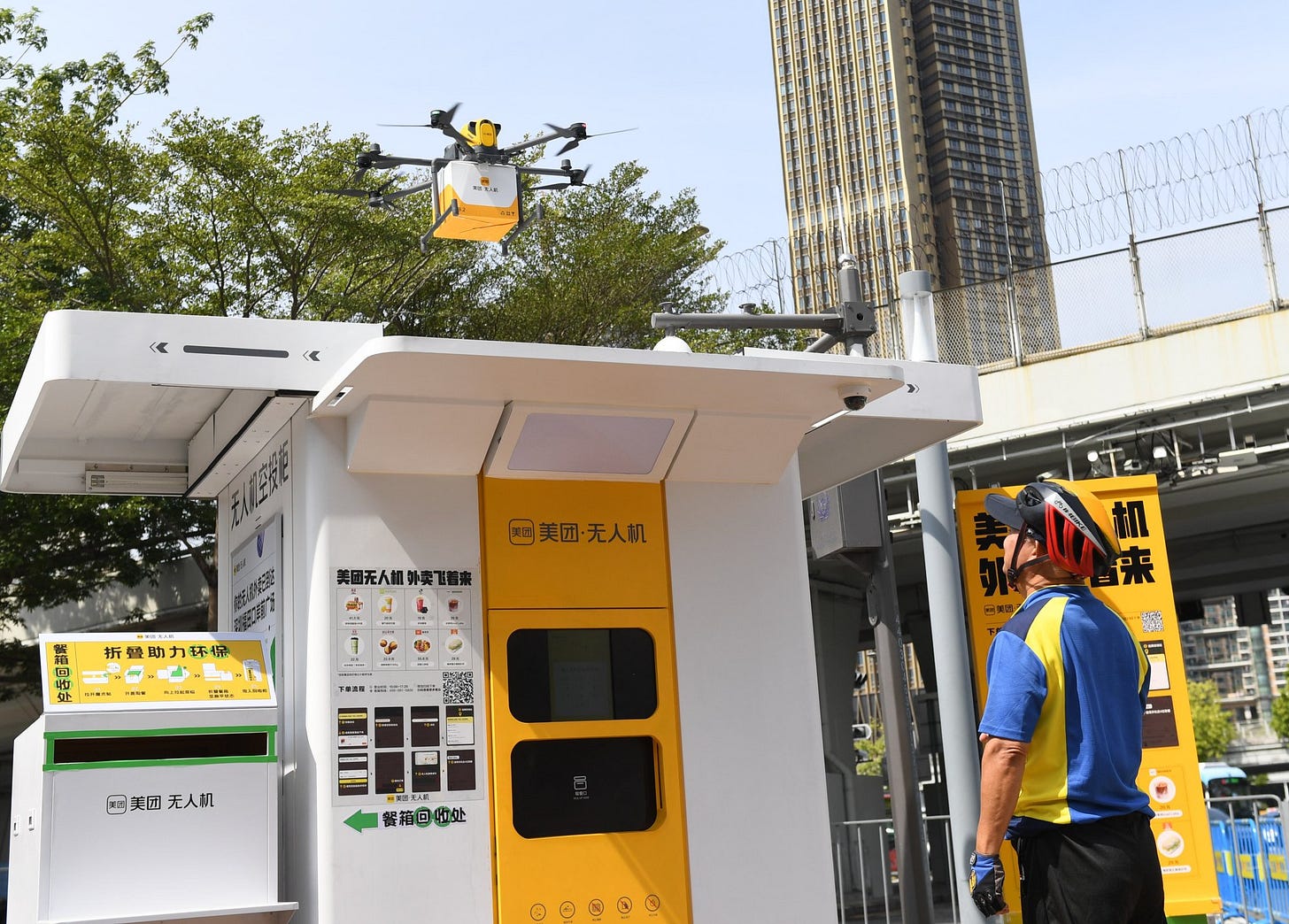
The pattern is universal: regulators want drone delivery to work and see the benefits, but don’t know how to write rules for something that doesn’t exist at scale yet, so they allow exemptions, run pilots, and hope to reverse-engineer regulations from operational reality.
It’s the same with India too. And given that Airbound has earmarked the Subcontinent as its inaugural market, you might think that BVLOS restrictions would be a formidable sticking point to getting started. While true, Naman has a more nuanced take. He says that regardless of what the letter of the law says, “in practice, the government wants to see drones as a sector flourish. The 2021 Drone Rules are a refreshingly progressive policy. With 90% of the country in green zones, it’s one of the few places in the world where, as a drone company, you can actually fly. It’s why you have this flourishing ecosystem of drone startups, doing everything from crop spraying to surveillance to defence. I mean, the DGCA has even blessed pilots for drone delivery in Gurgaon. Nowhere else in the world have you seen drone delivery in the middle of a capital city.”
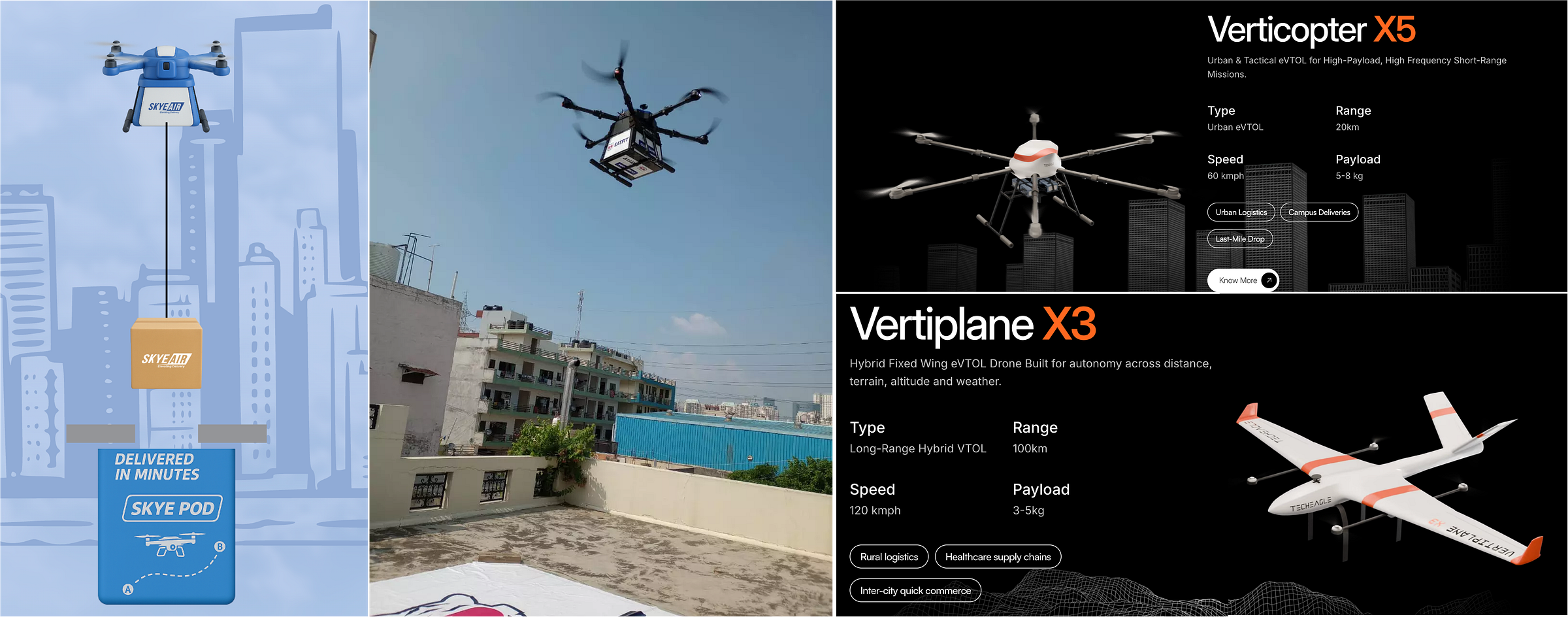
The BVLOS restrictions are at present a roadblock to Airbound’s unbounded operations. Per the letter of the law, for example, a drone delivery company can only do deliveries as part of their R&D activities, and can only do deliveries in airspace that is under their control, which are both fine for testing purposes but problematic for commercial operations.
While acknowledging the current stalemate, Naman says that “you have to first understand why these strict regulations exist. They’re a function of safety and reliability. Regulators can take zero risk of people getting hurt. It’s the same with general aviation too. The problem right now is that nobody in drone delivery is engineering from the perspective of safety and reliability. Everyone’s approach is short-term - just get drones out there and fly them as quickly as possible to try and capture market share. But the fastest road to a million deliveries a day is not the fastest road to one delivery a day. It’s a very slow road to one delivery, and I don’t care how quickly we get to that first delivery. The moment I can prove that my drones are safe - showing 1000 completed flights without a crash, or 100000 flights without an incident, with safety features properly demonstrated, showing we can communicate with air traffic control…we’ll get the blessing of the regulator too. It’s a safety problem, not a regulation problem.”
Naman believes that India has a chance to take the lead on drone technology, creating the right framework for innovation while balancing the need for public safety. Airbound is betting that its pilot use cases - particularly on the medical front - can help assuage some regulatory concerns. If not, then there’s a chance the company makes its commercial debut somewhere else - where the promise of its technology outweigh the fear of failure - and return to India sometime down the line. The team already completed a round of successful demos with government officials in Kenya last year to cover their bases.
“We see this as a global product,” Naman says. “We’re absolutely going to touch every market. India is just a great place to start - weirdly liberal on regulations despite the ambiguity, and if we can make the economics work here, we can make them work anywhere.”
The strategy: prove safety through thousands of incident-free flights, demonstrate economic viability through pilots like Narayana Health, and let the data do the lobbying. It’s a bet that regulations will follow reality, not the other way around.
19.2 What about ‘the market’?
In other words, is anyone really asking for this? Are there businesses out there looking for drone delivery solutions? Is anyone in India trying to break down the door at Airbound’s HQ to grab some of their TRT stash?
The short answer is yes. The Airbound team has already kickstarted conversations with various potential partners in India and abroad - ranging from medical organisations, logistics companies, food delivery, e-commerce and quick commerce companies, among others - to design pilots and explore use cases.
However, the priority for the team at the moment is not to massage the market, but to get their tech to do what they say it can do. For Naman, this represents a fundamental philosophical positioning on how to build a deep tech company:
“I describe this as the ‘Facebook-To-Cancer-Cure’ spectrum. It comes down to what type of company you’re building. If you’re building Facebook, your sales pitch won’t be about how good you are as a coder or how many PhD’s you have. It’ll be about how you’ll get users and keep them on the platform, because that’s how you provide value. But if you’re inventing the cure for cancer, I wouldn’t put much stock in a founder that says ‘hey I spoke to a hundred hospitals, here are all the pre-orders I’ve gotten, this is the TAM for cancer’. Nobody cares. You’ve either invented the cure or you haven’t. You can’t sell something that doesn’t exist.
So it comes down to: why don’t you exist today? A social media platform doesn’t exist because nobody’s figured out user retention. The cure for cancer doesn’t exist because nobody’s managed to invent it - it’s a technology problem, not a market problem. If you’re sitting on the roadmap for that technology, you should focus on making it happen, because the world obviously wants it. Most startups don’t have defensible technology. For us, unless we’re creating the best drones, we don’t have a reason to exist. We are up against a mammoth tech challenge to get this working at scale. I would much rather spend time in R&D to create the best possible product that nobody else can compete with than rushing out whatever half-baked thing I have into the market to score a few PR points or to validate demand that obviously exists. Luckily we’re now in a capital market that rewards that kind of patient ambition.”
This approach might buck conventional wisdom (and scare off some investors) but its based on the belief that everyone would queue up to access a quicker, cheaper form of delivery - if it was available and reliable. The hard part isn’t selling one rupee delivery, it’s in making that happen.
“The fact is that nobody believed these kind of unit economics were possible,” Naman says. “Drone delivery has so far been marketed as a premium service. In the US and Australia, customers are currently paying steep rates to order from places like Walmart (via Zipline, Wing etc).”
“In Africa, governments are willing to pay that high fee in exchange for the improved access that drone delivery provides. In other cases (including China and India) companies keep prices artificially low to encourage adoption while taking the financial hit themselves. In India drone delivery currently costs Rs 100 per km for an average cost of Rs. 1000 per delivery. That’s so far off from even current quick commerce rates - which cost Rs. 10 per km. Drone delivery isn’t top of mind for enterprises because it’s just too expensive.”
Airbound’s bet is that once they prove their economics are achievable, market adoption becomes inevitable, and any other practical challenges are easily resolved (eg: like convincing their partners to devote time and space for dedicated landing zones at their dark stores). For Naman, it’s the assumption that at a cost of one rupee per kilometre, delivery becomes the biggest possible TAM of all - spanning the current market size of e-commerce, quick commerce, logistics, shipping and personal mobility put together, not to mention whatever new markets their partners can dream up on the back of their tech.
“For us it’s about first solving people’s current pain points,” Naman says, “and then helping our partners redefine how they do business because our tech exists. It’s like, what can your business look like, what new things can you do, now that drone delivery is both practical and economically feasible?”
Watch this space.
19.3 What about managing the skies when drones are ubiquitous?
When there are thousands of drones operating simultaneously across a country, how do you prevent mid-air collisions, airspace conflicts, and chaos in the skies?
The answer is UTM - Unmanned Traffic Management - essentially an air traffic control (ATC) system for drones. The difference from traditional ATC is that it can be largely autonomous. Since drones fly autonomously and operate far more frequently than passenger planes, the traffic management system can also run algorithmically rather than requiring human controllers monitoring radar screens.
“It’s a well-explored concept,” Naman says. “It’s more of an operational challenge rather than a technical one - i.e. understanding how to deconflict airspace. Coding it up just needs a couple of decent engineers and a few months.”
The system would work through centralised protocols where all drones broadcast their locations to a server in real-time. Algorithms handle routing to prevent conflicts, with human operators stepping in only when exceptions occur - similar to how most flight today is autopilot with pilots monitoring for edge cases.
Airbound’s approach is to work with India’s aviation regulator (DGCA) to establish these protocols early and help the central government to build out the necessary capabilities and infrastructure to manage a post-drone sky-scape.
19.4 What if something goes wrong?
Airbound thinks about failure in three categories, each with different stakes and different solutions.
Grade One: Failed Deliveries Weather gets rough, the government suddenly restricts airspace for military operations, or something else goes sideways - the drone returns to base without completing delivery. This is a nuisance for customers but nobody gets hurt. “Failed deliveries will happen to some extent,” Naman acknowledges. “You want to minimise them, but they’re not catastrophic.”
Grade Two: Lost Aircraft The drone crashes and can’t be recovered. This hits the economics hard - if drones are crashing after 100 flights instead of lasting 5,000, the entire cost structure falls apart. “Right now I’m quoting one rupee per kilometre, but if my drone crashes after 100 flights, I cannot be charging that,” Naman reasons. The solution: obsessive focus on stability and robust return-to-base protocols even in harsh conditions. The drone might fail the delivery, but it won’t fail to come home.
Grade Three: Harm to People This is the unacceptable failure mode - drones crashing into people, buildings, or causing accidents. This category must be driven to zero, which is why Airbound’s design philosophy centres on inherent safety rather than just redundant systems.
“We want to create a world where everyone feels safe with the idea of drones in the sky the same way we do with planes,” says Naman. “That only happens when people have confidence that no matter what goes wrong - maybe the delivery fails, maybe the drone crashes - but it’s never going to hurt anyone.”
This is where weight becomes a safety feature. At 2.5kg fully loaded, even if every safety system fails and the drone falls from the sky, it doesn’t have enough kinetic energy for a fatal impact. Add the parachute system (which deploys faster on a lighter aircraft), and you’re looking at something that descends slowly enough to be essentially harmless.
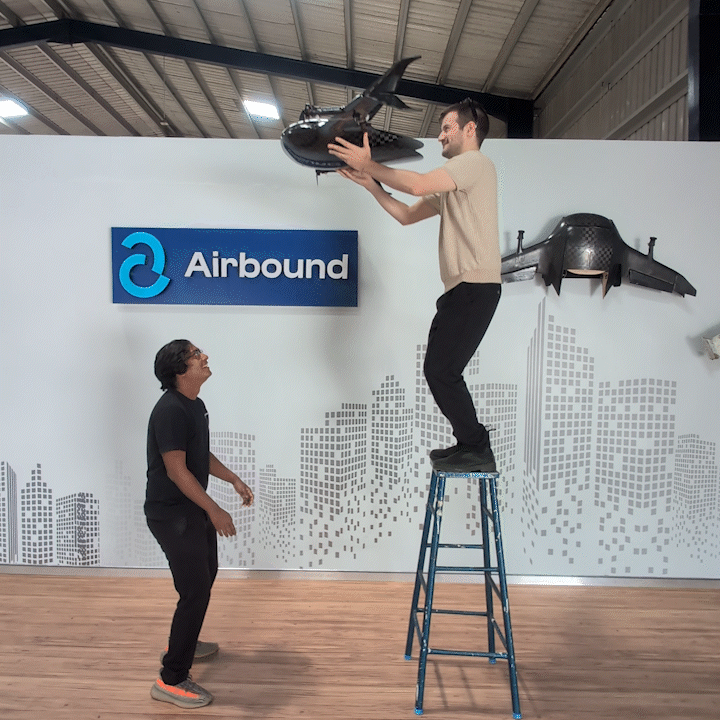
“There’s a reason there are regulations around flying passenger planes but none around flying paper planes,” Naman offers. “Obviously drones are more dangerous than paper planes and less dangerous than aircraft, but our goal is to make them as close to the paper plane end of the spectrum as physics allows. It really comes down to good design.”
19.5 What about the noise?
Noise from propellers is determined by three things: how big the propellers are, how fast they spin (Revolutions Per Minute or RPMs), and how many you have. Smaller propellers spinning faster create high-pitched, piercing sounds - that annoying mosquito-like whine you hear from camera drones.
Airbound’s TRT uses just two large propellers instead of the four or more on typical delivery drones. Fewer propellers means less noise. The TRT also weighs only 2.5kg fully loaded - which means the propellers don’t need to spin as fast to generate lift.
The result: if you’re standing next to the drone during takeoff and landing, you’ll hear more of a low-pitched hum instead of a high-frequency screech. Once it’s flying overhead in fixed-wing mode, it becomes essentially silent “The only people that will hear it are those receiving the delivery, and even then you’re hearing it for maybe 30 seconds,” Naman explains. “It’s quieter than a car passing on the road.”
19.6 What about the weather?
A common objection to ultra-lightweight drones: won’t they just get tossed around like paper planes in heavy wind?
This gets at a misconception about weight versus strength. “Just because something is heavier doesn’t make it stronger,” Naman explains. “There’s ways to make things lighter and stronger. That’s what we’ve really been working towards.”
Weather resistance comes down to control systems, not mass. Airbound’s early prototypes would crash in winds of just 15 km per hour because they relied solely on control surfaces (flaps and rudders) to maintain stability. The breakthrough came from implementing thrust vectoring - rotating the motors themselves rather than just adjusting surfaces.
“We’ve had this drone now fly in 60 km per hour gusts without incident,” Naman says. The thrust vectoring system provides far more control authority, allowing the aircraft to make rapid adjustments to counter wind disturbances. The flight computer can detect gusts and respond faster than any human pilot could.
The video above is from flight tests back in August. There’s ongoing work to improve these systems further - better sensors to detect turbulence earlier, more sophisticated algorithms to predict and counter wind patterns, refined motor responses. But the fundamental capability is already there: Airbound’s lightweight aircraft can handle conditions that would ground heavier drones precisely because its control systems compensate for what it lacks in inertial mass.
The counterintuitive reality is that being light becomes an advantage once you solve the control problem - the aircraft requires less force to correct its position, responds more quickly to control inputs, and consumes less energy fighting through adverse conditions.
19.7 What about jobs?
If, in the majority of cases, drones can fulfil the task of delivery faster and cheaper than any human+vehicle combo, won’t this just wipe out lakhs of gig economy jobs - delivery riders, logistics workers, drivers - in a country where employment is already a sensitive issue?
Naman offers a nuanced take on the calculus of employment and displacement in a post-drone world. He says “The gig economy exploded in India not because it created amazing jobs, but because cities became the only place where economic growth was happening. A Swiggy driver in Bangalore sits in the top 30% of income earners nationally - not because delivery pays well, but because being in a city pays. People migrate from villages to metros, become delivery riders, and send money home because there’s simply no economic opportunity in rural India. Growth really isn’t happening outside of cities, and it slows heavily when you move outside India’s major cities. It’s why if you look at the past decade, median income in villages has likely gone down. We want to play a part in changing that.”
If Airbound achieves its goals, their hope is to stimulate economic activity in the parts of India that are currently in the shadow of India’s growth story.
“One rupee delivery is crazy and useful in Bangalore,” Naman explains. “But if you enable one rupee delivery inside a village, that’s a genuine step-change. It opens up entirely new markets and growth opportunities that don’t exist today.”
Even accounting for the new opportunities that would arise in the most optimistic visions of Airbound’s future, there will also be a direct impact in the drone delivery value chain itself. According to their Head of Operations Amrit Hundal, Airbound itself will need to shore up its team with ‘dispatchers’ managing battery swaps after each delivery; ground staff loading payloads at takeoff/landing zones, operations staff overseeing fleets, manufacturing workers building drones at scale etc.
Perhaps a broader point worth making is that humans are generally terrible at predicting what happens when labour collides with new technology. ATMs were supposed to eliminate bank tellers—instead banks opened more branches and hired more tellers for different tasks. Phone operators vanished, but telecommunications created millions of call centre jobs and eventually the entire app economy that employed delivery riders who didn’t exist before. “This isn’t a universal law, but it’s something that has generally been true,” Naman acknowledges. “If we can enable genuine growth, create manufacturing jobs, and new service opportunities across the country rather than just in metros - I think that’s going to be far more accretive to employment than the jobs that might get displaced.”
19.8 What about scale?
Last one. And it’s a fun one. Because it’s really two questions at the same time.
It’s both a practical question about how Airbound gets to where it’s trying to go, and also about how it got here in the first place, going from single-player hobby project to full-fledged deep-tech enterprise with epoch-defining aspirations.
For Naman, Airbound’s success or failure will ultimately come down to its manufacturing prowess. Why manufacturing?
Because the company’s current goal is to be doing one million deliveries per day by mid-2027. That means they need to get to basically 100% flight reliability (i.e zero crashes or close to it) over the next 12 months. To reach that, they need a ton of flight data, which needs flight volume, which requires having a large, operational testing fleet, which comes down to their ability to manufacture drones - fast.
“Our ability to manufacture determines our ability to learn fast and improve fast,” says Naman. “We’re currently aiming to do 10,000 test flights per day by the end of 2025. This would require a fleet of 120 drones and essentially around-the-clock operations. It means that a single Airbound ‘pilot’ will be supervising the flight of 15 drones at once. They should be able to monitor this entire fleet from a laptop. Getting this pilot-to-drone ratio right is crucial to scaling.”
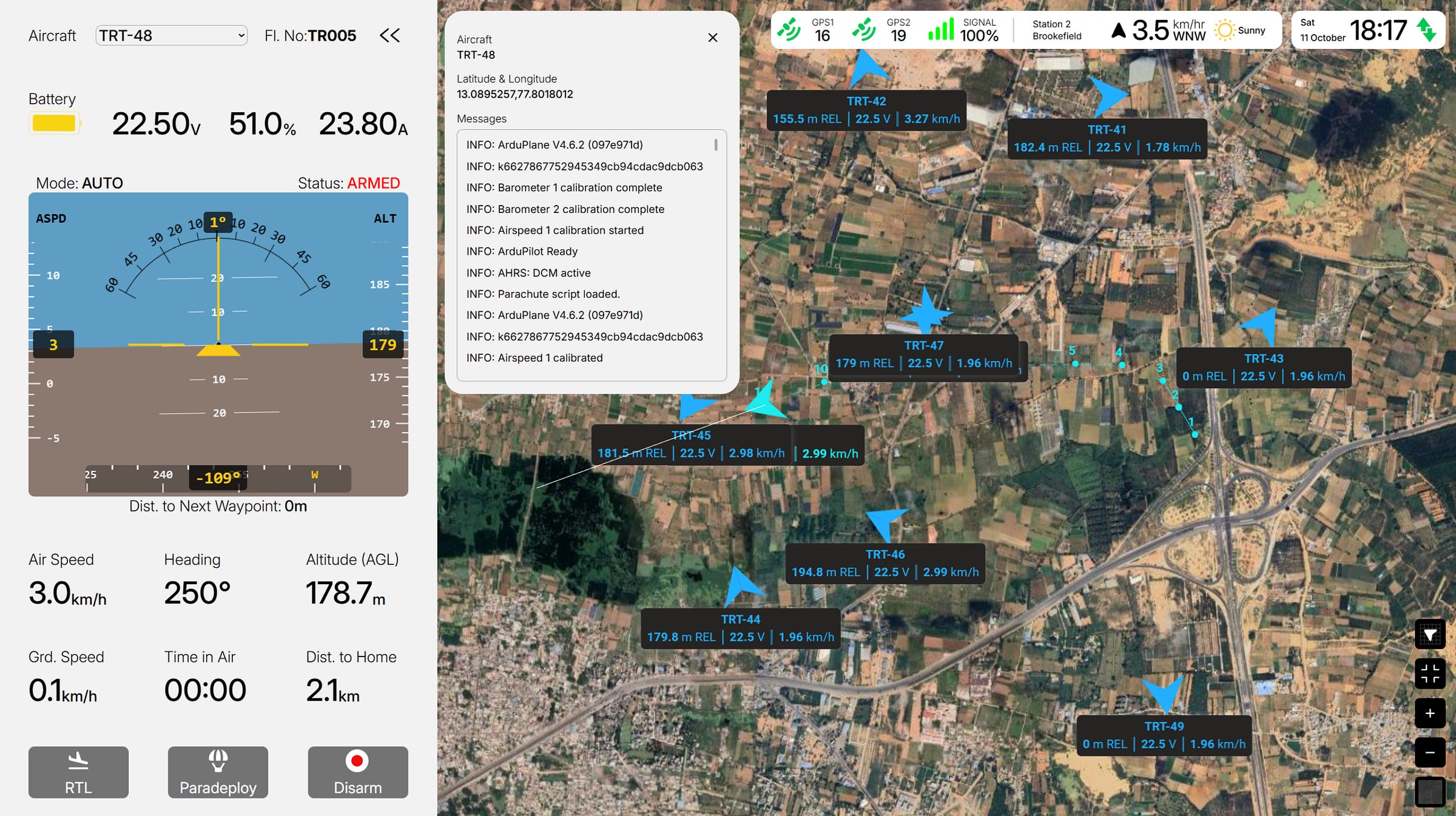
“The bottom line here is that none of this works unless we have drones. We need to be manufacturing four drones per day by the end of this year to hit any of these targets. By 2027, that needs to be at 100 drones per day, so we have a mountain to climb.”
2025 has been a year of foundation-building at Airbound. That’s not to say they haven’t made any progress against their objectives. Since I first visited the Airbound HQ in April, the team has gone from making one drone every two weeks to now one drone every day.
They’ve progressed from averaging one crash every 20 flights, to being 834 flights (at last count) from their last crash. Their goal is to get to just one parachute deployment (i.e. one flight gone wrong) for every 1000 flights by the end of the year.
In May, Airbound managed to complete 27 successful test flights (which consists of a take off, transition to fixed wing flight, 2 kilometres of flight time, transition to vertical flight, and a landing). In August that rose to 233 completed flights and then close to 1600 flights in September.
Underlying all that progress has been their breakthroughs on the manufacturing front, captured in this slick video released earlier this week:
“What we’ve managed to do with composite manufacturing is almost akin to inventing a new alloy,” says Naman. “In theory it’s just mixing materials together. There isn’t even a chemical reaction. The process is relatively simple to do once, but to manufacture it at scale is extremely hard. It takes more than 200 individual components and over 300 steps to make a single TRT aircraft. We’ve had to invent our own proprietary jigs and tooling to automate a lot of these steps. We’ve come up with novel techniques for things like optimising the amount of resin used (to reduce weight), the way the cloth is layered, the way it’s cut to fit around our moulds, and a lot more. We’ve had to bring so much of the process in-house because external vendors just cannot work with cloth that is this light. We’ve had to go zero-to-one on a lot of this stuff.”
As to why Airbound finds itself in a position to break new ground on expertise in composite manufacturing, Naman offers a theory. “We’ve had 200 years to master metals, which is why we’re so good at scaling them. We literally liquefy metals at thousands of degrees celsius, inject them into a cavity, somehow ensure there are no bubbles, solidify the part, eject it, and repeat for 2000+ times every hour. When it comes to composites in large scale industrial applications it’s really only been a few decades of use. And even then, this has mainly been in aerospace and luxury applications, neither of which demand large scale output.”
“For instance, in aerospace, for companies like Boeing or SpaceX, composites are being used as a replacement for metal for giant parts. The challenge there is how do you fit a 20-meter wing in an oven to cure, and how do you get this material certifiable by aviation standards, not how do you extract every last bit of efficiency from the process, or how do you push the limits on strength vs weight. The automotive industry or even typical drone manufacturers don’t care about optimising the structure of the material itself because weight isn’t as much of a priority as other things. So there hasn’t really been a market pull for a combination of small parts, low weight, extreme optimisation, and mass manufacturing of composites. For us this is make or break. We have no choice but to innovate, to save every gram in production and every minute in manufacturing. It’s kind of like the difference in skillset and coordination you need when making a tiny origami dragon vs a giant one.”
For all of the progress highlighted above - from R&D to flight testing to aircraft reliability to carbon fibre manufacturing - Naman is quick to credit the work of someone from his team. And that makes sense, because over the past 18 months, Airbound has been collecting world class engineers like Infinity Stones, each of whom have begun leaving prominent fingerprints across every pillar of the enterprise.
That’s what it comes down to. For Airbound, the search for excellence across all these domains is at its core a search for excellence in engineering. That’s the outcome of having the right people, but also the right culture to catalyse that talent. To bring us home, we’ll finish with a sprinkling of…
What (is it) about Airbound (that) makes it special?
“If there’s one word that defines Airbound, it’s ‘engineering’. This is a place built by and for engineers. We need to be the company that every young engineer in India aspires to join. So much of what we’re doing has no precedent, no industry standard or benchmark. So we need people that are obsessively curious about solving hard problems, people who will question the ‘why’ of everything, people who will drill down to the fundamental physics involved to find a solution. That starts with me. I see myself more like a CTO masquerading as a CEO. I think any true deep tech company needs a technical leader to maximise the talents of their engineers. Our team needs to have people obsessed with what they’re building, and in return, it’s my duty to create a culture more committed to pushing the boundary than any other in the country.”
A quirk of Airbound is that, from late 2023 onwards, Naman mandated that every engineer joining the team had to get the word ‘obsessed’ tattooed on their left forearm. That fact is obviously something I just made up, but it may as well be true. That word came up more in my conversations with Naman and the team than anything else. It’s even plastered on their website in the section about their engineering philosophy.
Another phrase that comes up a lot with the Airbound team is ‘engineering fundamentalism’. It’s the idea that:
- ‘no incremental performance will be left on the table’
- ‘if there is a better way to do something, then that’s the way it must be done’
- ‘if it can be made better, it will be made better, otherwise it would mean we’re just too lazy to improve’
- ‘we don’t deal in tradeoffs until we’ve found the limits - first all limits need to be pushed to the max’
- ‘you can’t say ‘it can’t be done’ based on vibes alone, but you can say ‘it can be done’ based on vibes alone. We are happy to entertain possibility, but to declare ‘impossibility’ requires rigorous proof’
None of this is lip service either. The team is hyper-aware that if some other company beats them on technology or unit economics, Airbound is dead in the water. It’s why they can recount hundreds of examples of where/how this relentless search for efficiency and optimisation has led them to unconventional ideas that allow them to do more with less. The tailsitter is one example of this, but there are plenty of ‘micro’ examples too. Case in point - the design of the cargo bay doors of the TRT.
Initial versions of the TRT had doors that opened like this.
They eventually transitioned to doors that open like this - sort of sliding out and up as opposed to opening out and wide.
“The design for the flap opening is an example of engineering elegance,” Naman explains. “It’s a single mechanism that serves multiple functions at once. One, it opens up to access the payload inside - that’s the basic function. But because it juts upward, it creates additional clearance for the landing legs, without which the wings of the drone would need to be crazy long or the legs of the drone would need to be much taller. And finally, this design effectively halves the surface area of the drone that’s exposed to the wind, which makes a huge difference to the stability of the aircraft while landing.”
Where did the idea come from?
“I was watching Iron Man after getting home from work one day,” Ganesh says. “I saw the mechanism for the mask and thought we could do the same with the doors. The nice part is that everyone was down to give it a shot.”
That last part is significant too. Over the past five months I’ve spent several hours in conversation with Airbound’s team. At the risk of getting too gonzo here, the coolest part of these conversations was that in every single one, the person I was chatting with took the time to salute the work of someone else from the team.
“Mayank (ex-Vimaan and Tonbo Imaging) was the first real software engineer to join the team and he had to immediately do this Crime Scene Investigation to figure out why our drones kept crashing during the backward transition to vertical flight for landing. He dug through the entire open-source codebase, found a one-line runtime error that was causing the bug, fixed it with literally one line of code, and we stopped seeing that problem again. We are even collaborating with the Ardupilot folks to fix it in their codebase so everyone else could benefit too.”
“Before Roy (ex-Bain and ISRO) joined, manufacturing was just chaos. The composites team would make parts and they’d sit in storage. Flight ops would complain they had no drones. Manufacturing was the bottleneck but nobody knew how to fix it. Roy came in with this very structured approach—document everything, time everything, break it down into small steps. He basically turned the whole company into this chain reaction of internal competition where every team started pushing the others to move faster.”
“Amrit (ex-OpenAI and Indian Air Force) is maniacal on cost and data. He started calculating things like battery draw, charge cycles, pilot-to-drone ratios etc. He got us to start thinking about flight operations like we were an F1 crew, so we became fixated on reducing the time wasted on the ground between flights on things like battery switching. He keeps hammering home that a business built around flight only makes money when your aircraft are in the air.”
“Sambit (ex-Pravaig Dynamics, IdeaForge and Valdel Tech) always wants to push the limits with composites. Most other companies in India work with cloth that’s 100 GSM or even 500 GSM. He’s figured out how to make the surface of our drone with a single layer of 40 GSM carbon fibre. It’s unheard of. One of our vendors from France came into the office and was like ‘what the hell are you guys even doing, no one else in the market is even attempting this!’.”
“Saarthak (ex-CTO at R. N. Group) basically built a fully functional replica of our drone where we could upload the flight log from a drone that crashed. It’s like a ‘black box’ that allows us to understand why things go wrong during flight. It would have taken two years for some senior guy to do it but Saarthak built it in three months.”
All told, the picture that was painted for me of day to day life at Airbound was one with equal splotches of intellectual humility and technical rigour, with lunch breaks that featured FPV drone races through the facility, and team meetings where people from different functions were welcome to sit in and learn - a workplace that was “luckily never infected by the bug of remote work.” That culture is one that spills down from the company’s CTO-cum-CEO, who’s now five years into “this naive search for engineering perfection” that has now spawned a workplace built around his own enthusiasm and deference to physics.
“The upper echelon of engineering talent has till now been scared off from the drone industry in India,” Naman says. “It’s because the ‘drone industry’ has so far mainly been about assembling Chinese drone parts in India, rather than doing any real engineering across different specialisations (structural, electrical, mechanical, composites, propulsion, controls, aerospace etc). No one is trying to innovate at the component level, to make things that are fundamentally better, lighter, cheaper. The difference is we’re not trying to just replicate the benchmarks or the tech of the US and China. We want to build something pathbreaking. Not something that is ‘good for an Indian company’, but something that’s the best in the world, that happens to be made by a company from India. If you’re the kind of person excited by that challenge, give me a call.”
20. Closing Thoughts
“There are these two young fish swimming along and they happen to meet an older fish swimming the other way, who nods at them and says “Morning, boys. How’s the water?” And the two young fish swim on for a bit, and then eventually one of them looks over at the other and goes “What the hell is water?”
The quote above is the opening hook to one of the most iconic college commencement addresses of all time. In a speech that was later christened “This Is Water”, author David Foster Wallace regaled Kenyon College’s graduating class of 2005 with timeless wisdom on how to make their most of their lives out in the real world.
Wallace’s point was simple but profound: the most obvious, important realities are often the hardest to see and talk about because we’re completely immersed in them - like fish in water, unable to perceive the medium that surrounds them entirely. Think of the kinds of social constructs that we take for granted, like the five-day-workweek, 18 as the magical age of adulthood, commuting to an office so you can sit at a desk, summer breaks from school that exist because of 19th century agrarian calendars etc. Wallace was teaching graduates that the real value of education isn’t knowledge but learning how to consciously choose what to pay attention to and how to interpret their everyday experiences, rather than operating on autopilot through their adult life.
What’s the significance of that story to us?
Because to see the future that Airbound sees, you have to start by noticing the water around you. Like how, as you’re reading this, there are thousands of humans sitting in 200-ton metal tubes 35,000 feet above your head, hurtling through the sky at 600 miles per hour. Or how we’ve decided that the best way to deliver a ₹50 packet of tomatoes is via a 70kg human on a 100kg petroleum-burning motorcycle. Or how sending something from Mumbai to Bangalore will take anywhere from 3-5-7 days, but the flight is just 90 minutes and the drive takes less than a day. Or how we’ve organised our cities to cater to the whims of automobiles instead of humans, optimising for auto-mobility instead of breathability or walkability.

None of these things are natural, and would seem insane if you described it to someone living both 100 years in the past and 100 years in the future. So when you hear that ‘autonomous lightweight electric-powered drones will be ubiquitous, and capture a meaningful chunk of our global logistics market’, it is easy to dismiss that prediction as absurd.
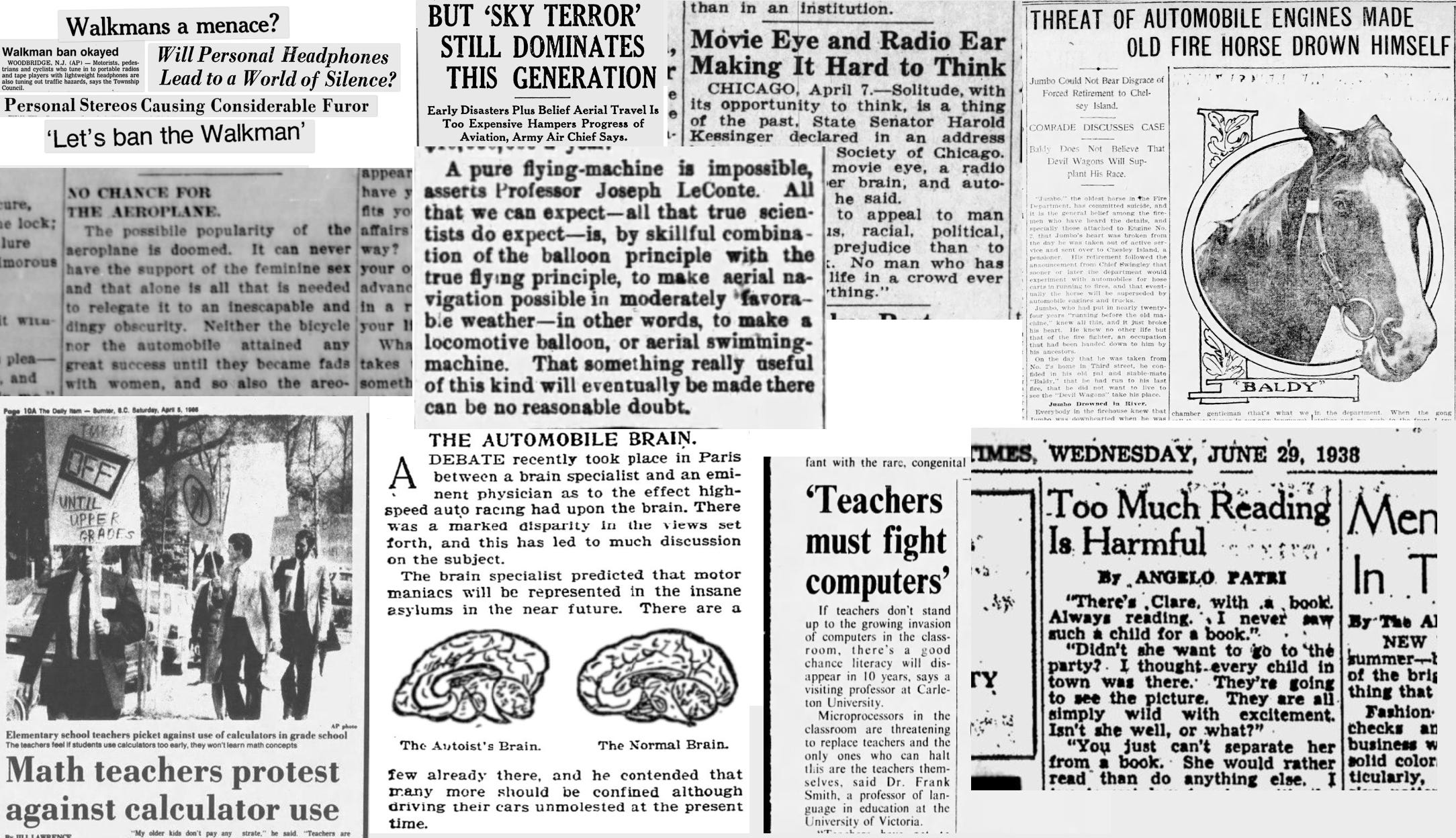
The future always sounds absurd until it’s boring. We assume that new kinds of transport infrastructure (buses, airplanes, Ubers, Rapido bikes) are best left illegal, until they’re too useful to ignore. To be clear, I have no idea if Airbound will succeed. That will come down to their tech, their unit economics, their ability to fundraise, to manufacture at scale, and to convince regulators, enterprises, and the general public that their product is sound. But if Airbound doesn’t succeed, it won’t be due to a failure of imagination.
“I believe this tech is inevitable,” Naman says plainly. “Maybe Airbound will be the ones to build it, maybe we won’t, maybe we crash and burn. Maybe someone beats us on speed or execution or experience. But this technology will happen. It’s just too valuable not to exist. I’ve spent enough time on the physics - there’s no part of me that thinks this is impossible. If I could figure this out as a high schooler, someone else could easily come up with something better. What we will not be beaten on is talent, optimism and ambition. The team here is 100% committed to doing its part to accelerate the future.”
That last statement is why we think it’s a good use of time spending 26,000 words going deep into the story of this company: Airbound is one of those rare Indian startups that is positioned to actually change how the world works if everything breaks right. With the closure of an $8.65 million seed funding round led by Lachy Groom announced this past Tuesday, they’re well capitalised to give this vision a proper shot.
And if they do pull this off? If one-rupee delivery becomes reality? If they succeed in turning logistics into a physics problem instead of a supply chain problem? If sending a package by human feels as archaic as sending a physical mail instead of an email, like going to the bank yourself instead of using an app?
Then, in Airbound’s version of the future, drone delivery won’t be weird at all. It’ll just be water.
Sources and more reading/listening/watching on Airbound, drones, and aviation
Lightspeed’s investment in Airbound
Design of the Blended Wing Body Subsonic Transport
Why Walmart And Alphabet Are Beating Amazon In Drone Delivery
Zipline - How Rwanda Built A Drone Delivery Service
A Cheeky Pint with Zipline CEO Keller Cliffton
The Truth about Drone Deliveries!
Amazing Invention- This Drone Will Change Everything
The Incredible Properties of Composite Materials
Carbon Fibre Reinforcement Weights and Weaves Explained
How Does Lift Work? (How Airplanes Fly)
How Does A Wing Actually Work?
Taming the Tail-Sitter: Hover to Forward Flight Explained
How to Make Prepreg Carbon Fibre Parts (XPREG® XC110)
This Irish Drone Startup Is Aiming For A Million Deliveries A Year
Remoticon 2020 // The Mechanics of Finite Element Analysis
This Indian Startup Wants to Replace Your Delivery Guy with Drones ft. Airbound
From Skies to Sidewalks: Inside the 2025 Drone Delivery Revolution
Packages by air: Drones take to city skies to deliver groceries
If you made it all the way here and you thought this was a good use of your time, it would mean a lot to us if you took a couple of seconds to share this post.
ACKNOWLEDGEMENTS
I owe a massive thank you to the Airbound team for trusting me with their story, and to Naman, Stefard, Roy, Mayank, Ganesh, Sambit and Amrit for taking the time to chat with me and being so generous with their insights. Thank you also to Hemant Mohapatra (Lightspeed Venture partners), Abhishek Sethi (Grad Capital), Leo Povolets (Humba Ventures) and Ben Jubas (Avenir Growth Capital) for taking me through the Airbound story from their respective vantage points.
ABOUT THE AUTHOR
Rahul Sanghi is the co-founder of Tigerfeathers, which features epic stories about Indian companies that have the potential to be historically significant. He previously served as Fintech Lead for Visa in India & South Asia. He began his career as a consultant with KPMG in London, spending a majority of his time helping the firm set up its global enterprise blockchain and crypto asset advisory practice. He moved back to India in 2018 and joined Koinex (then India’s largest cryptocurrency exchange) as Director of Business and Strategy, before assuming the same role at B2B-SaaS startup FloBiz. He most recently spent 2024 working as an Amorphous Blob with O’Shaughnessy Ventures. He doesn’t know why he’s writing this in third person, but whatever.


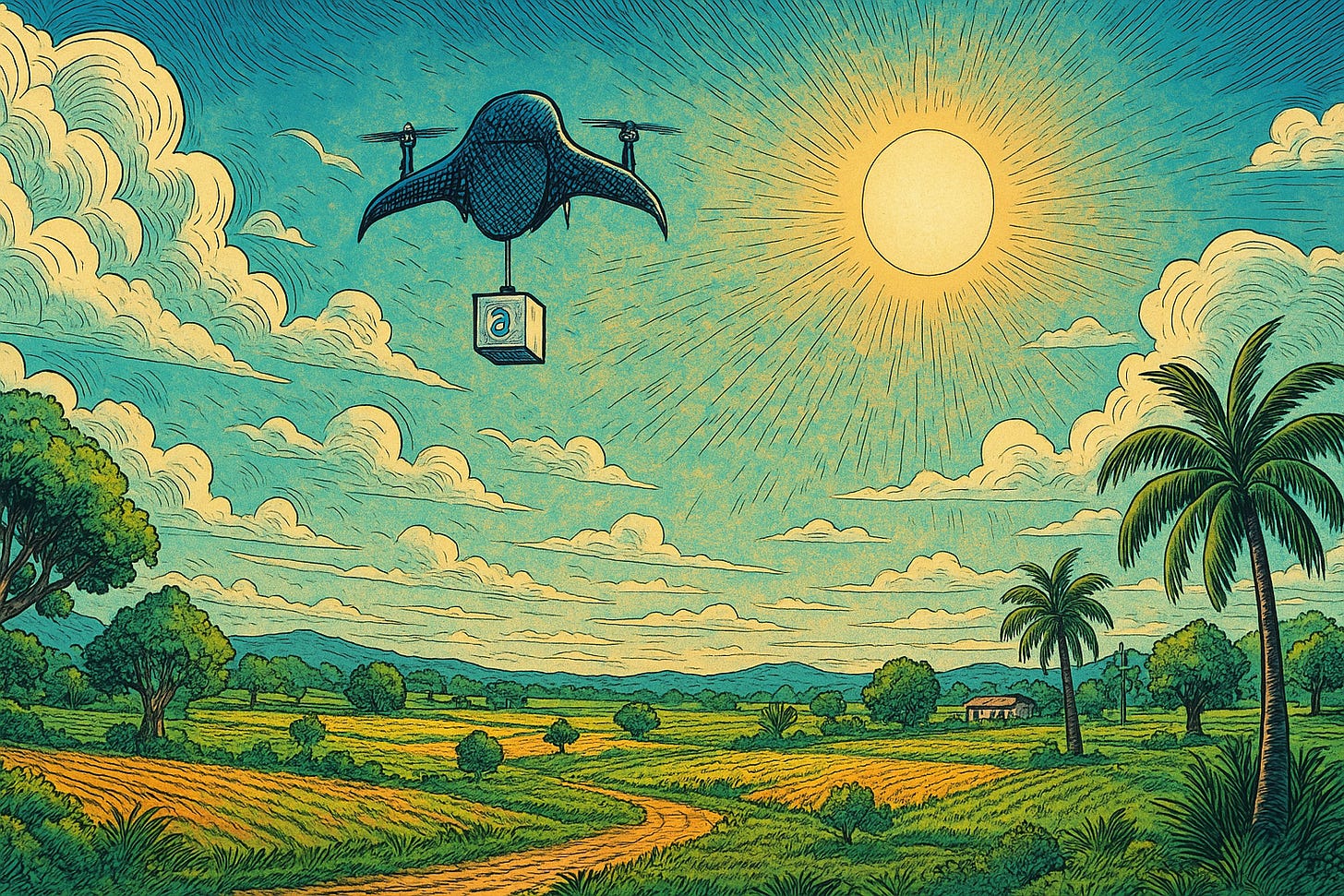

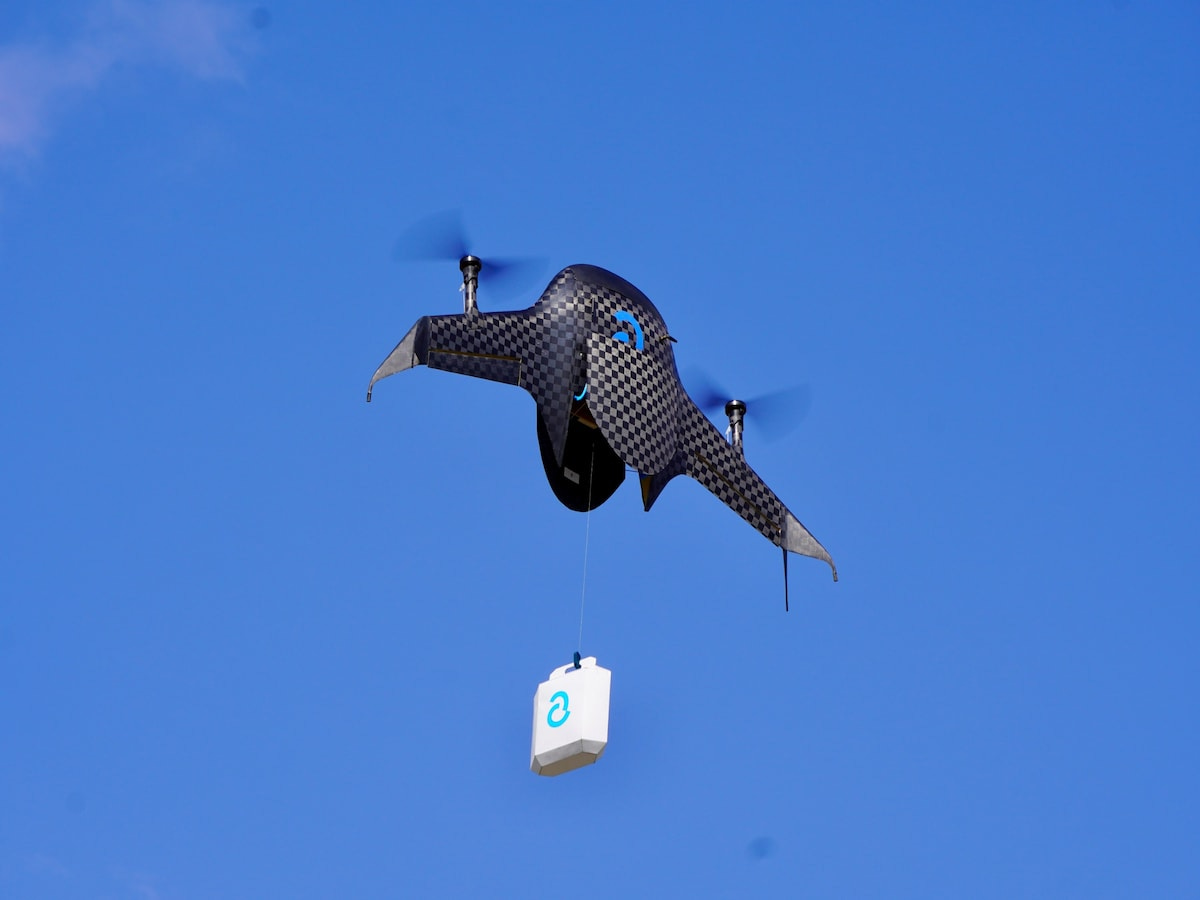
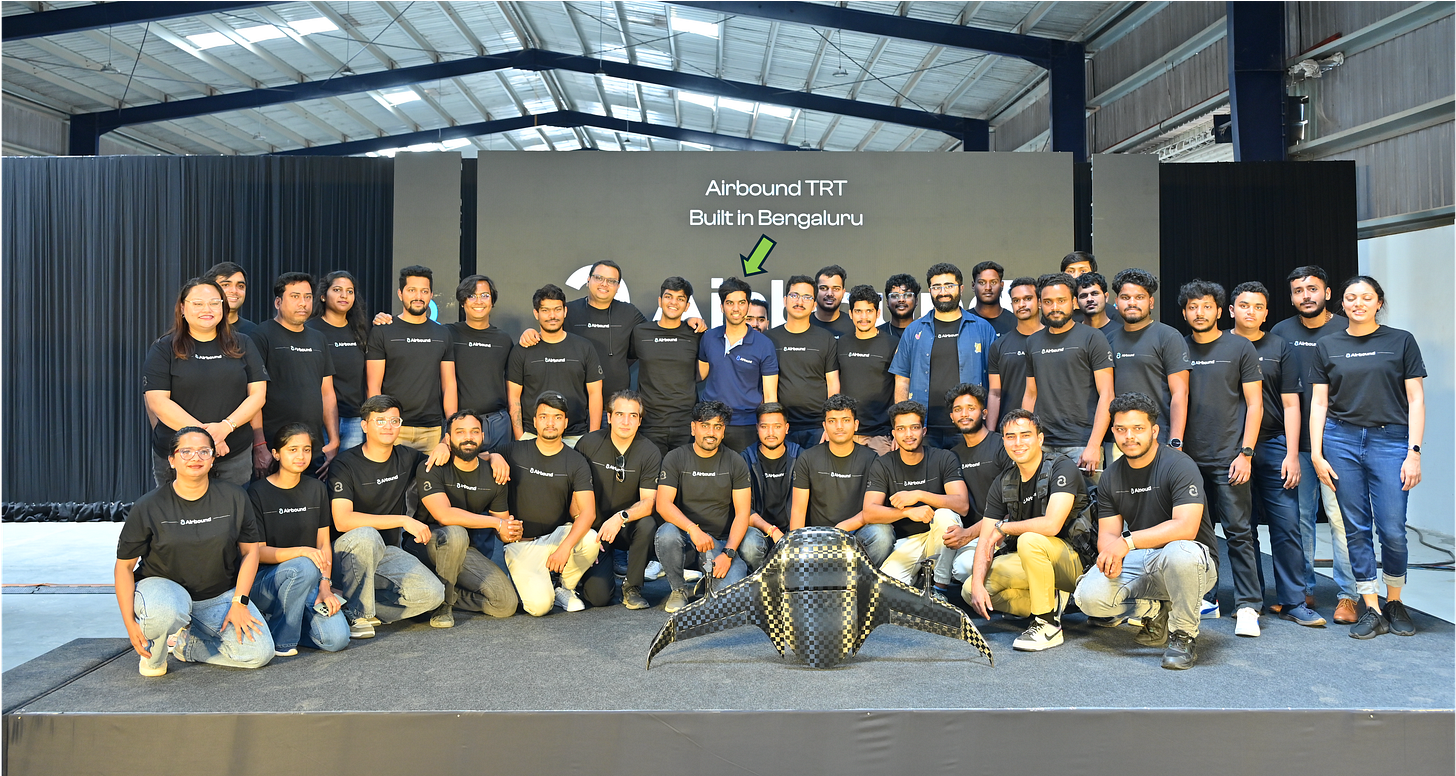


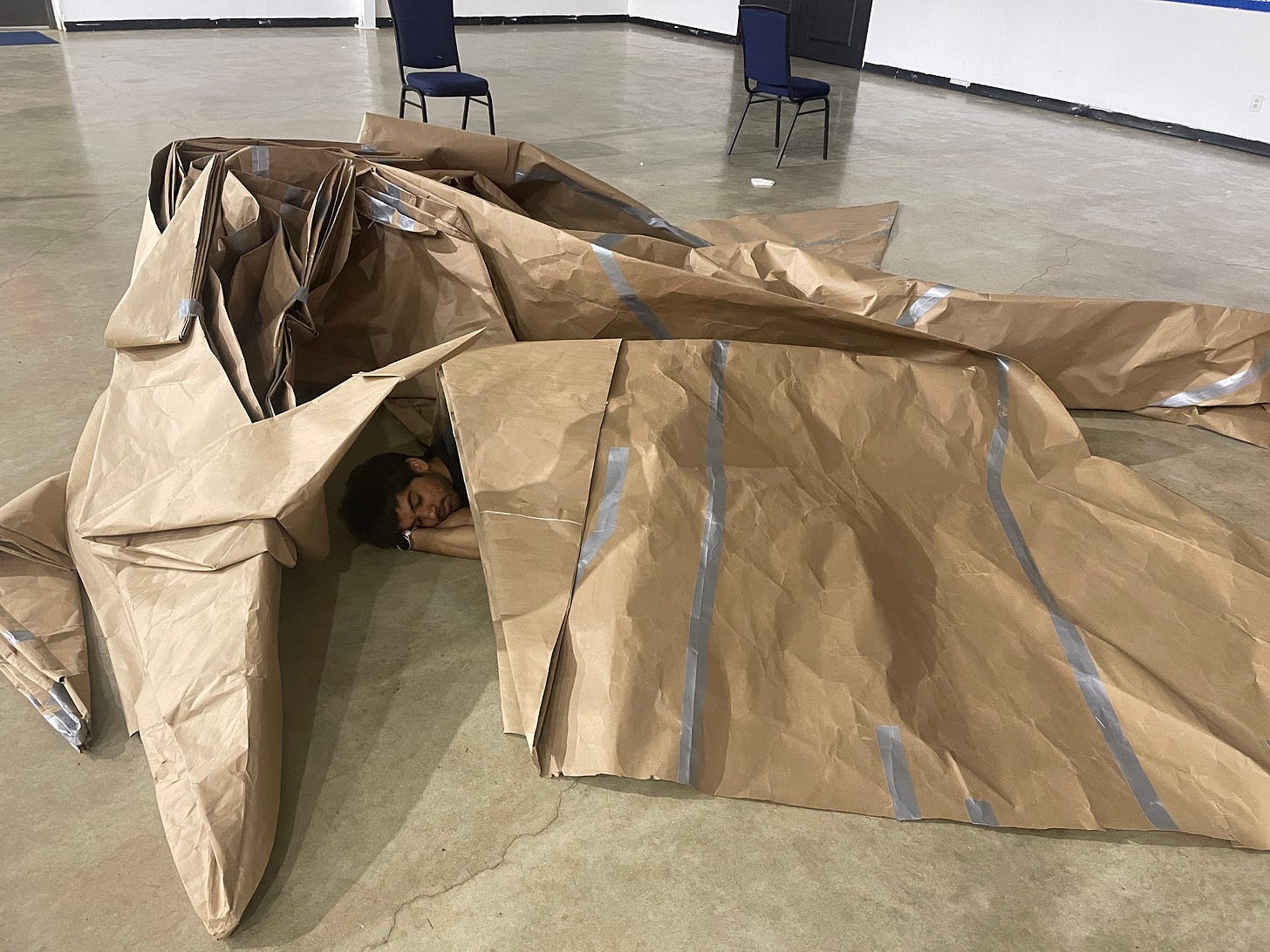
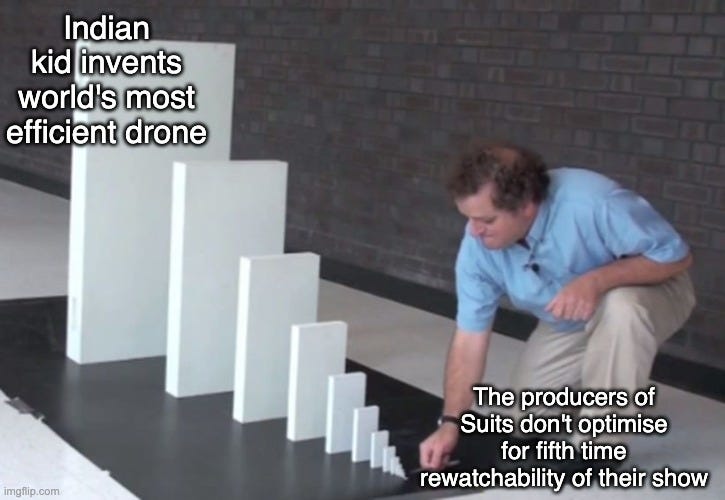
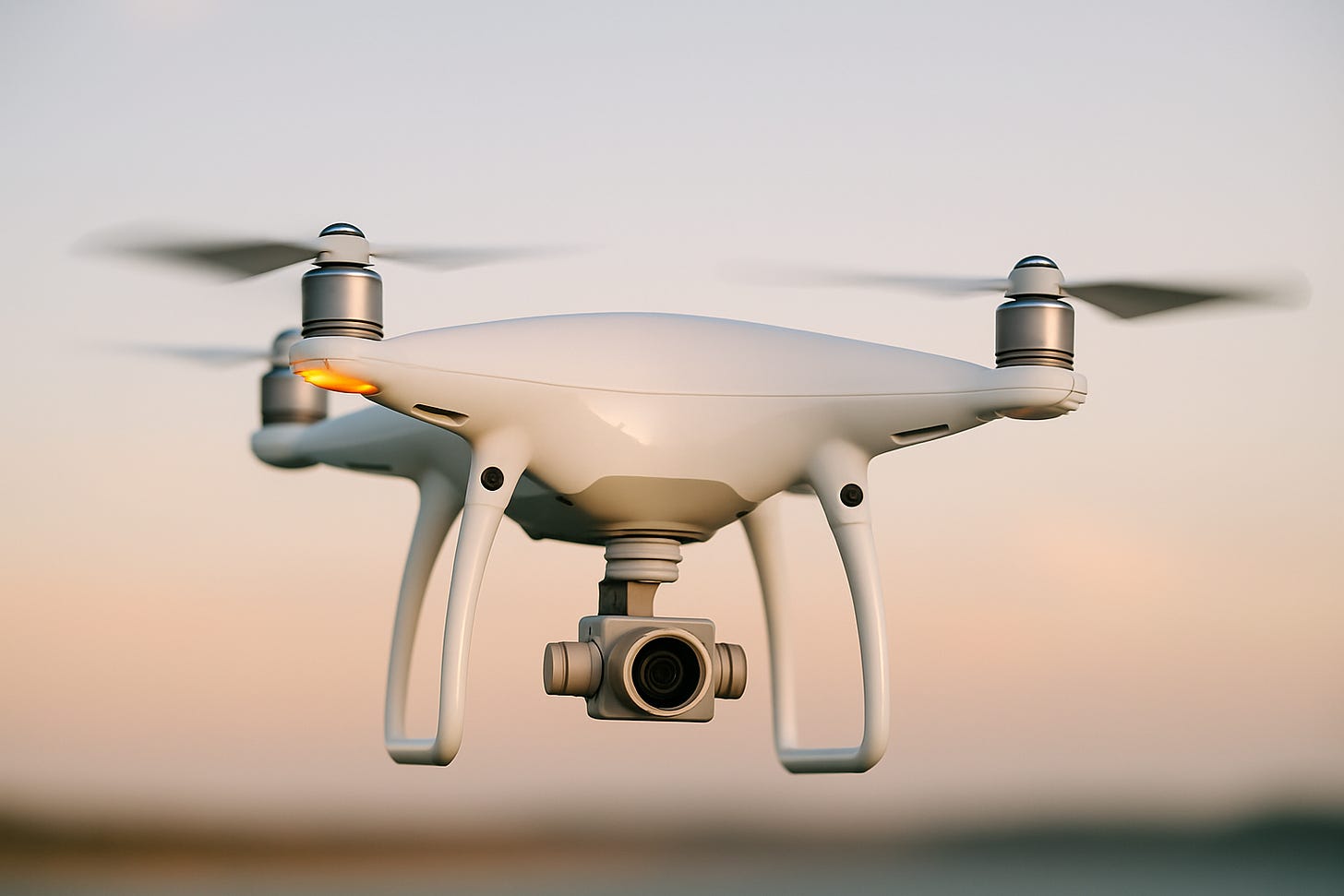
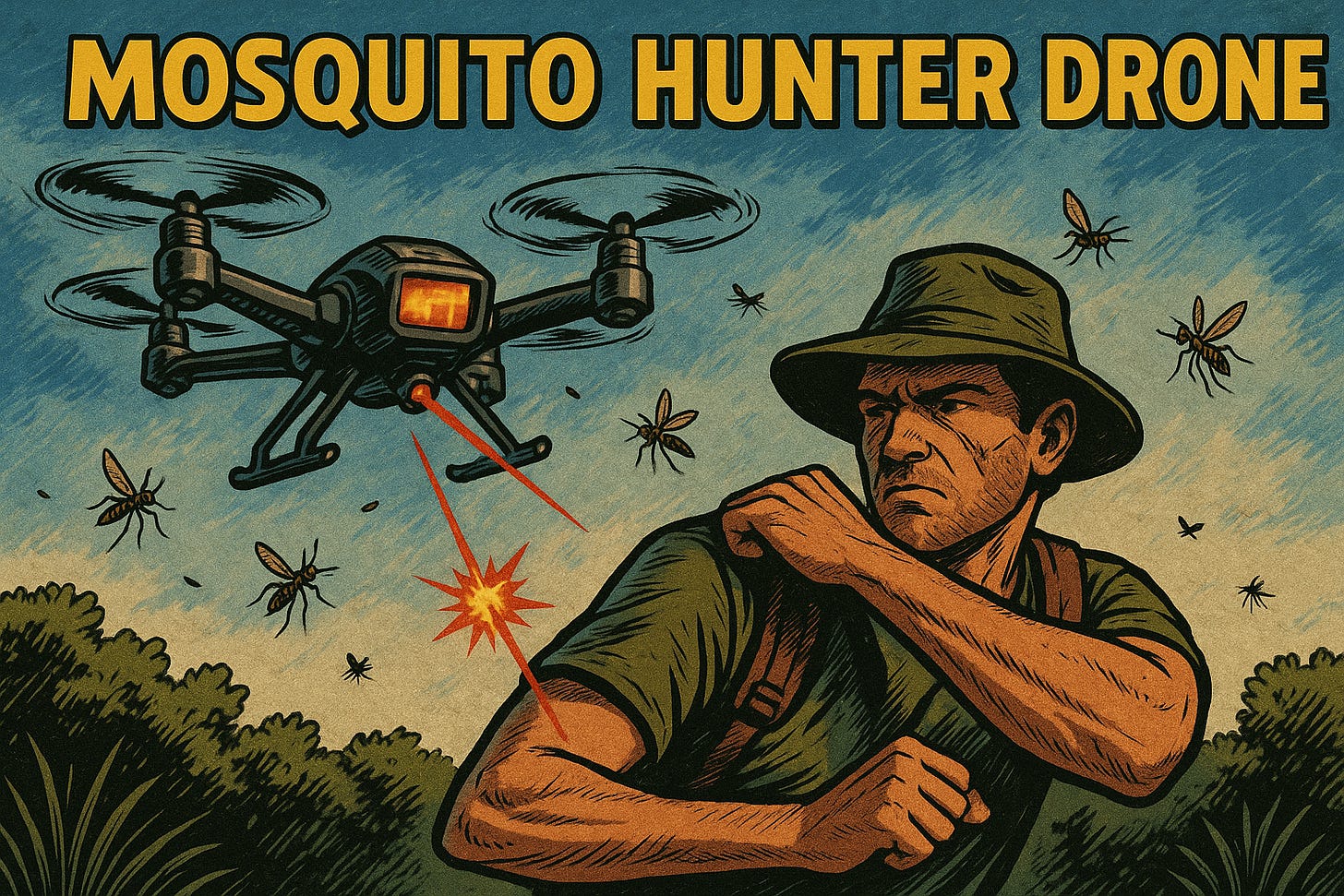



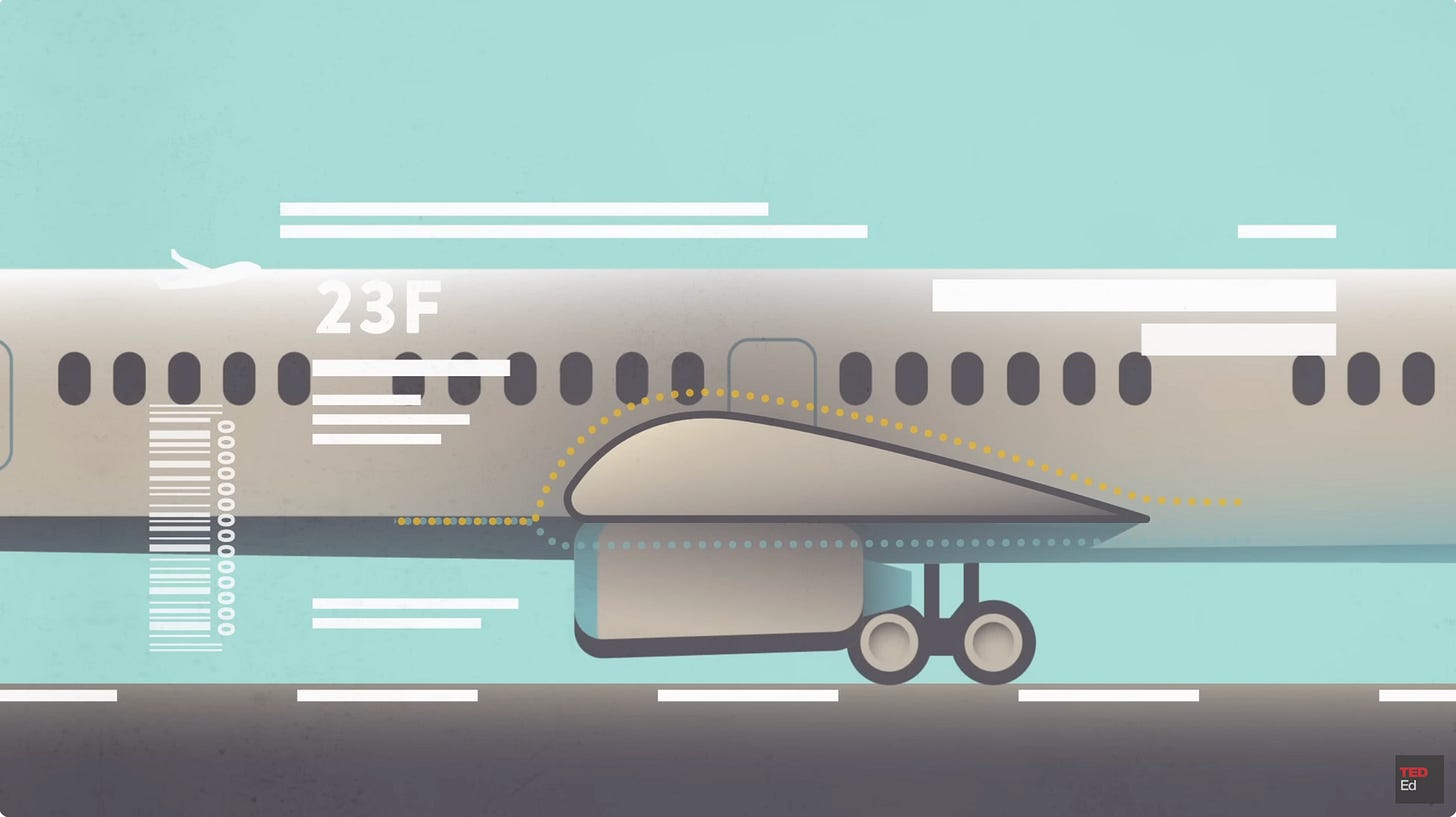
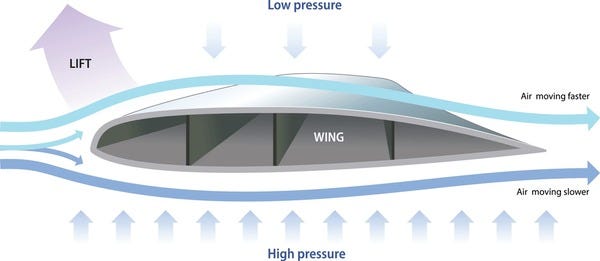



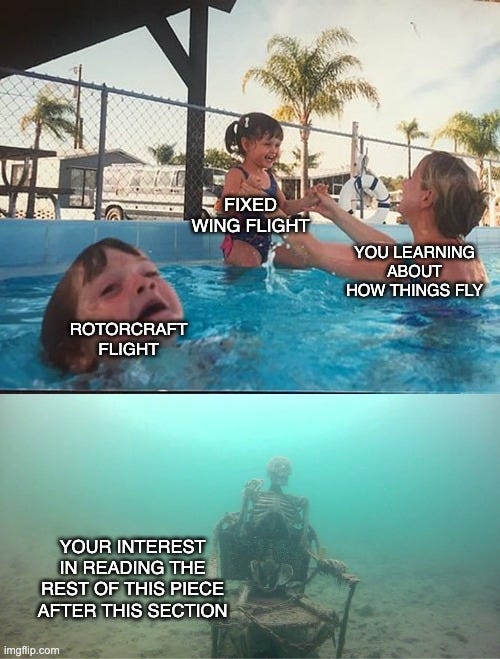



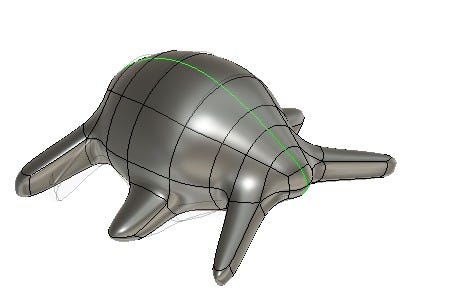

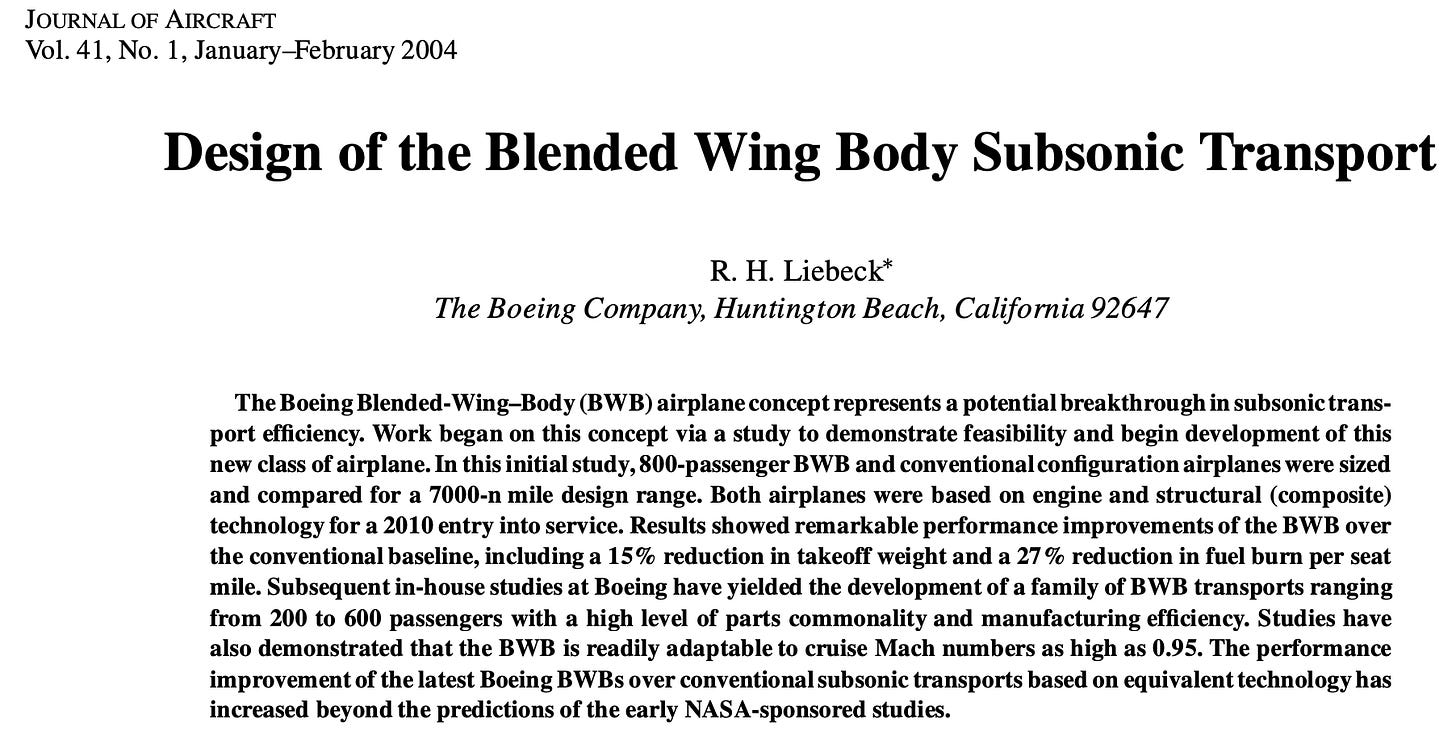

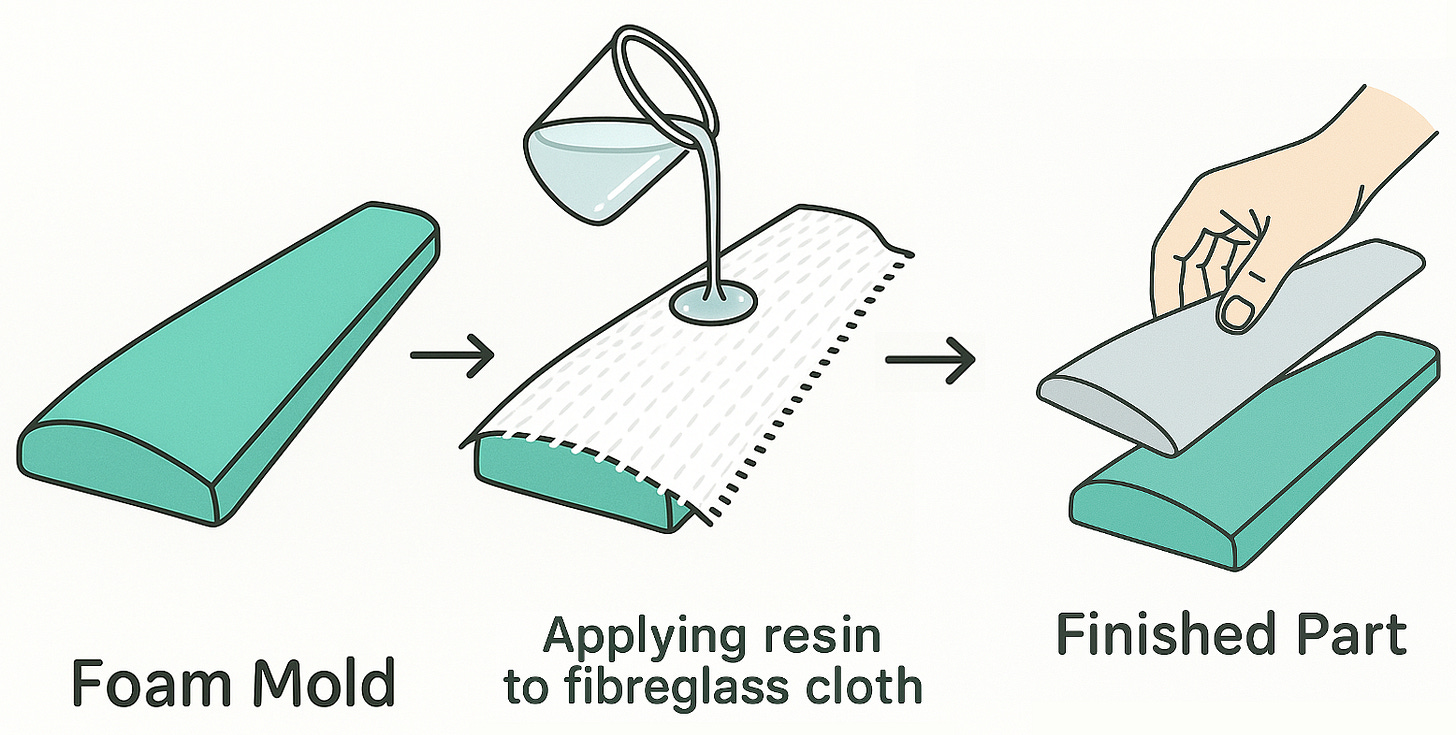
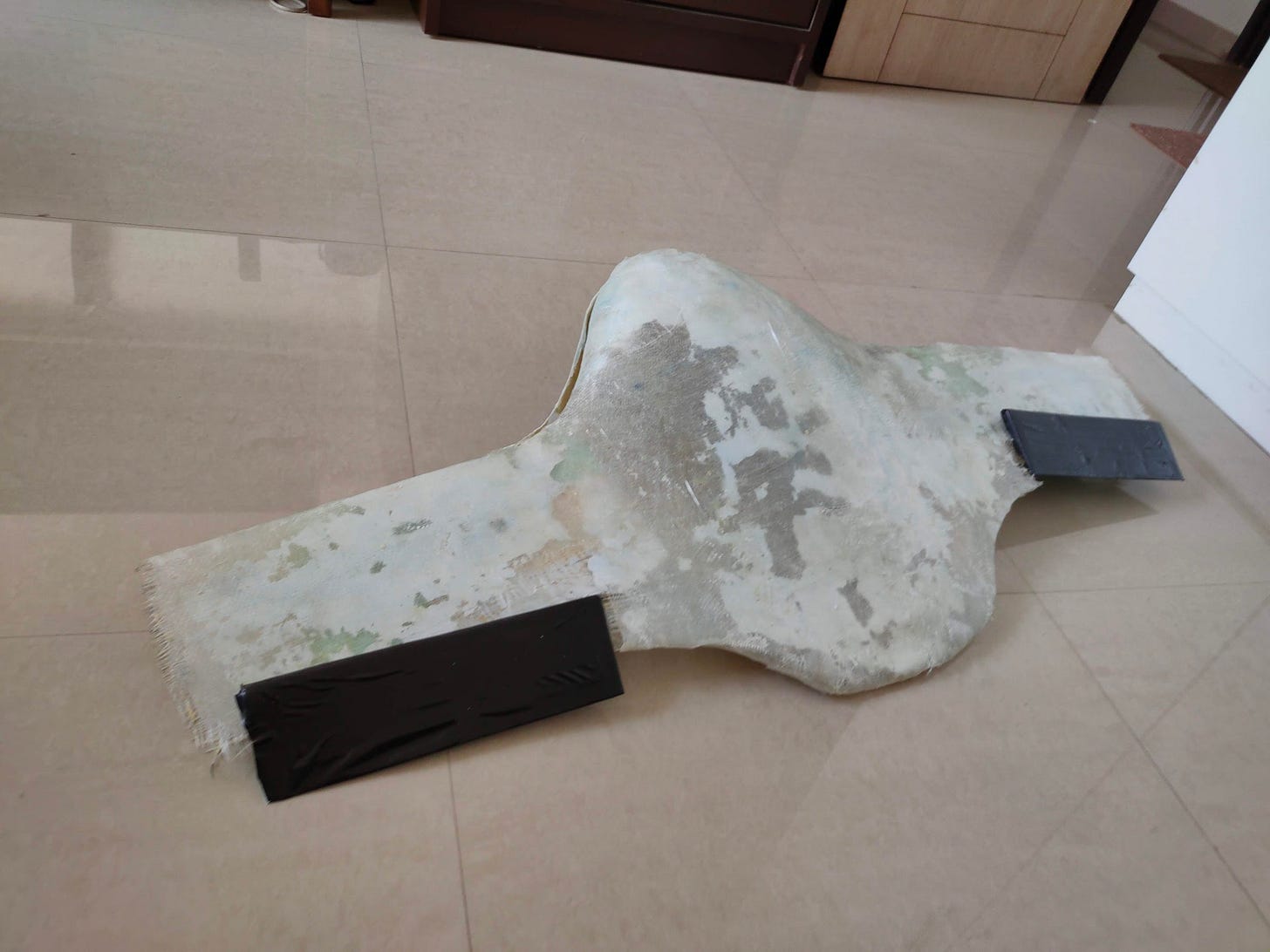

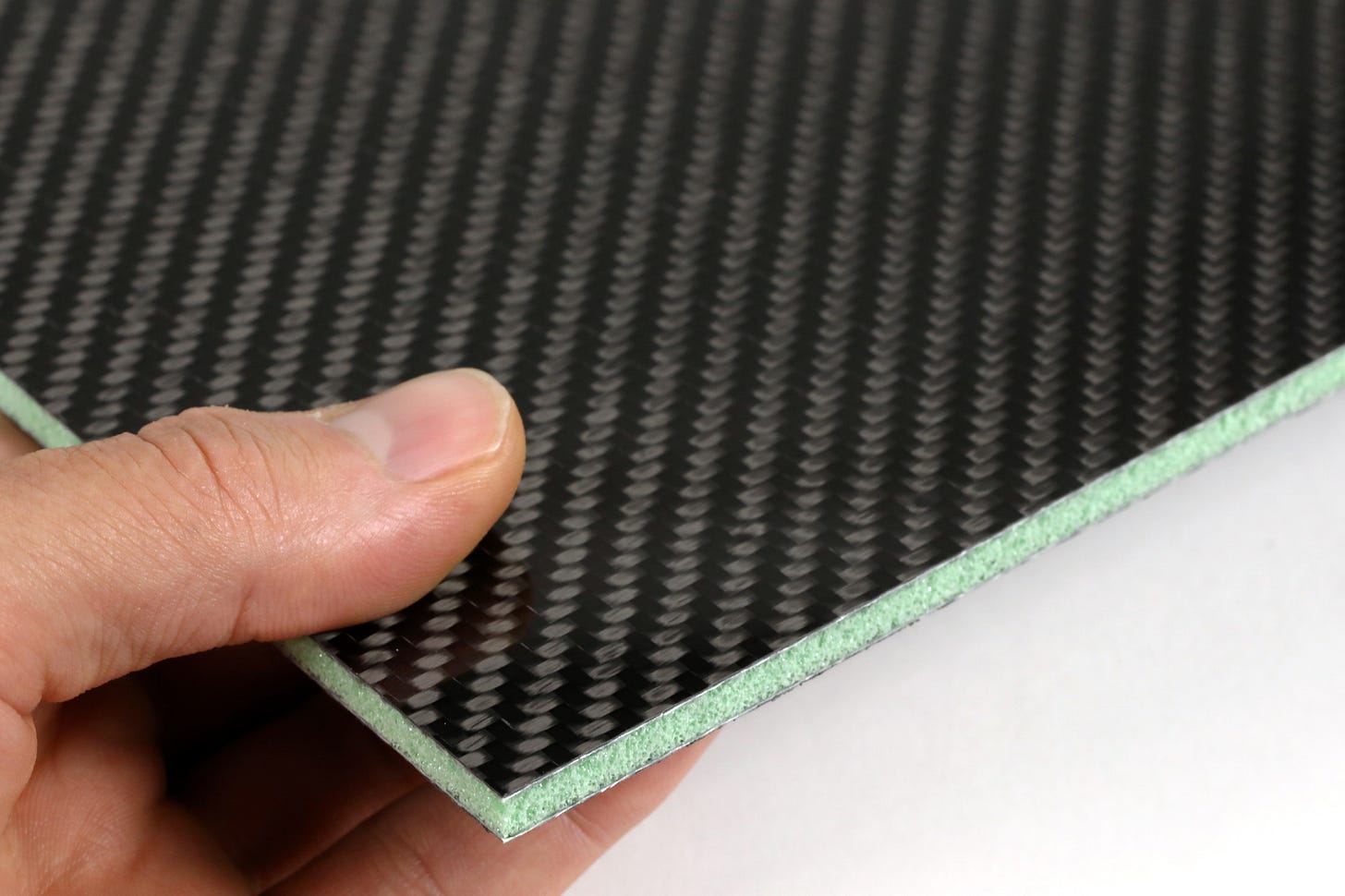



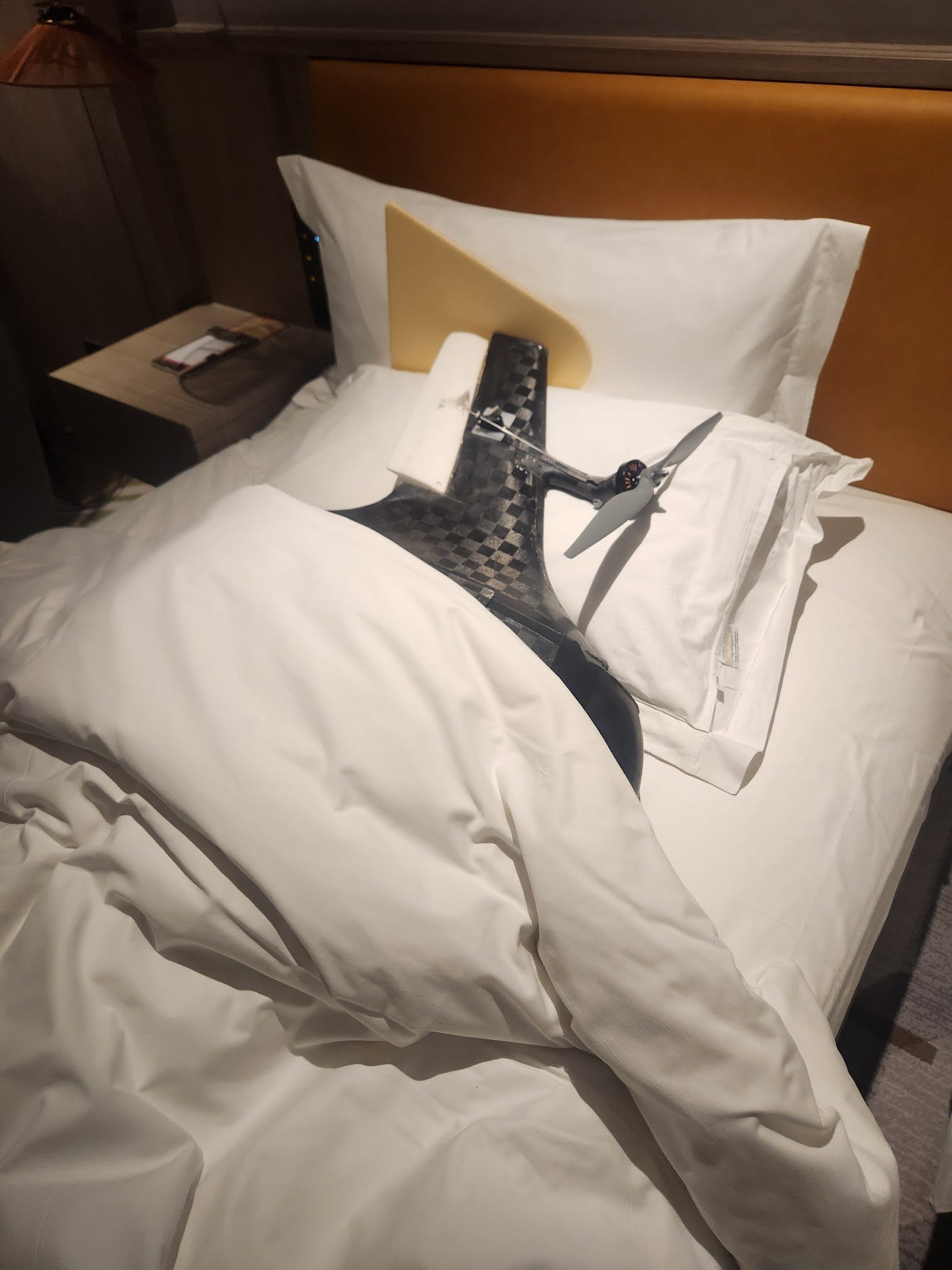

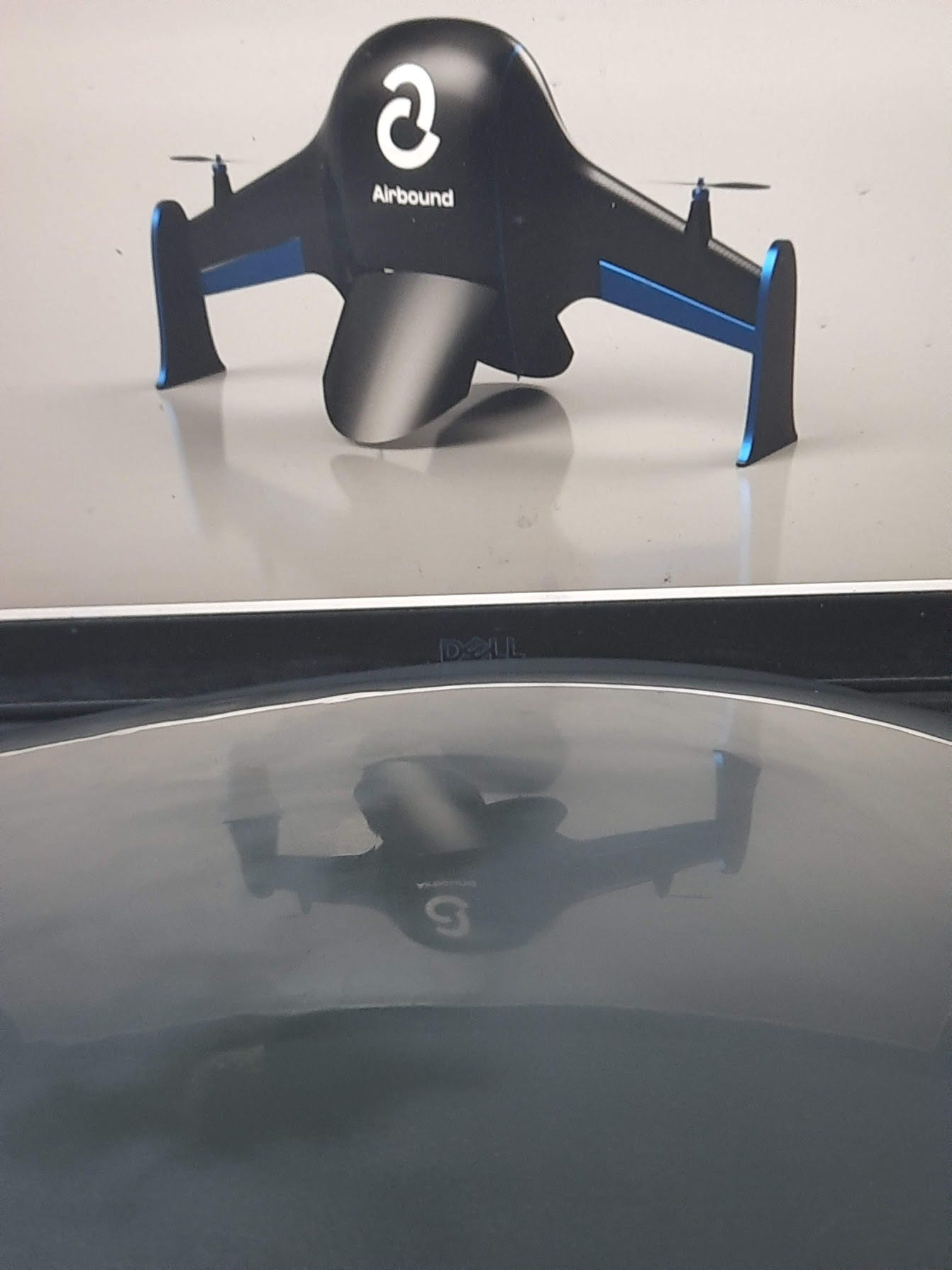
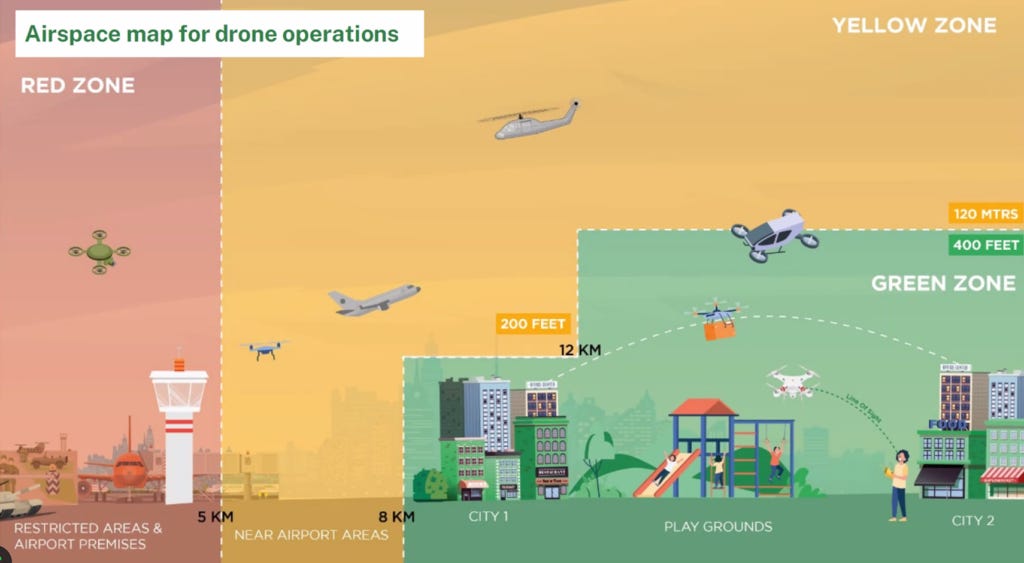
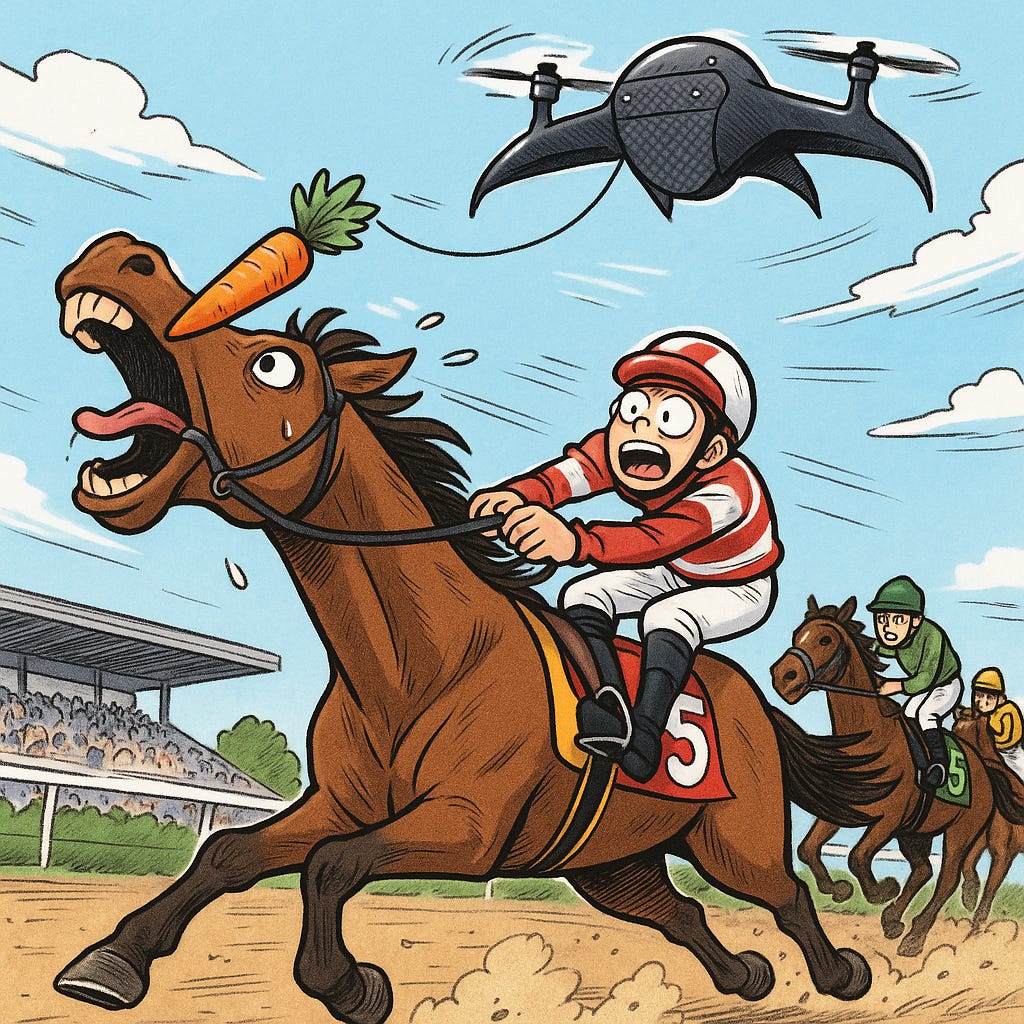

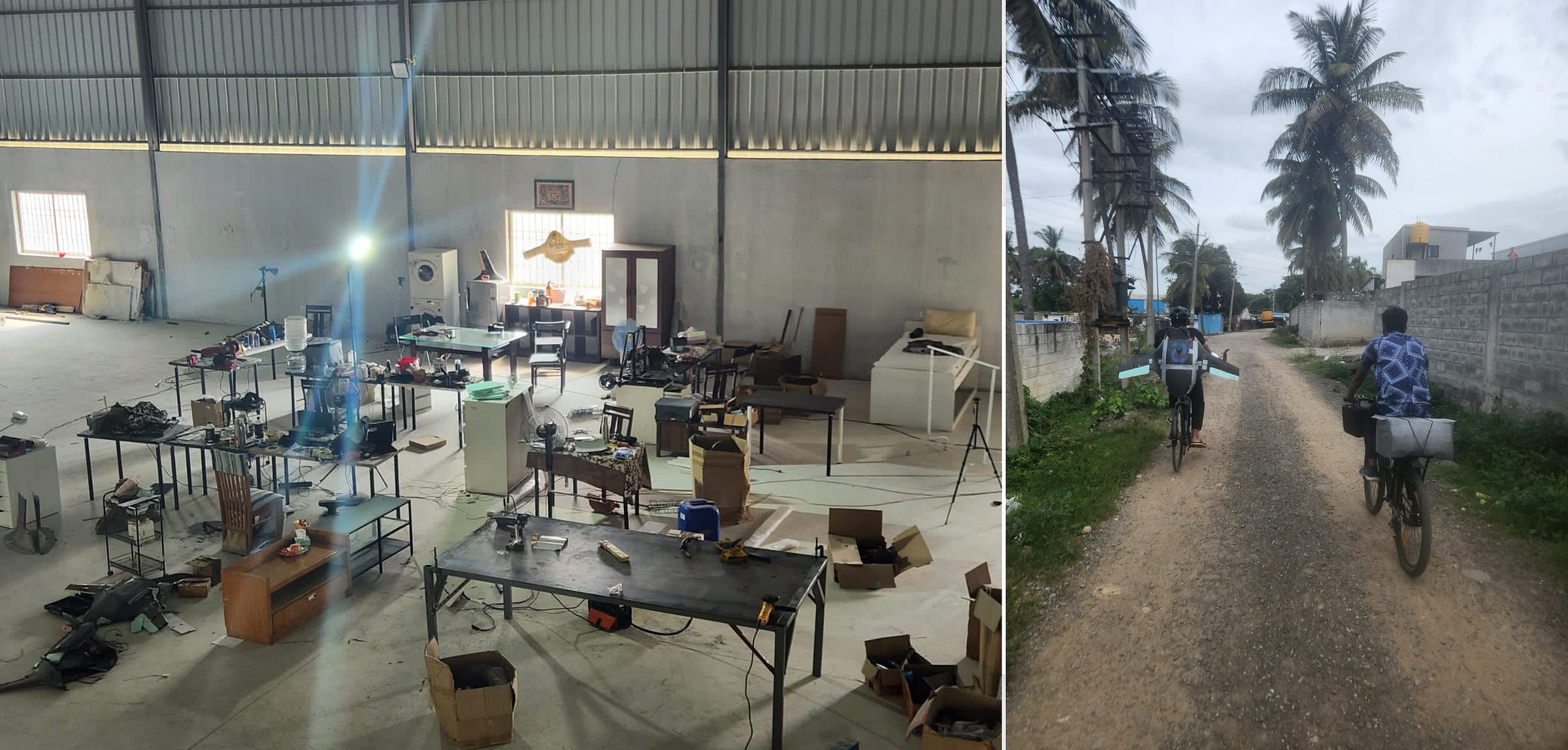


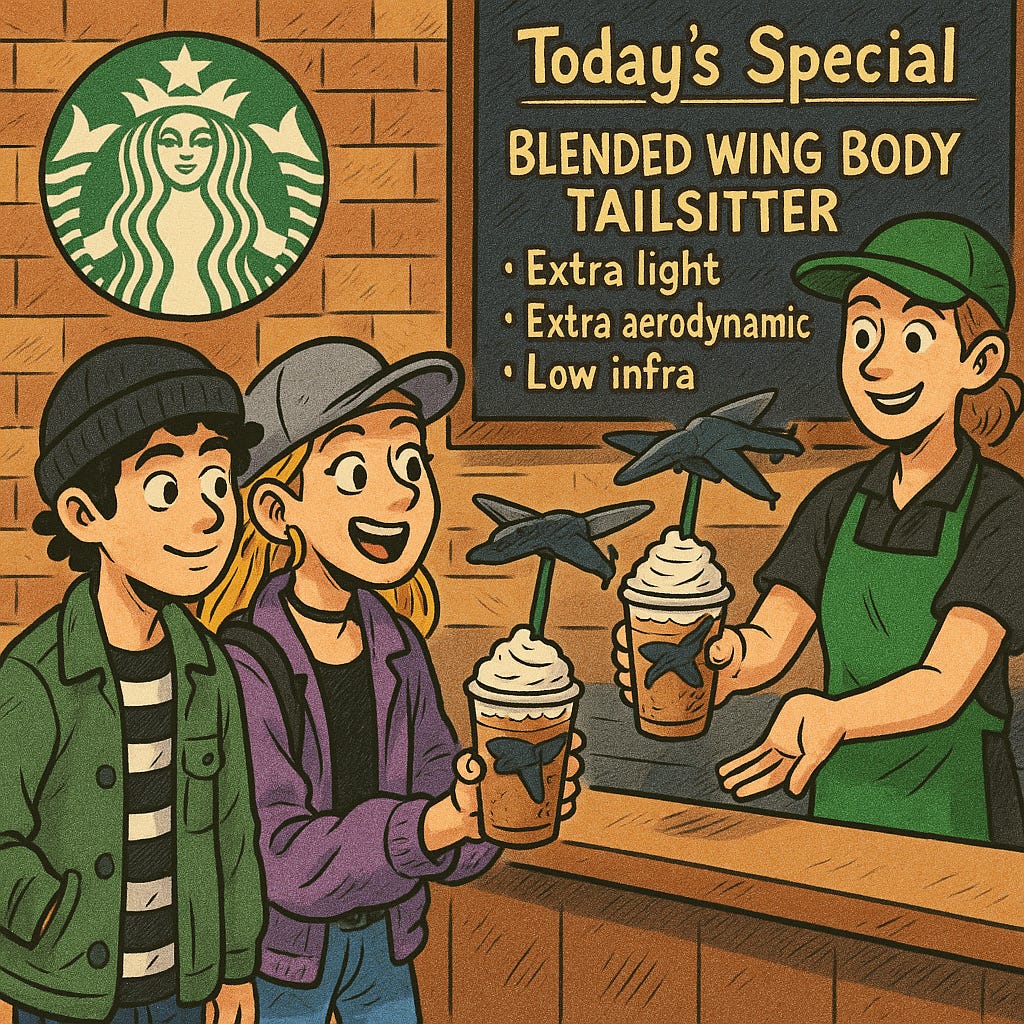
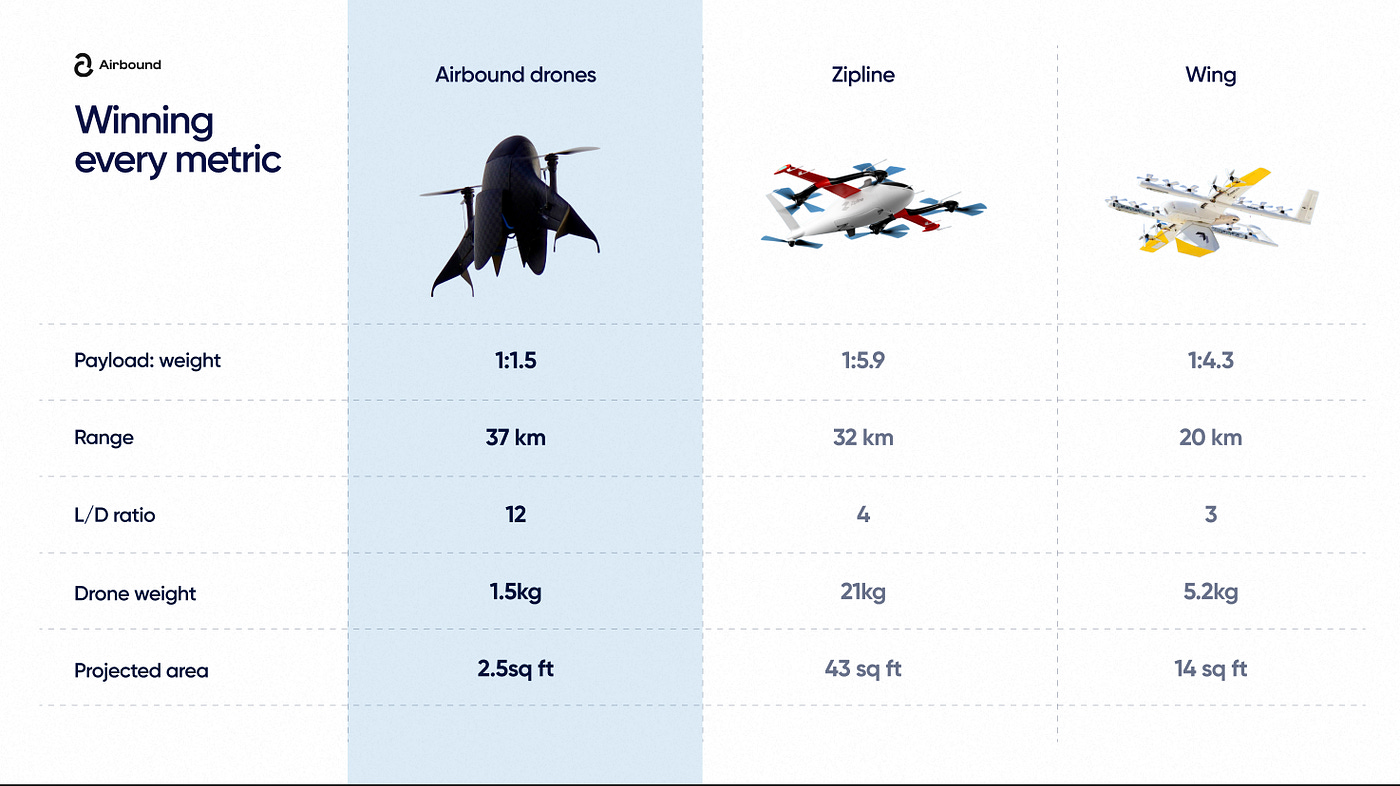






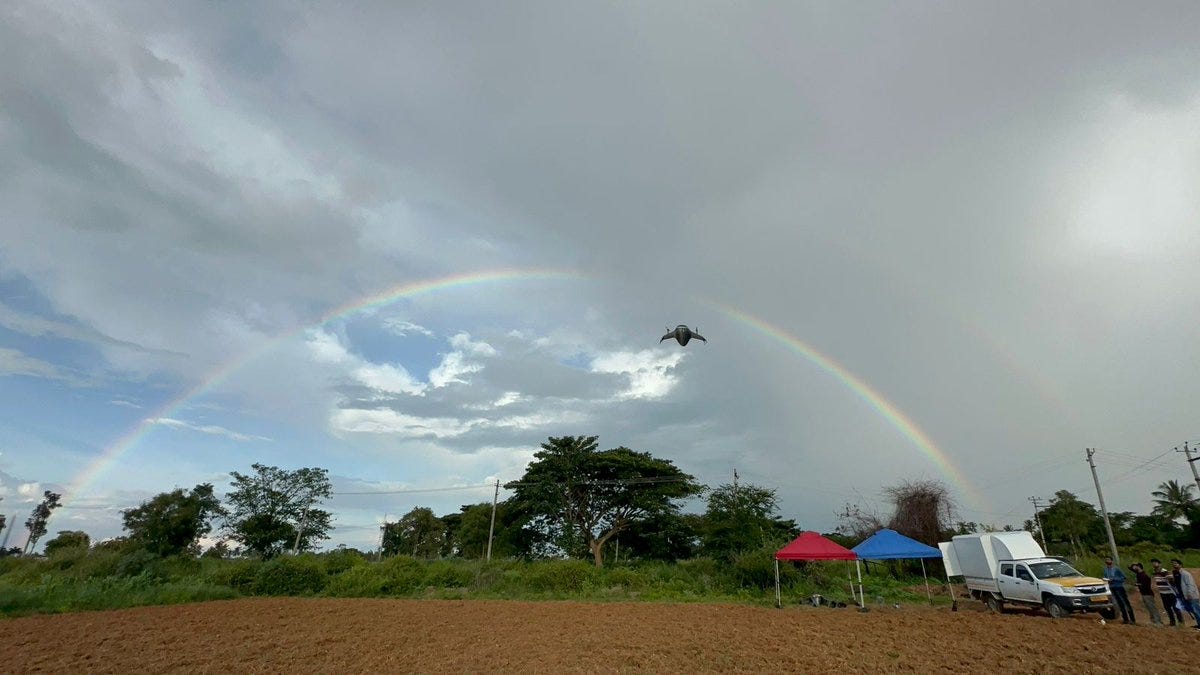
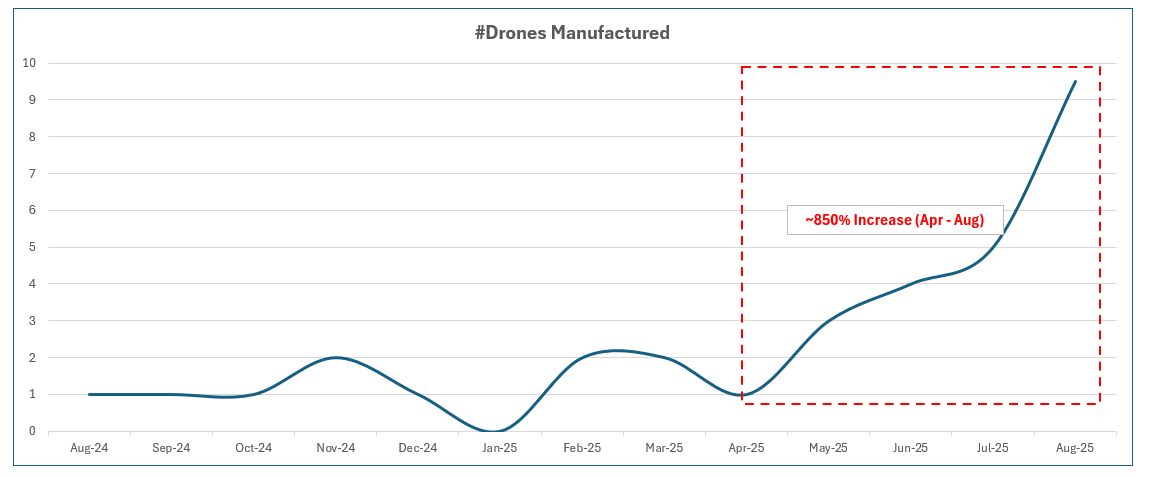
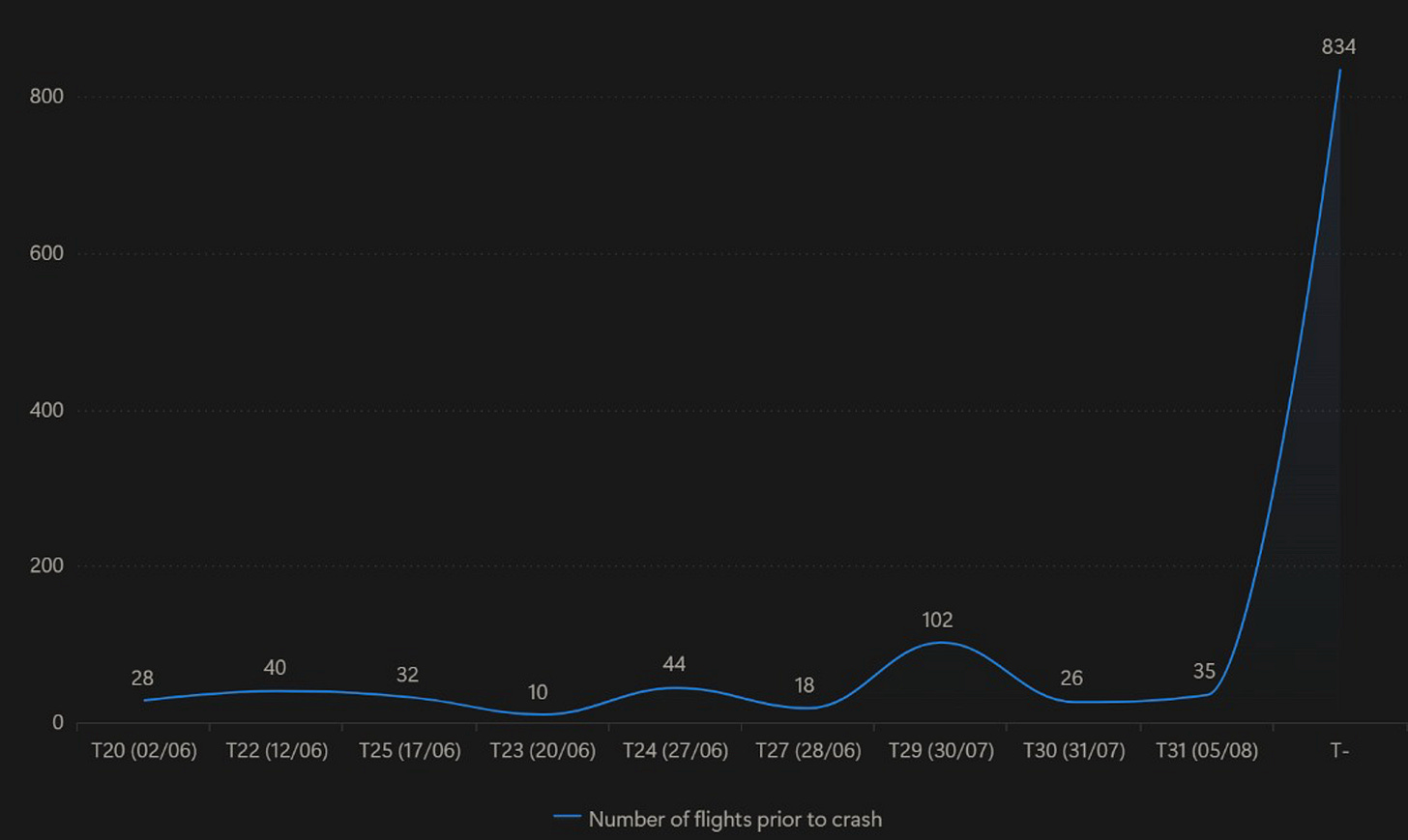
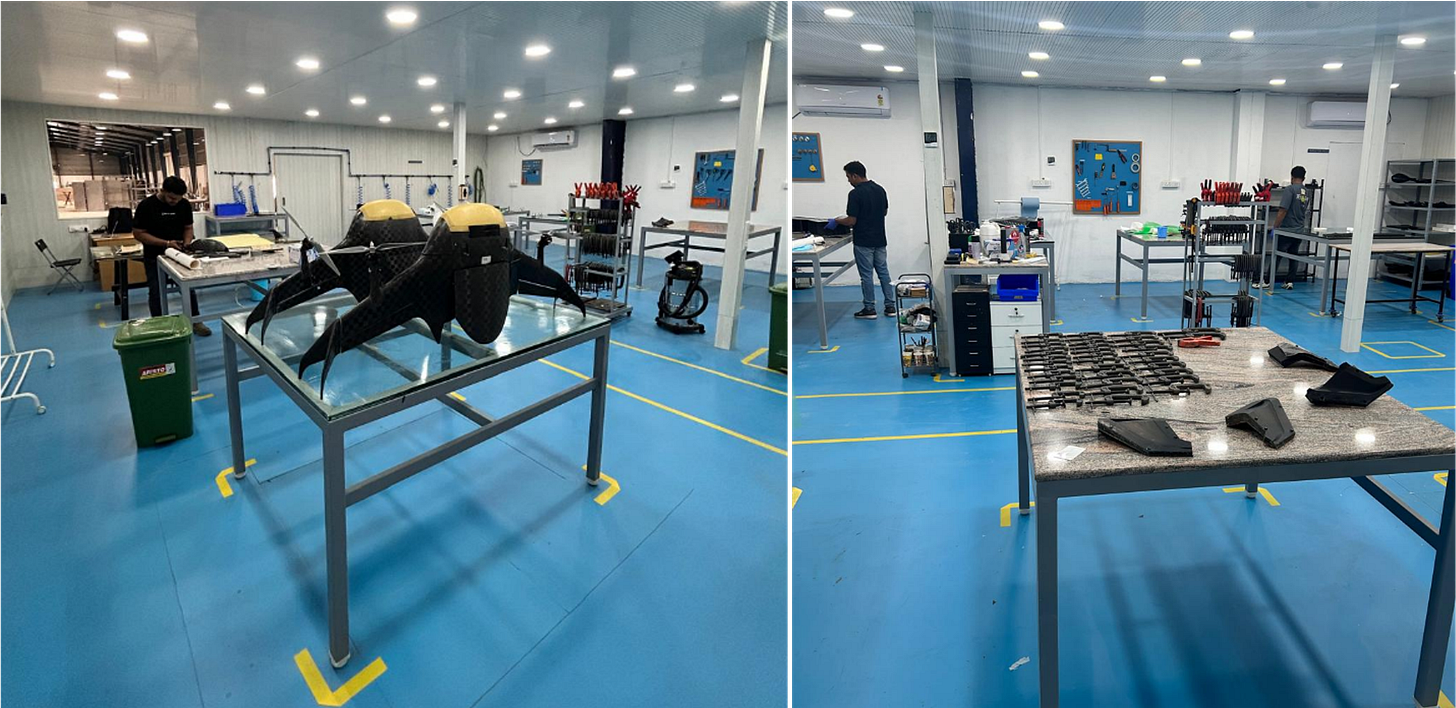
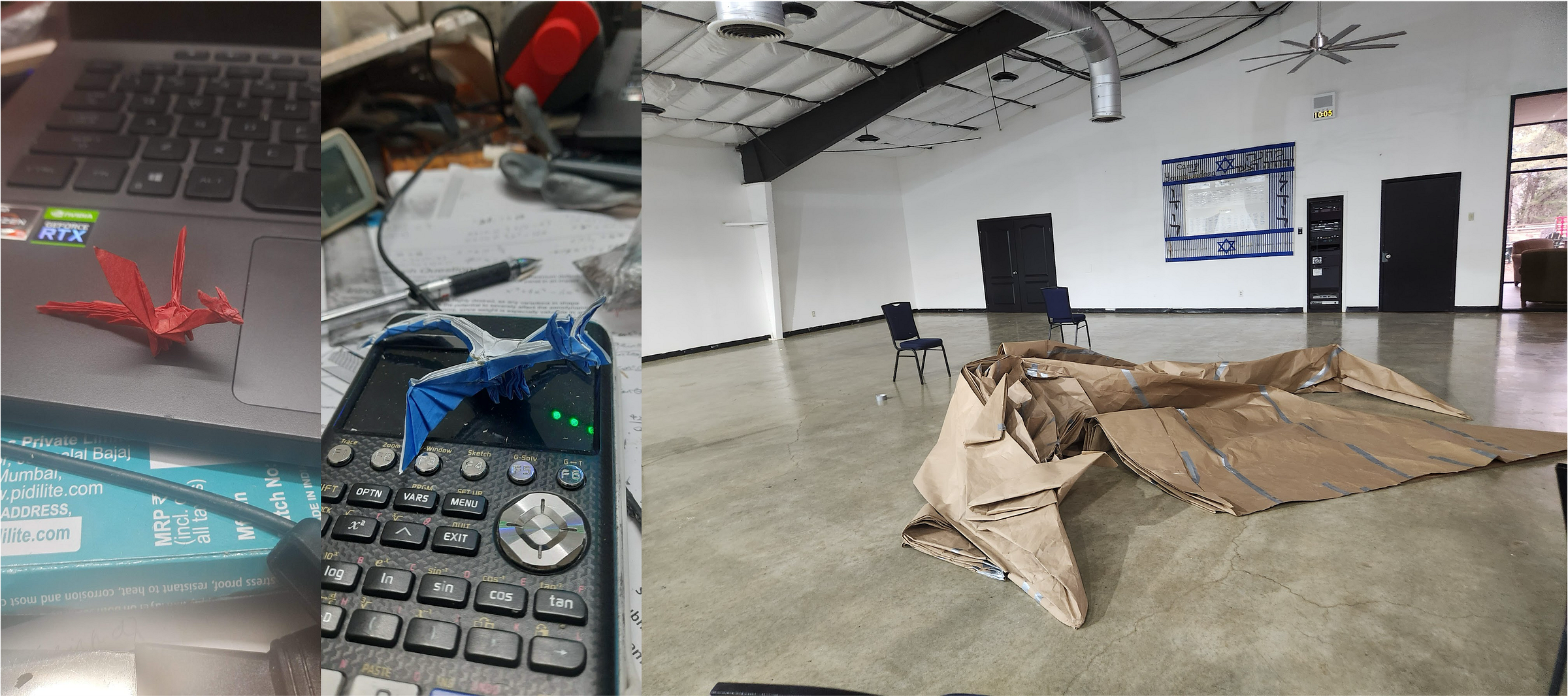
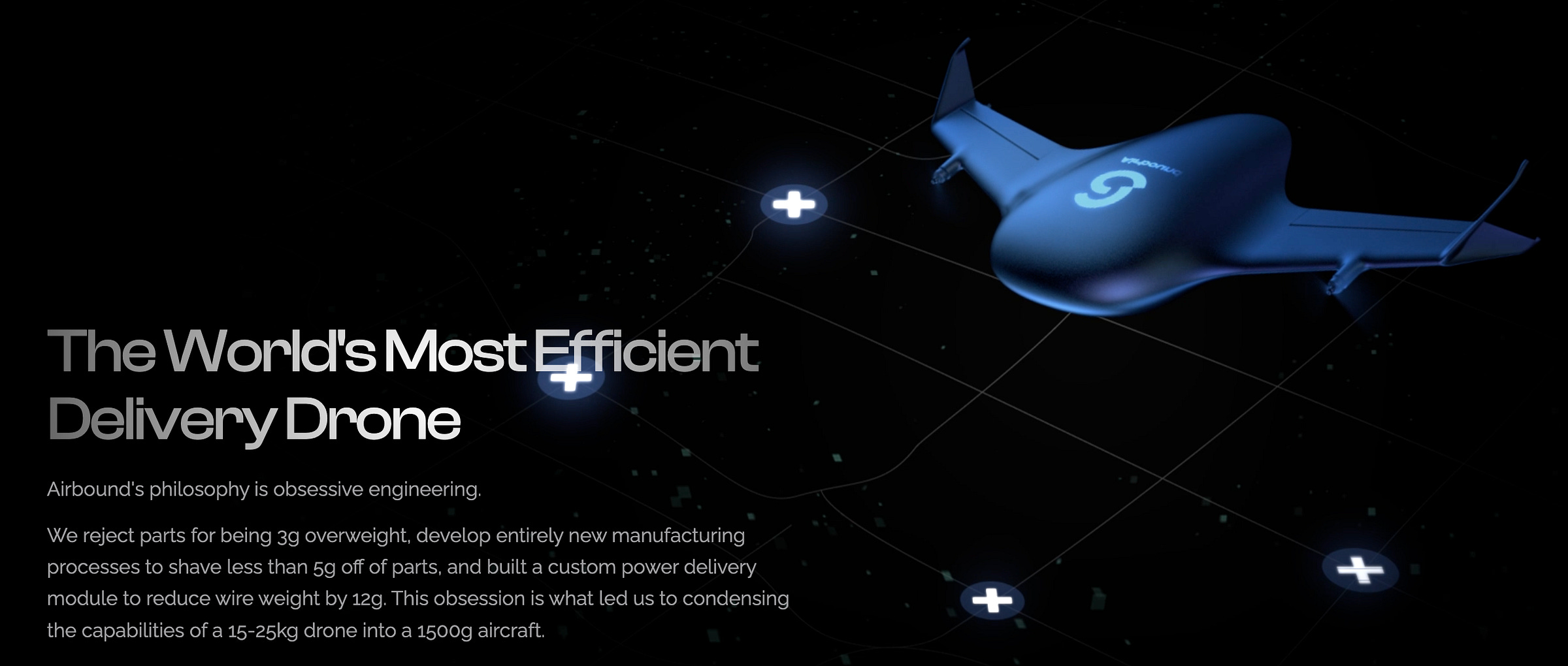
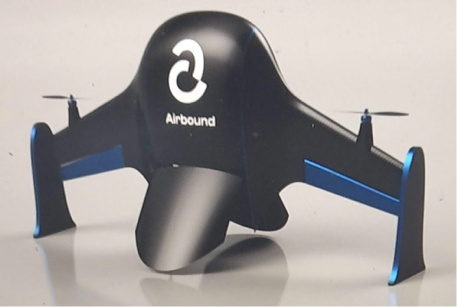


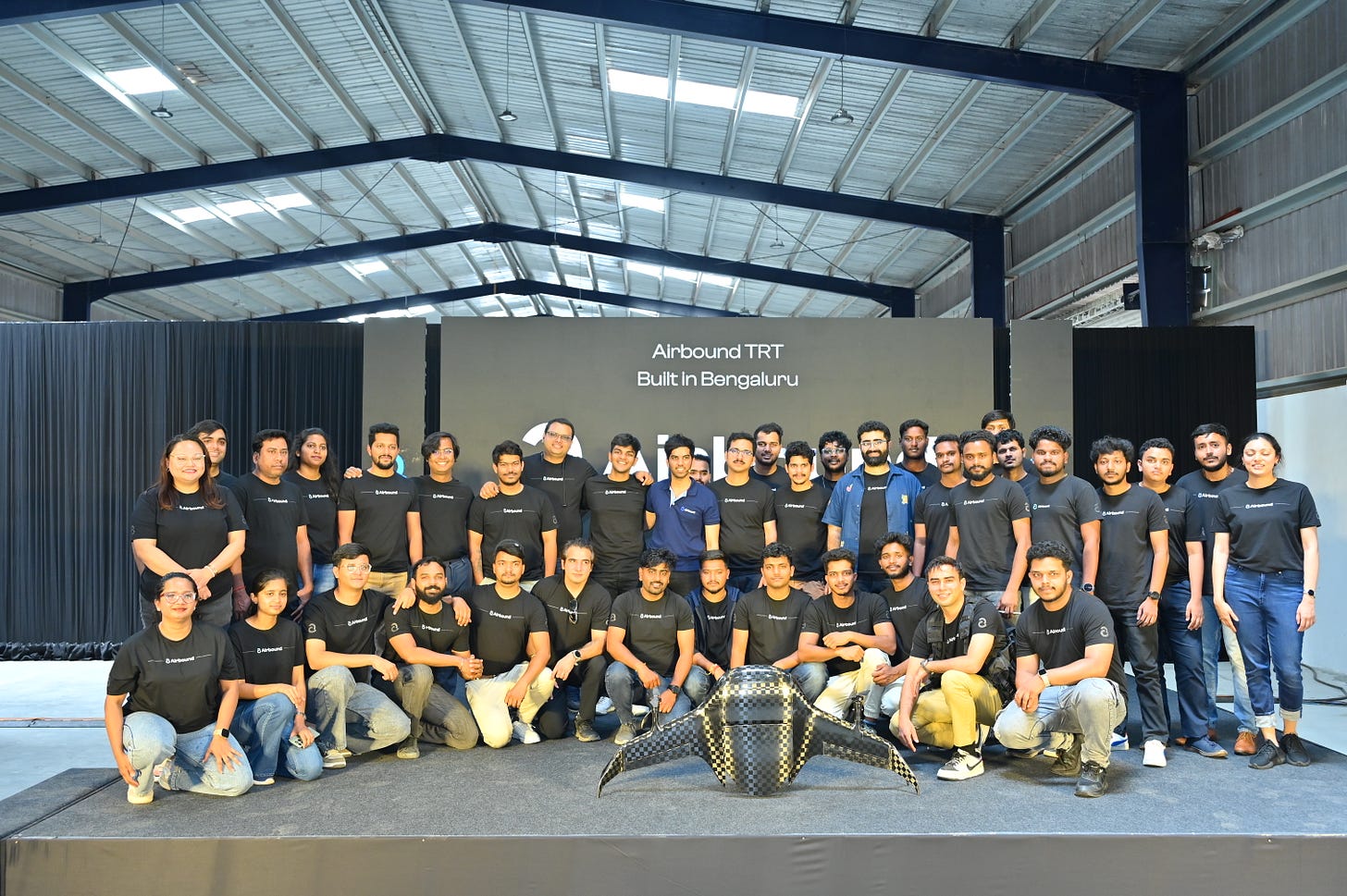
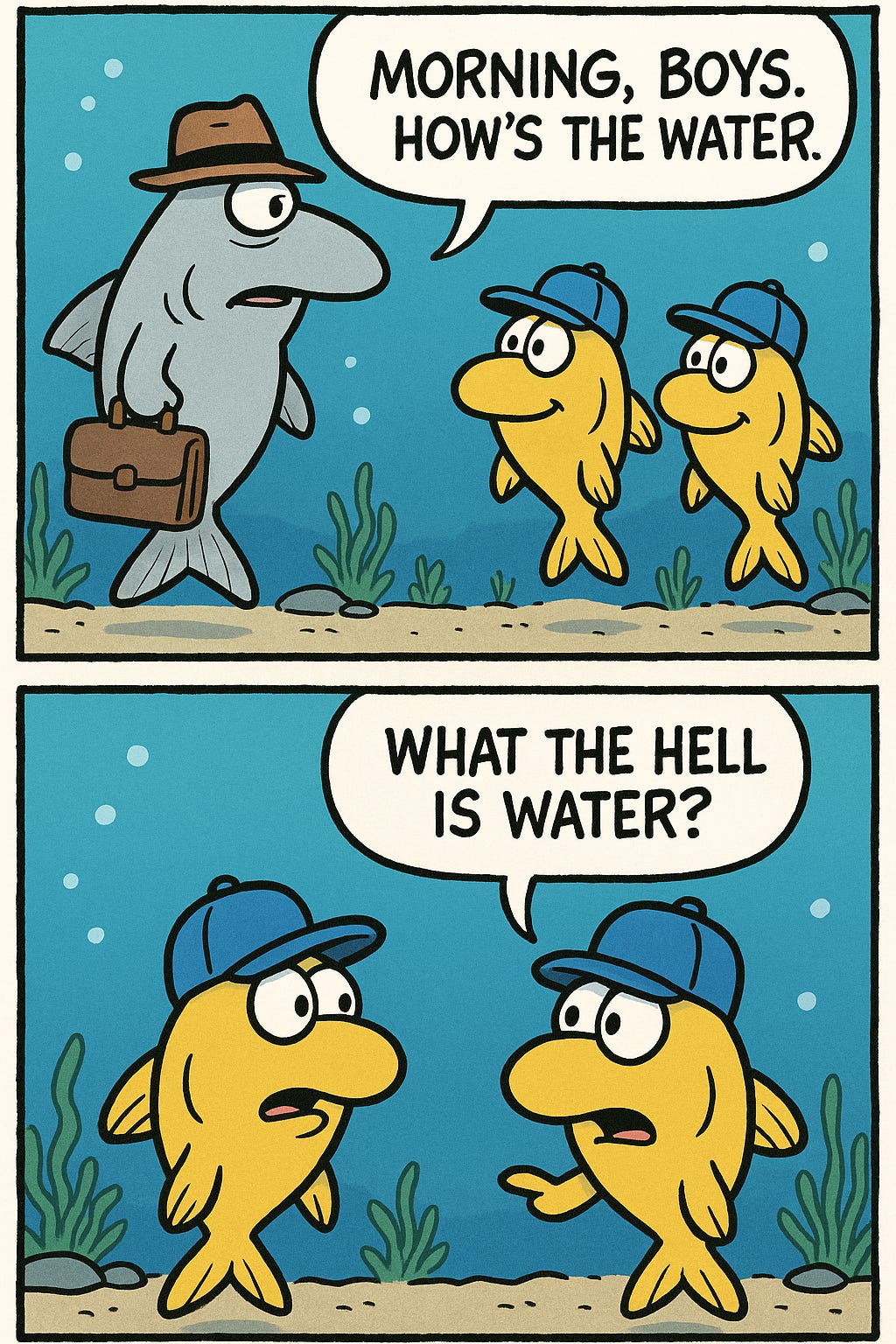
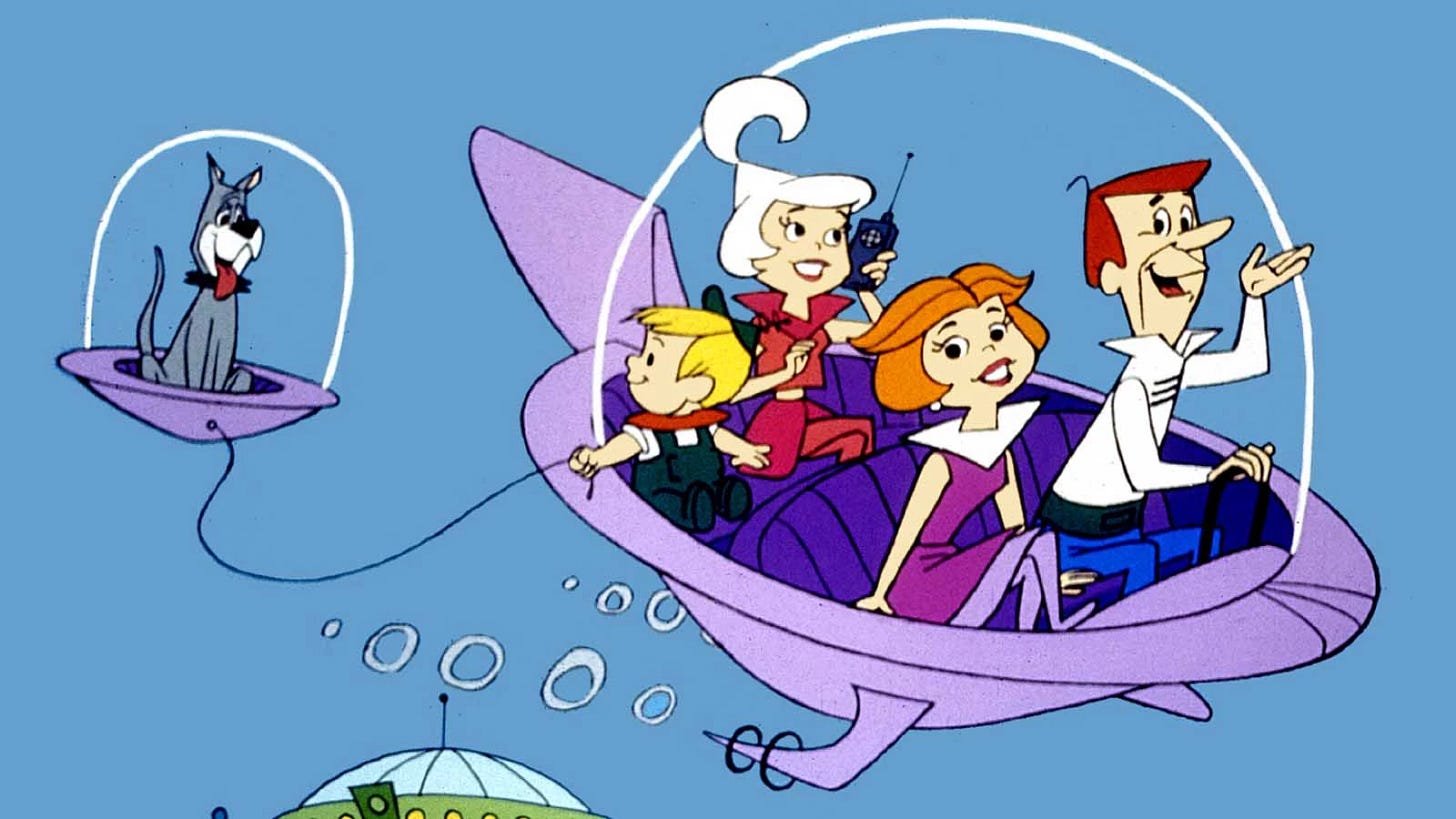
Very interesting. I wonder what the closest peers are in terms of cost per kilometer of delivery cost
This is a fantastic pice of writing and an incredible story! All types of technical concepts have been introduced very well to fully grasp the thought process that Naman went through.
Wonderful to hear such stories of youth who have the grit to take the path against the grain. They are the kind of role models that we all need to make us beleive that anything is possible if we apply ourselves to the task.
Wishing Naman and team all success to bring about the change they wish to see.